Electrical Component Cross Sections
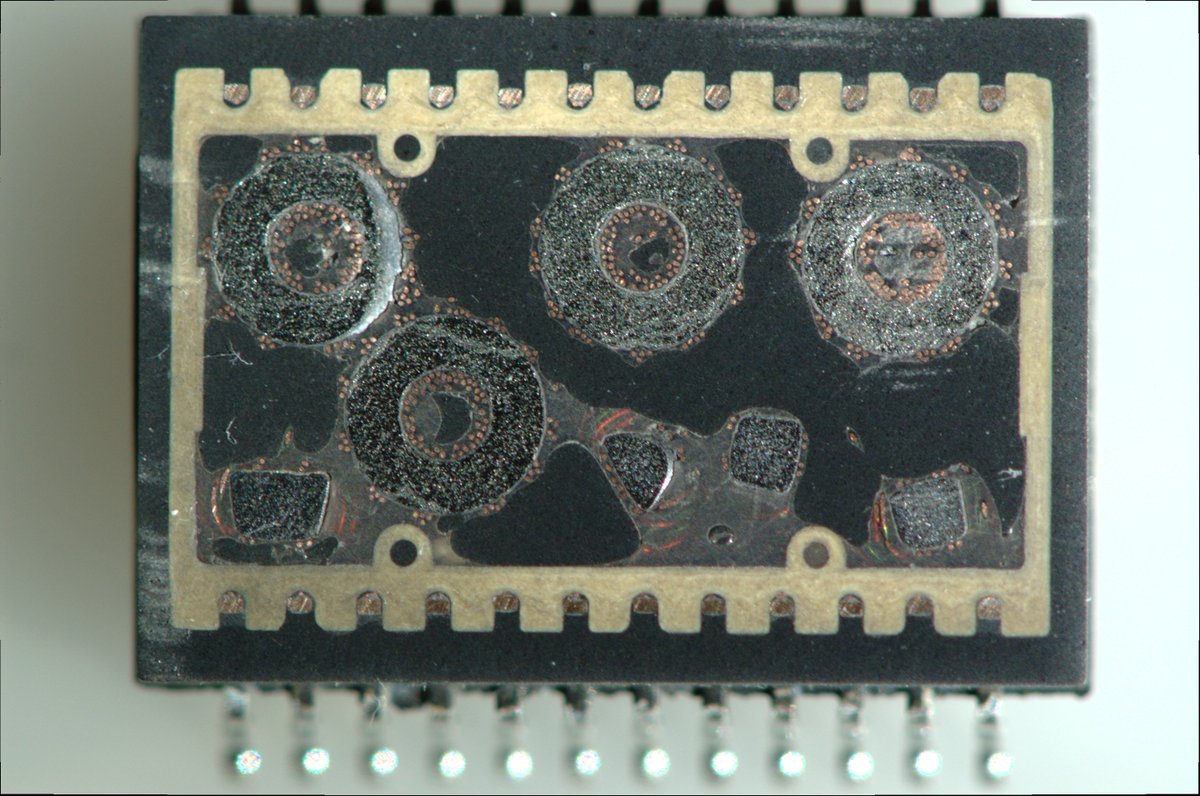
here's a cross section of an Ethernet transformer. inside a network adapter, there is one of these in between the Ethernet PHY chip and the cable, providing isolation and safety.pic.twitter.com/I59XbYzn7M
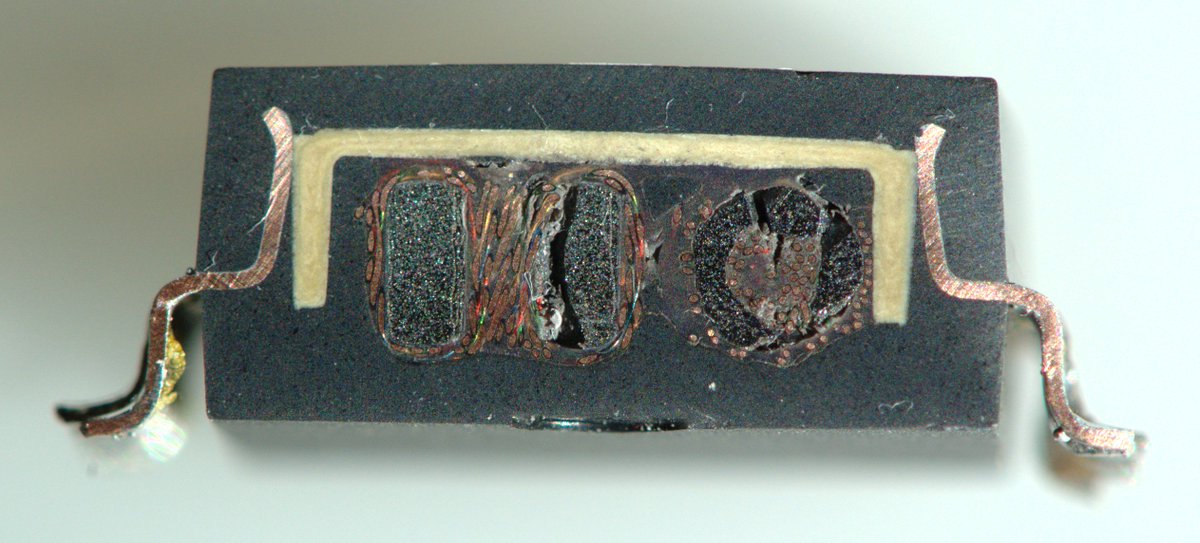
here's the side view cross section of an Ethernet transformer.pic.twitter.com/1h2s9i5Lom
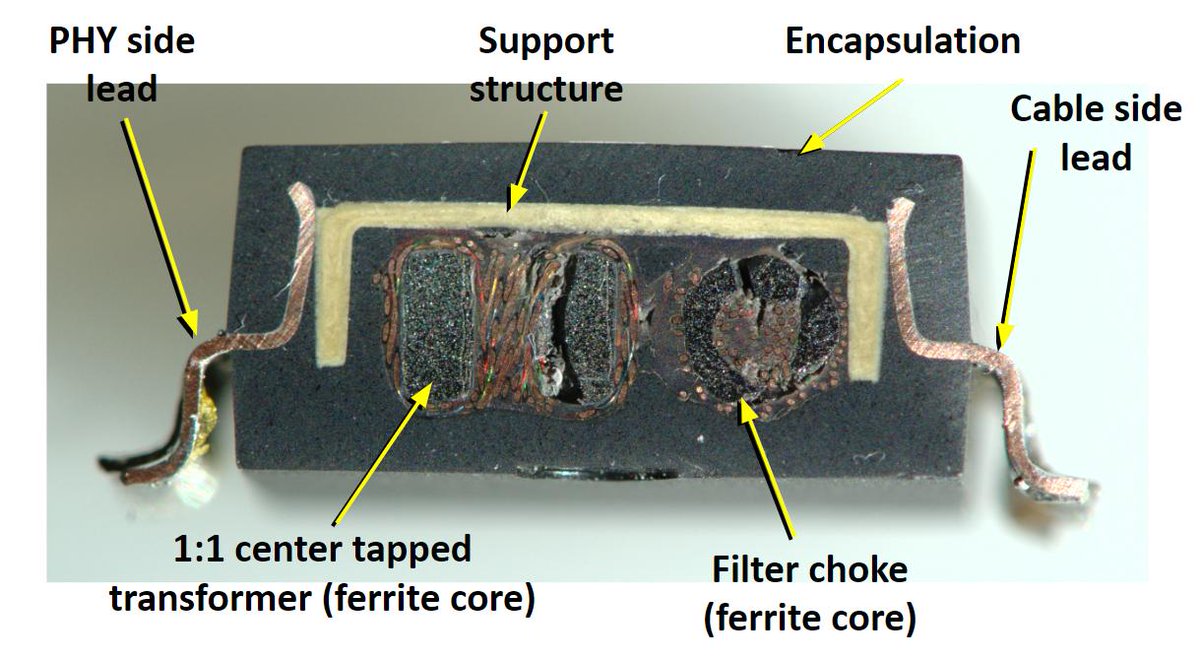
annotated version of the Ethernet transformer cross section.pic.twitter.com/u5XRjiOIrr
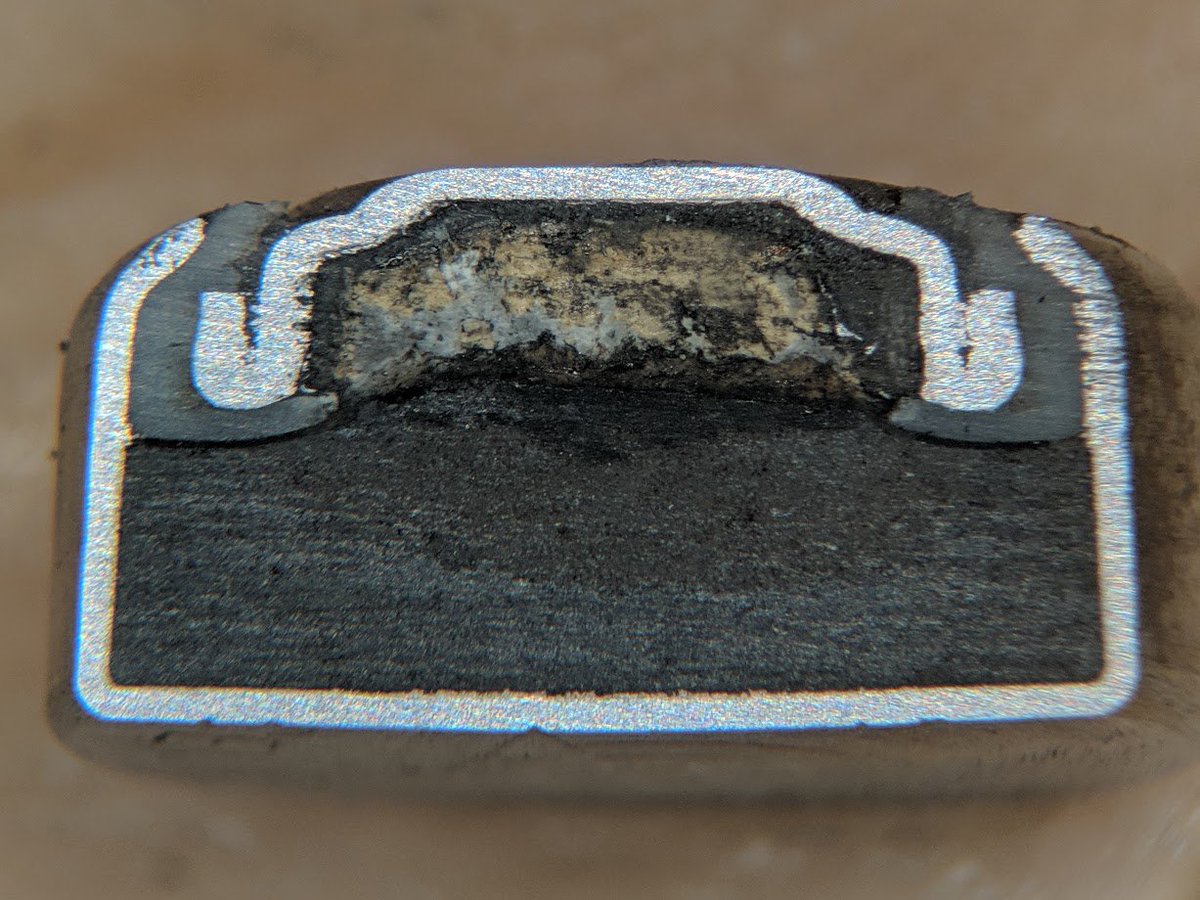
ok don't try this one at home: this is a cross section of an LR44 alkaline button cell! 
 pic.twitter.com/dwj9Q9tdVx
pic.twitter.com/dwj9Q9tdVx
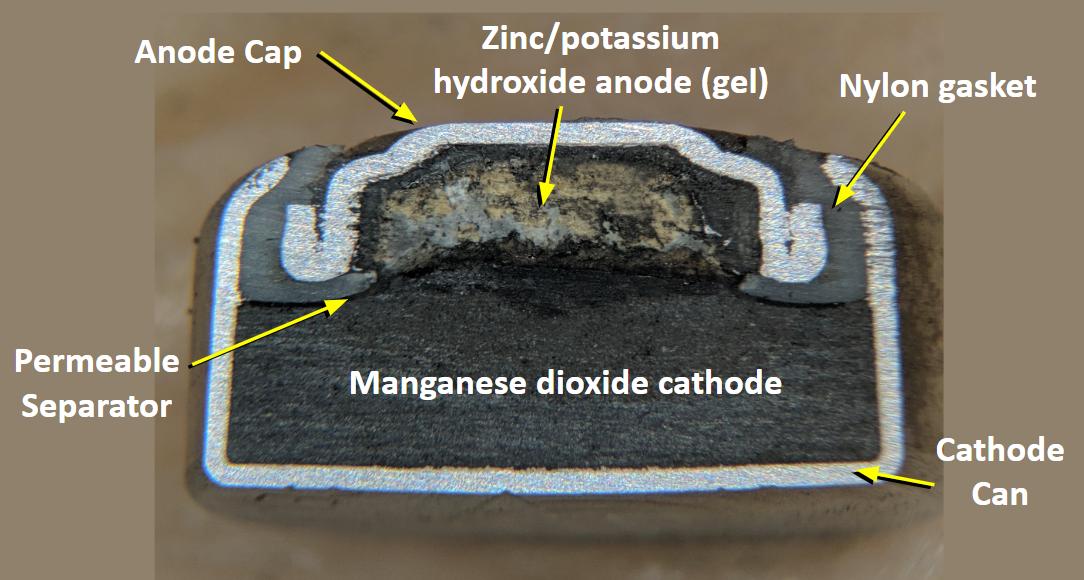
annotated cross section of the LR44 alkaline button cell.pic.twitter.com/hFVVeml8Cl
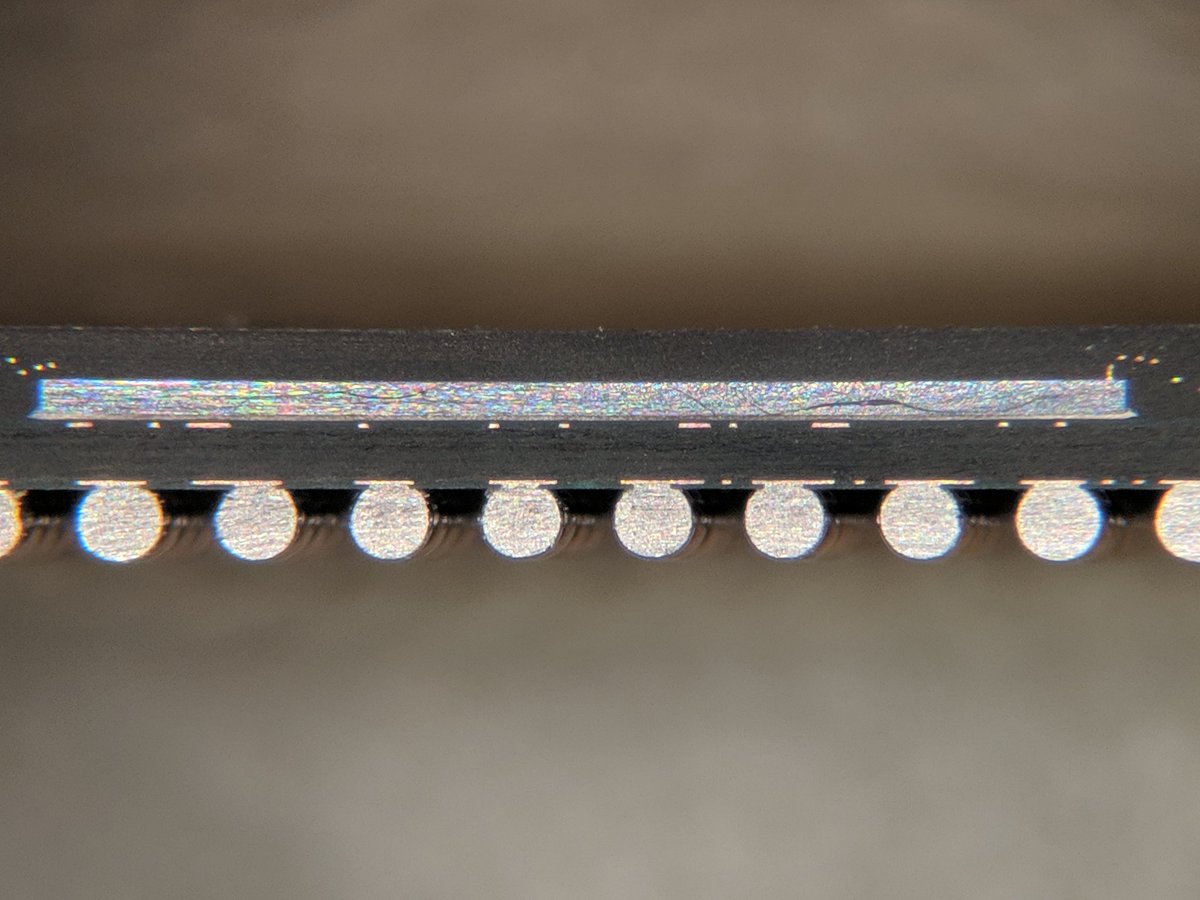
inspect this cross section of a BGA-packaged chip.pic.twitter.com/SQJFT9HU0Q
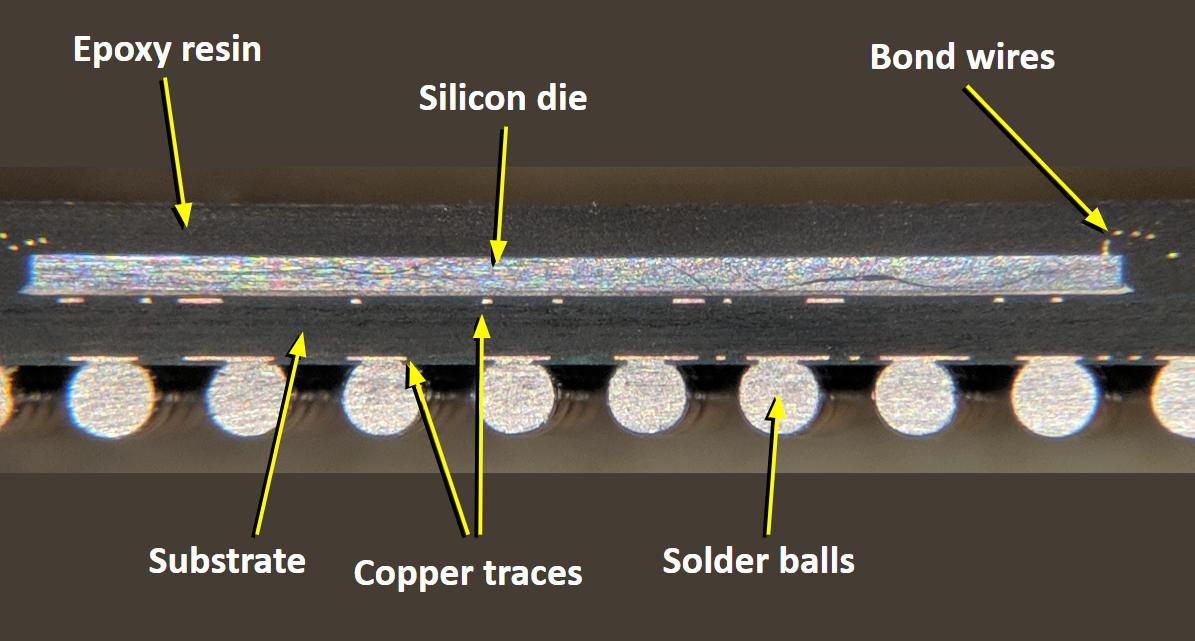
annotated cross section of a BGA-packaged chip.pic.twitter.com/jr4fTewKiF
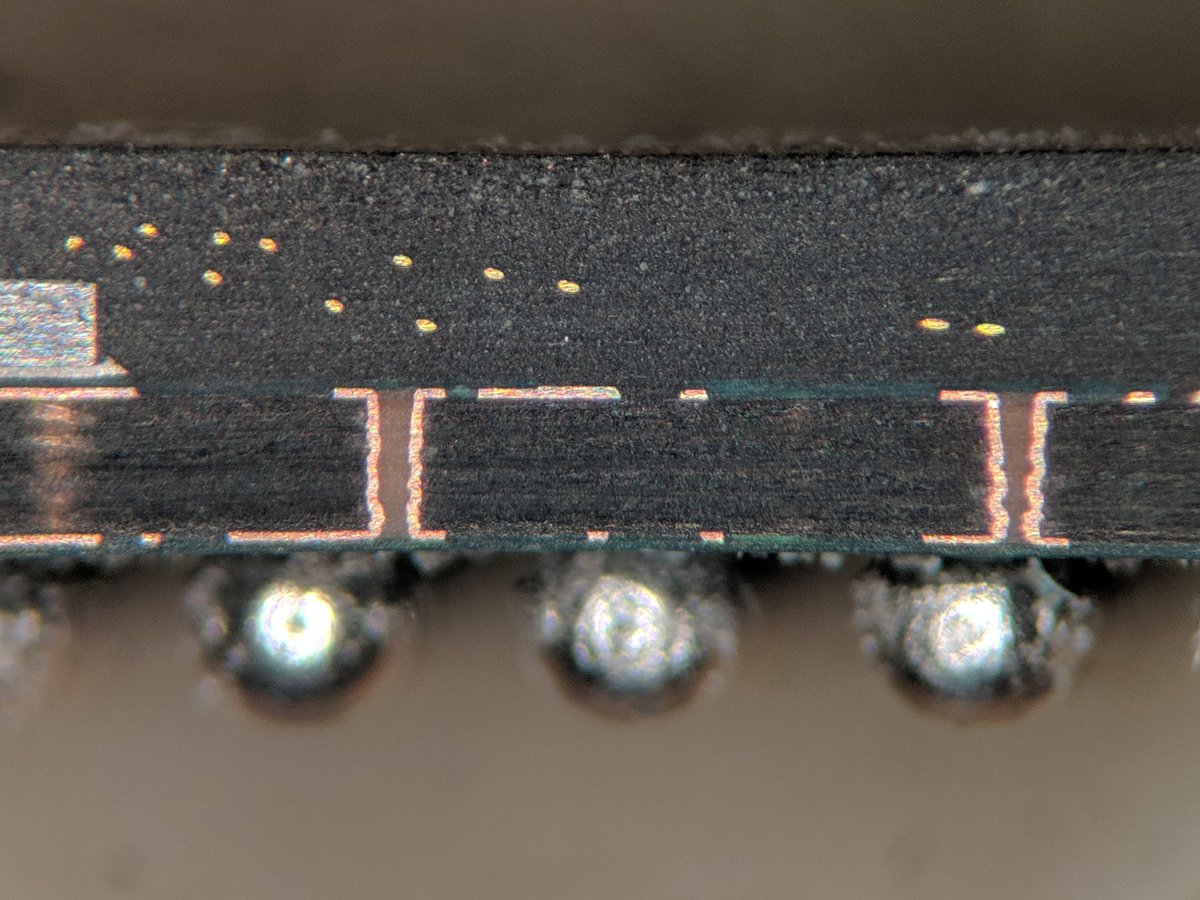
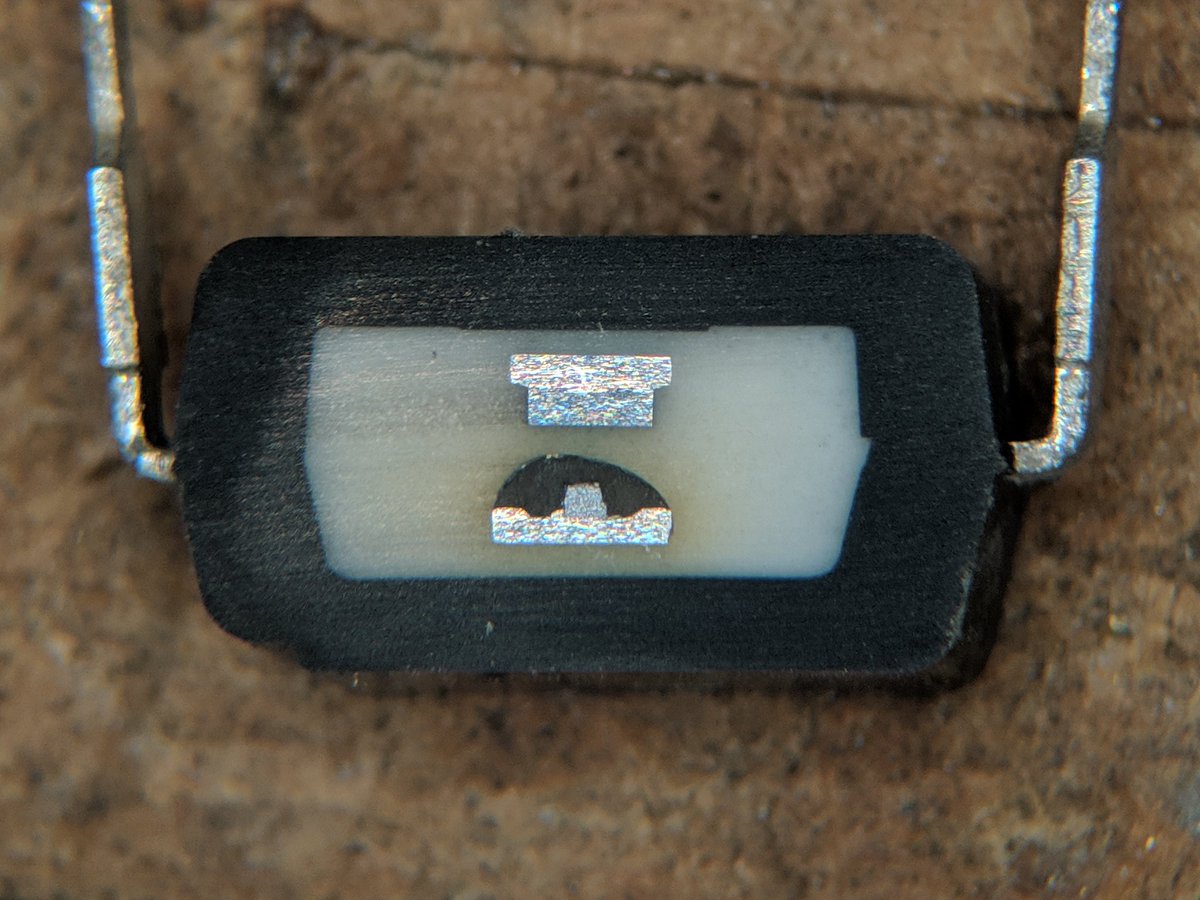
ever wondered what's inside an optocoupler? wonder no more--look Kat this cross section!pic.twitter.com/J3J9UH8WFU
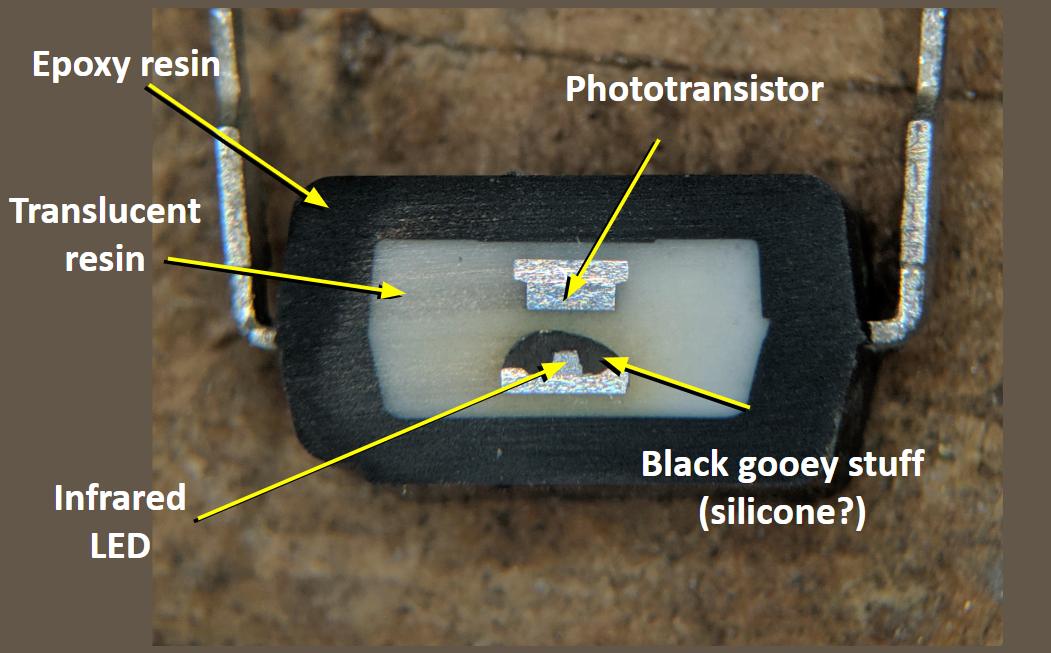
...and here's the annotations for the optocoupler cross section.pic.twitter.com/gEb14aBoaC
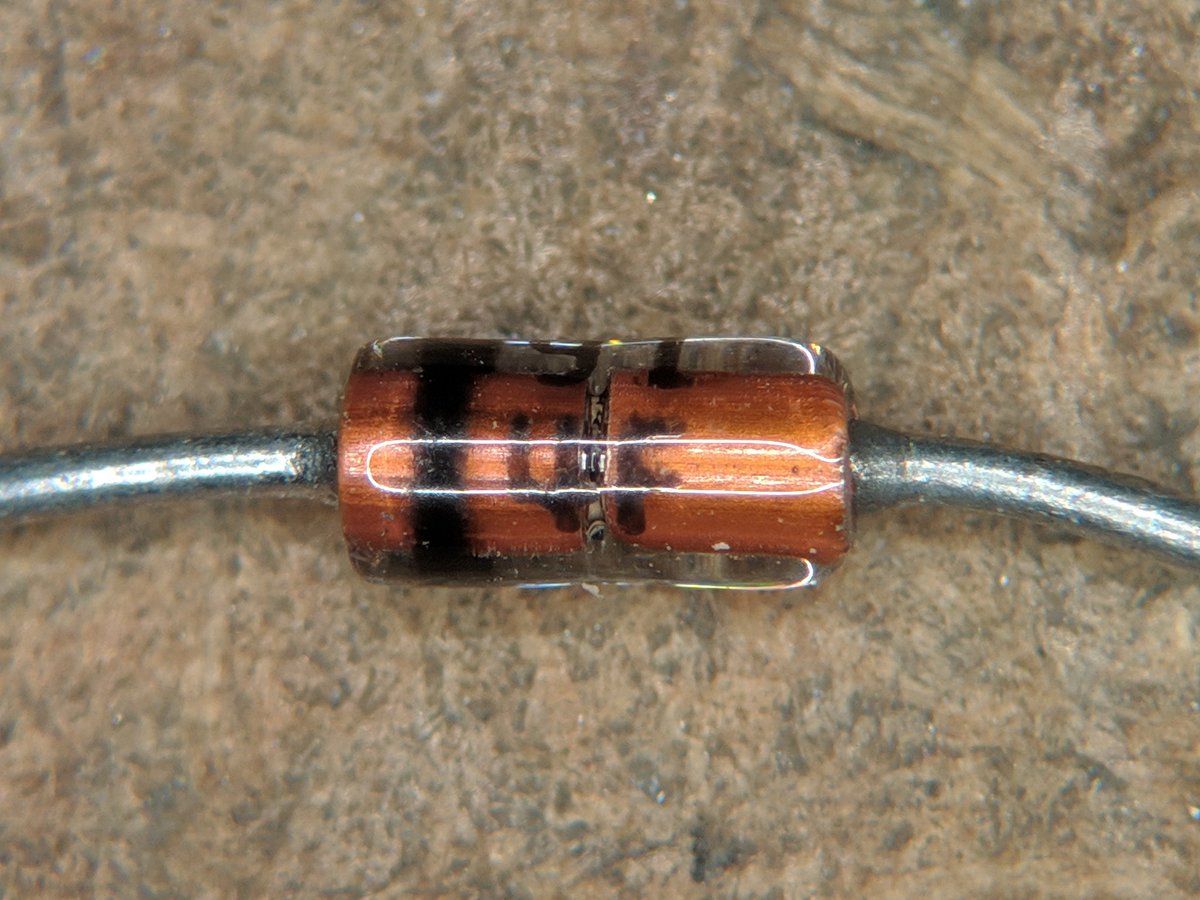
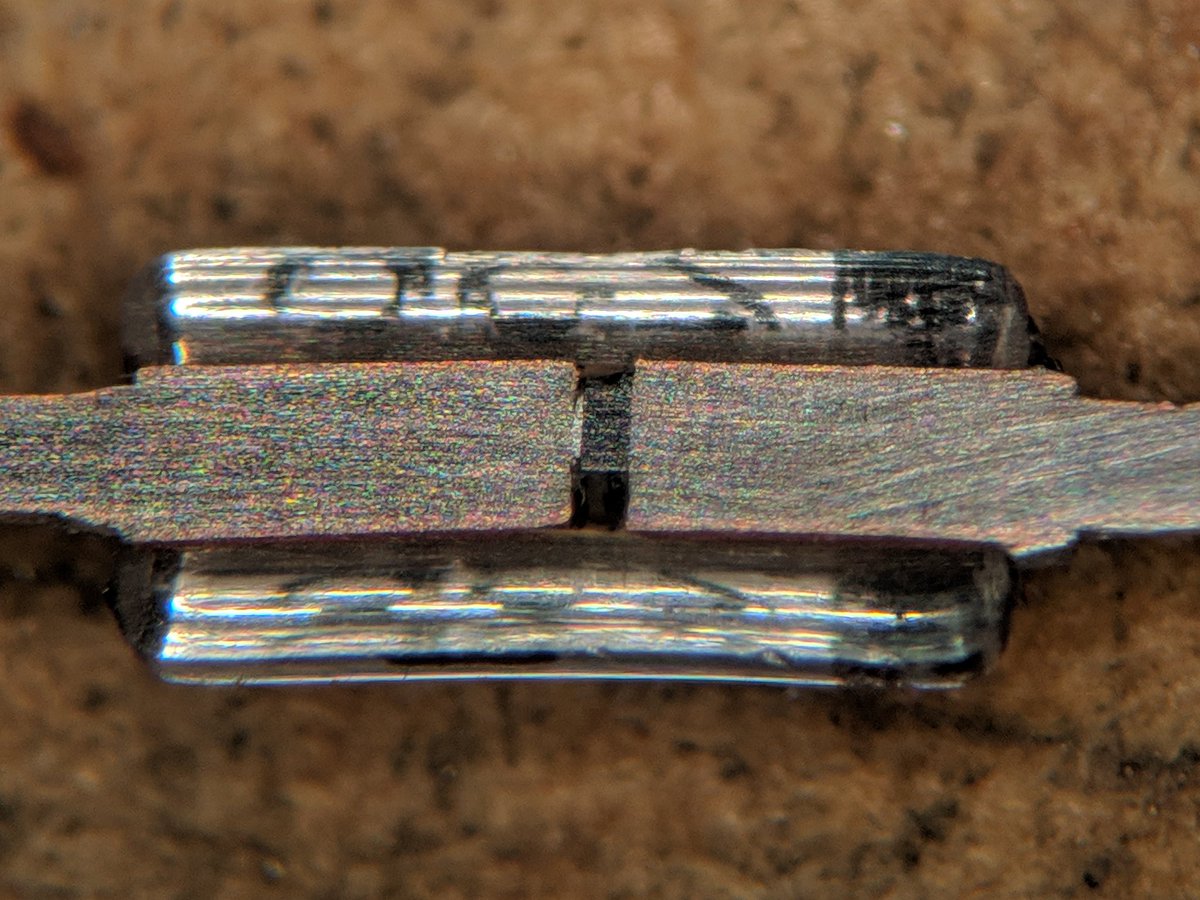
diodes may look simple, but there's subtlety inside them. check out the cross section of this 1N914.pic.twitter.com/BMs42WN6yg
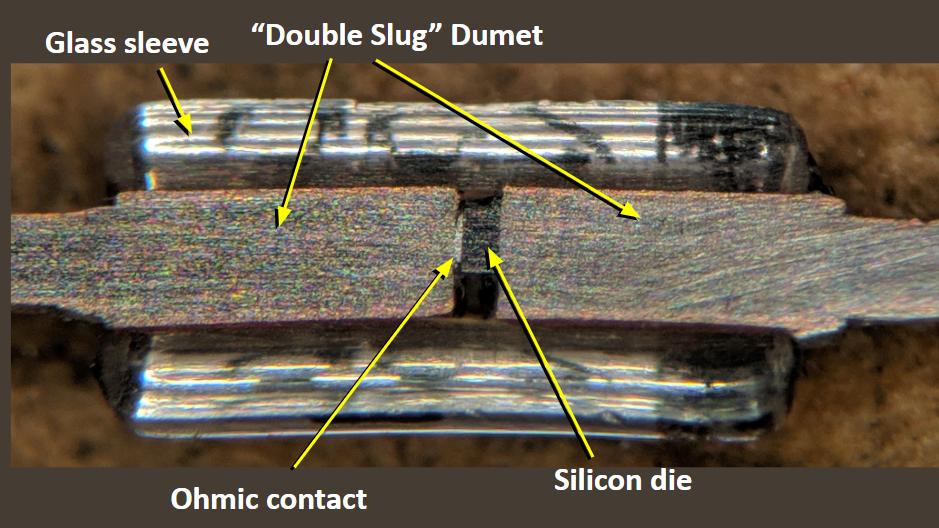
here's the annotated cross section of the 1N914 diode. the two Dumet slugs are separate pieces of metal from the leads, and are brazed together during manufacture.pic.twitter.com/F9A8gcv1aS
look at the slug on the left--you may notice it has a taper at the end. i think this end is inserted last, pushing up against the ohmic contact (dot) that's already plated onto the silicon die. then when it is heated to bond the glass to the dumet, it alloys with the contact.
how does the dot get there? there's a plating bath that applies an AC voltage that's slightly above the diode's voltage rating. only the good diodes get a dot at the cathode end. bad ones break down and plate on both sides. this means they are heavier...
...to sort out the bad diodes from the good ones, they dump the whole lot into a very dense fluid. the bad diodes sink, and the good ones float, so they just scrape those off and use them. forget what fluid they use, it's apparently quite toxic. barium something-or-other?
the sleeves start out with one slug already installed. these all go into special trays. the diode chips are dumped across the tray which is then vibrated at a very specific frequency, causing the diodes to land dot side up!
(source: friend of mine who used to be involved with diode manufacturing way back in the day)
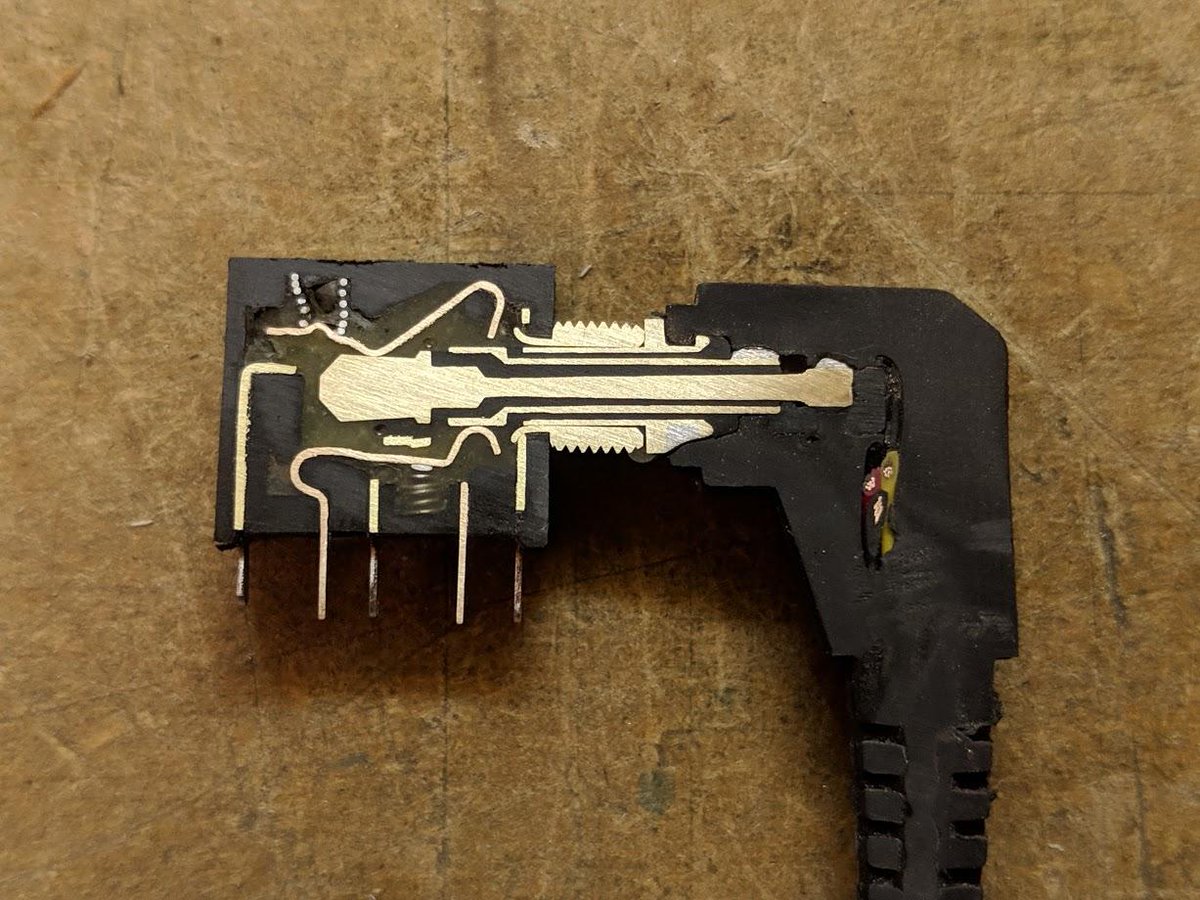
cross section of a headphone plug and jack (aka 1/8" or 3.5mm phone plug). you can see the jack has switches in it. these are often used to disconnect an internal speaker.pic.twitter.com/aWoWKFNCvJ
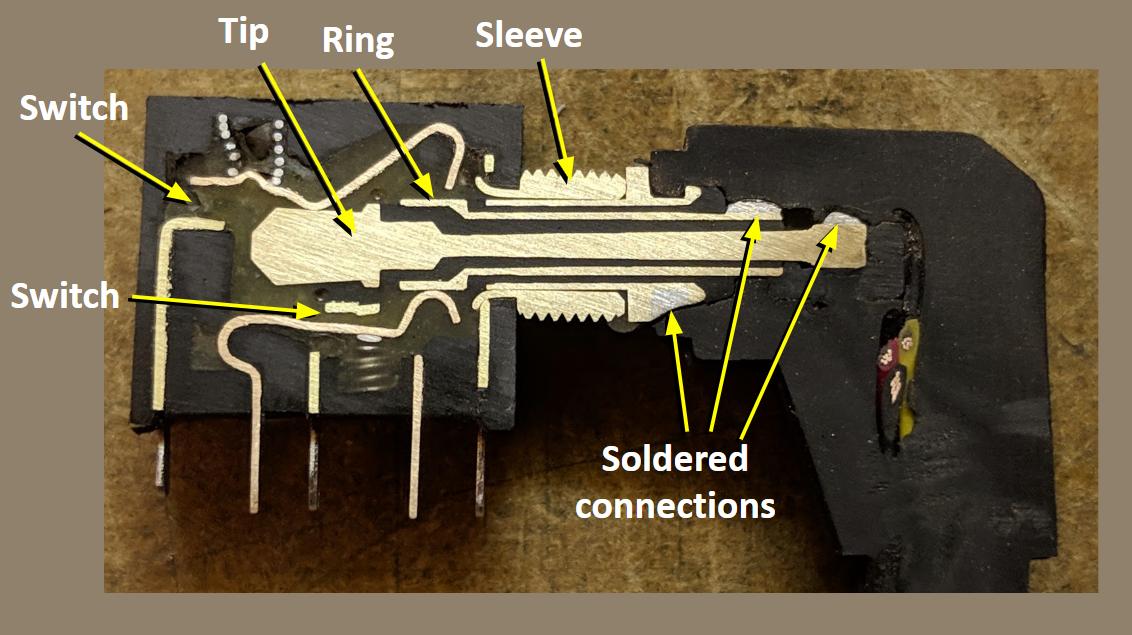
annotated version of the headphone plug and jack cross section.pic.twitter.com/3COqmZ4efY

this is a small audio transformer, but cut in half and polished.pic.twitter.com/tUts6ltSbb
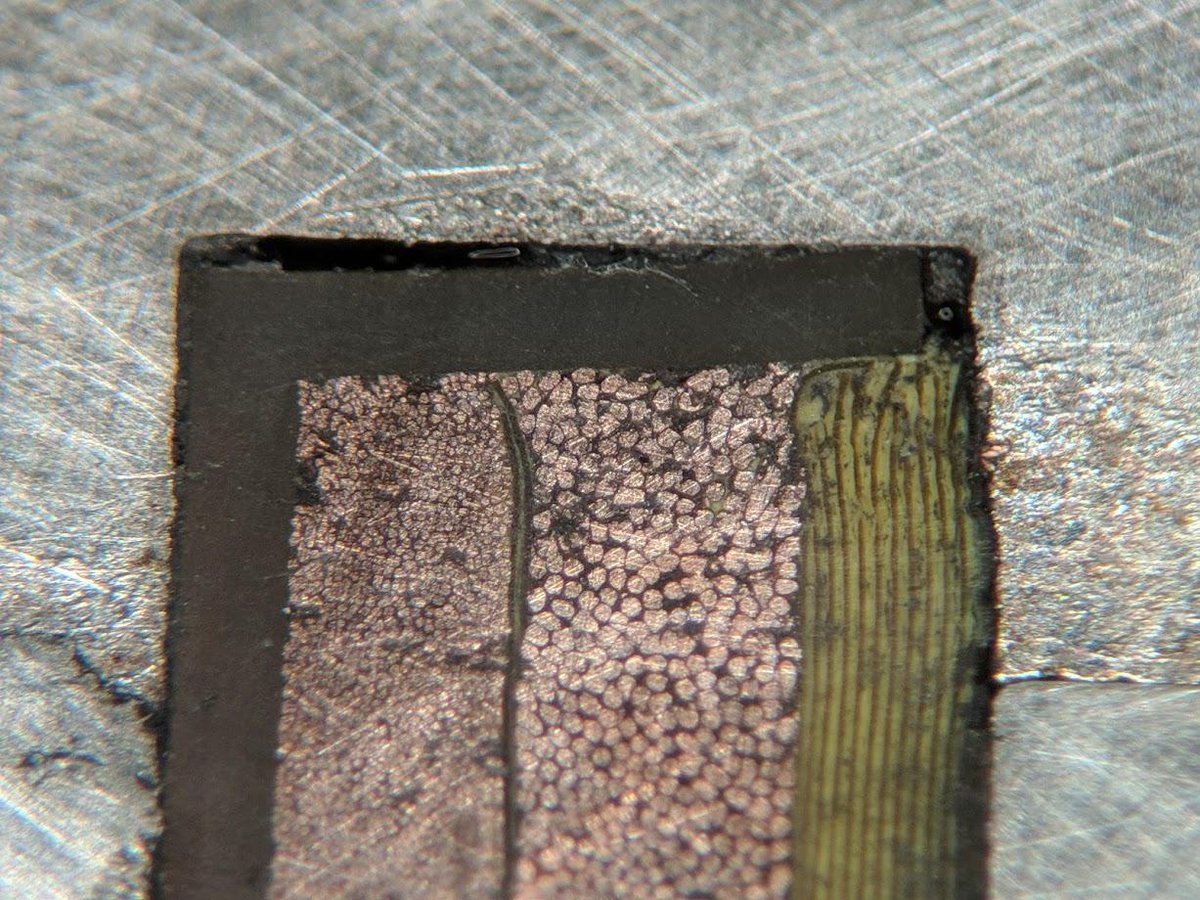
let's zoom in a bit. now you can see the individual strands of copper!pic.twitter.com/vFcKOPojE3
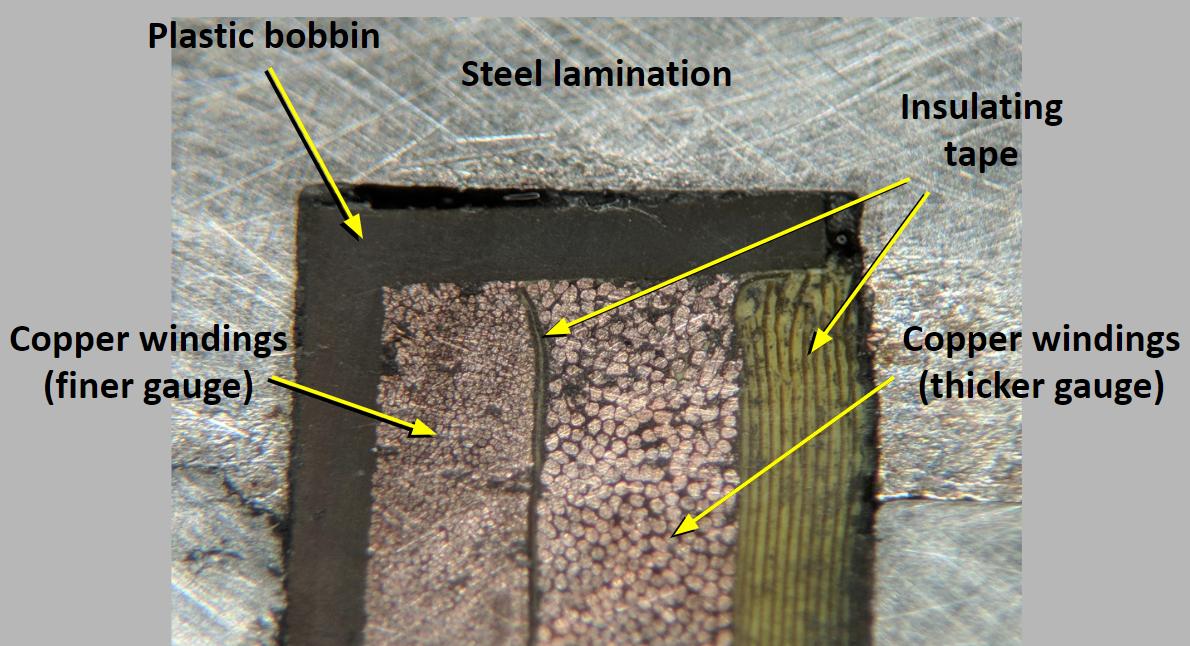
cross section of a small audio transformer, zoomed in and annotated.pic.twitter.com/xB4jLTdQA4
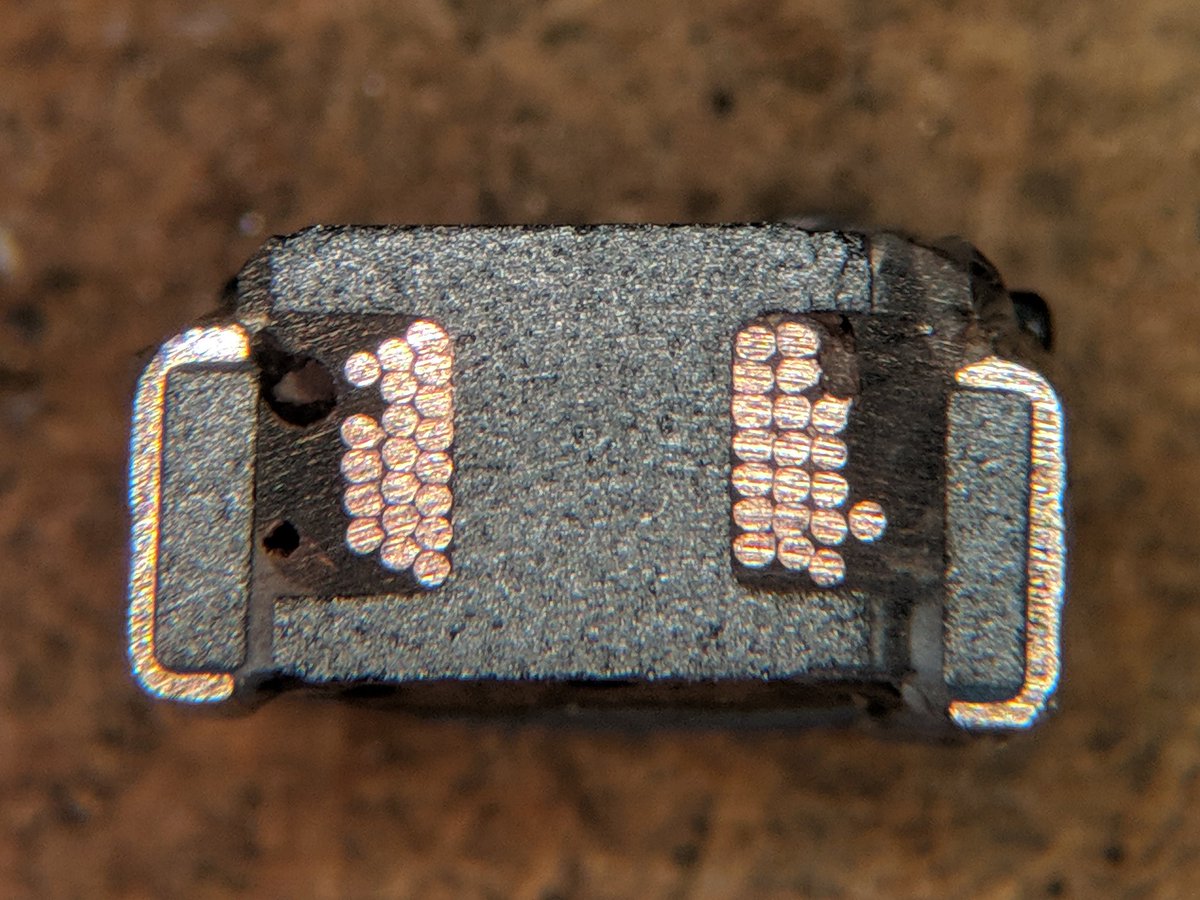
here's a 5mm wide surface mount power inductor that's been sanded down to expose the insides!pic.twitter.com/PZjiicZTOY

and here is the SMD power inductor with annotations. since this is a shielded inductor, it has an outer ferrite shield that helps contain the magnetic field. this reduces the stray magnetic fields which could interfere with other components.pic.twitter.com/G8k7y75doQ
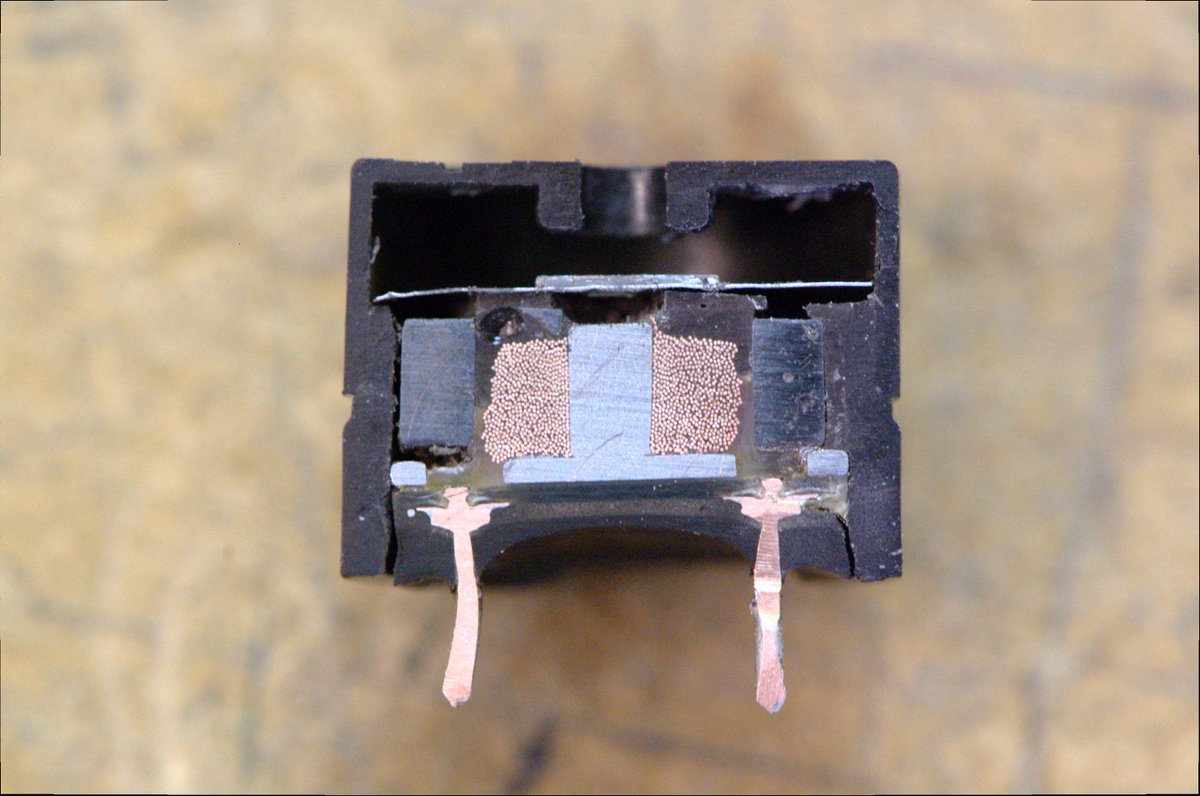
this is a small PCB-mount magnetic speaker that i've cross sectioned.pic.twitter.com/HNusGVkTME
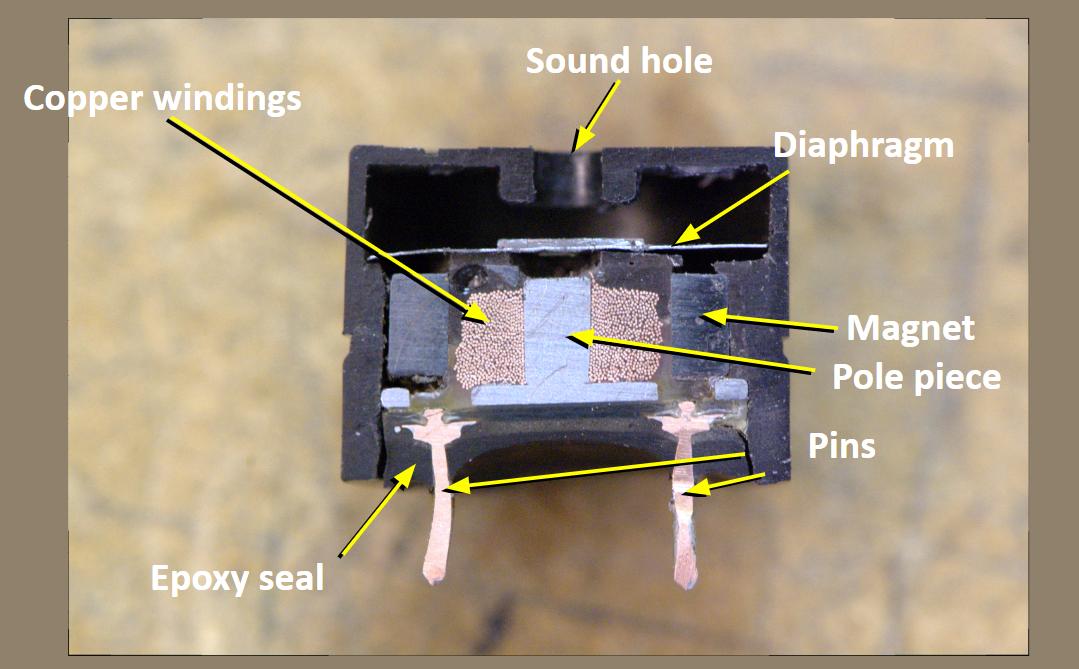
here's the annotated cross section of the PCB-mount magnetic speaker.pic.twitter.com/Ze3Wf9o0B5
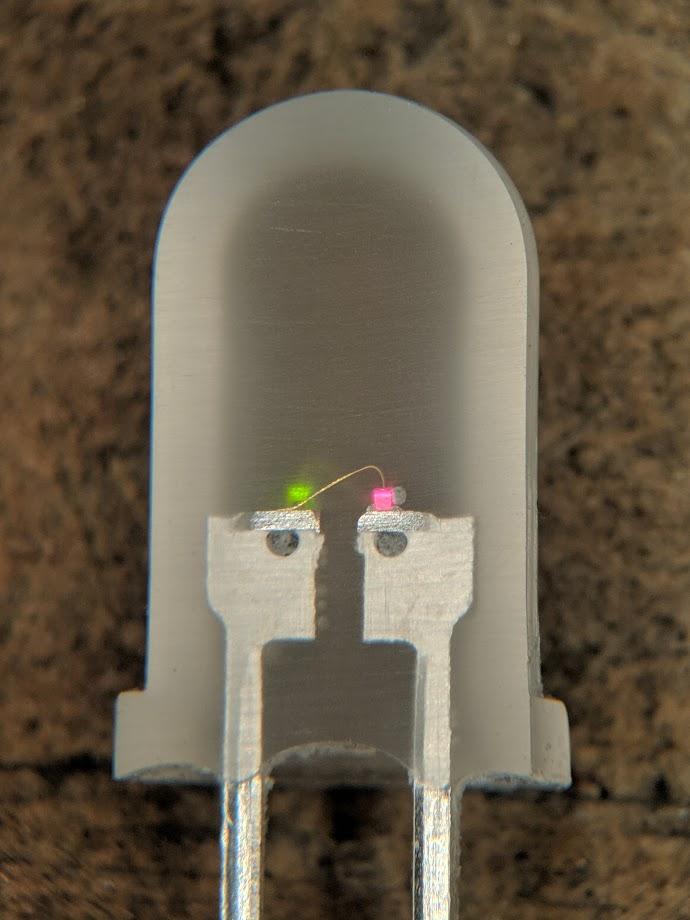
check out this cross section of a bi-color red/green LED! you can see that there are two LED die and two bond wires.pic.twitter.com/2onSGI9ud6
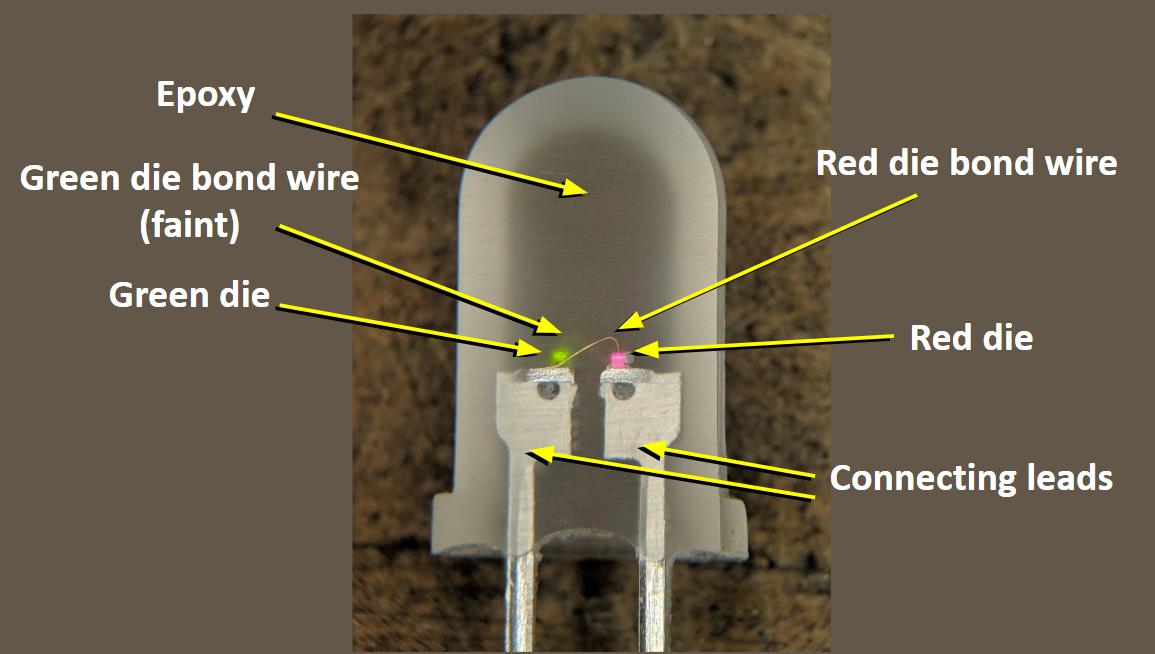
this is the annotated version of the red/green bi-color LED cross section.pic.twitter.com/0LGVQEujZi
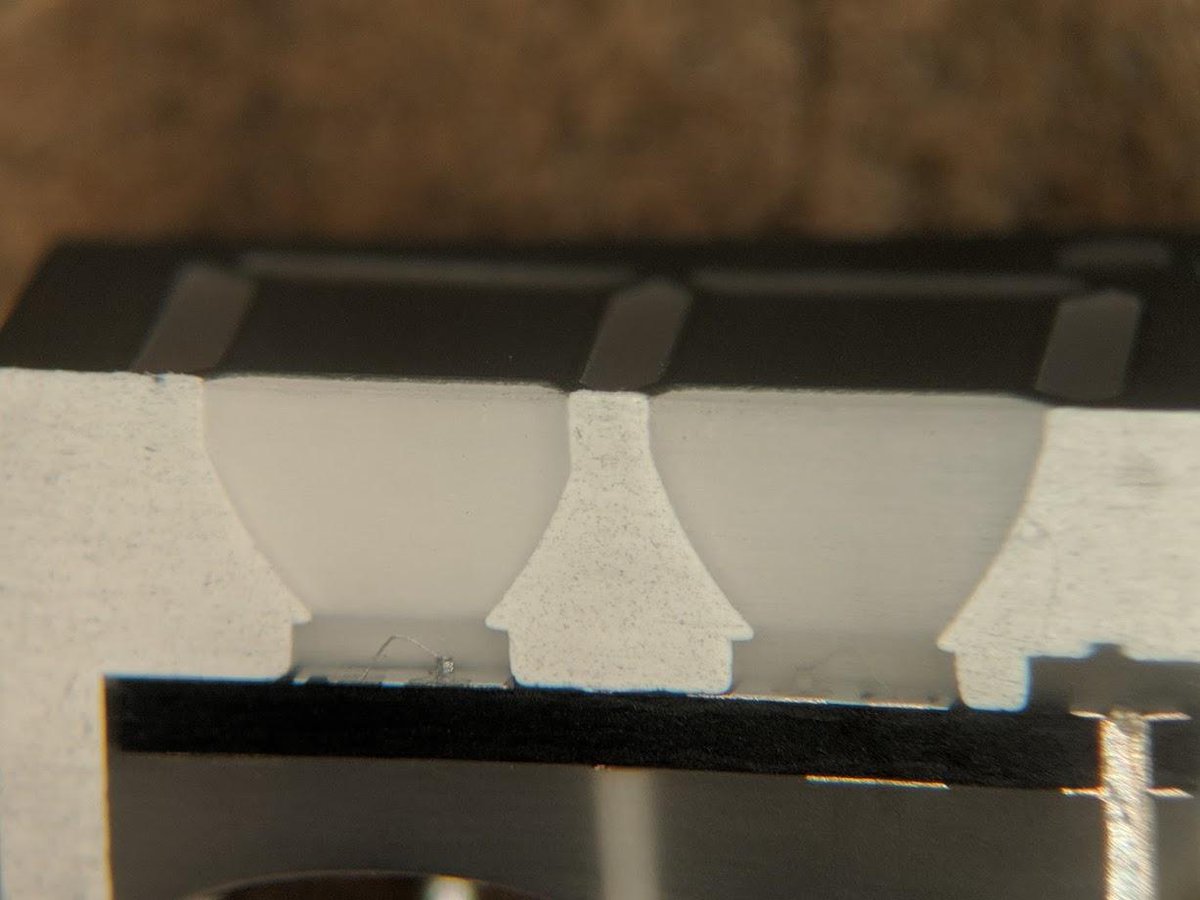
this is a cross section of a 7-segment LED display. you can see the tiny LED chip!pic.twitter.com/iPWkiAdsta
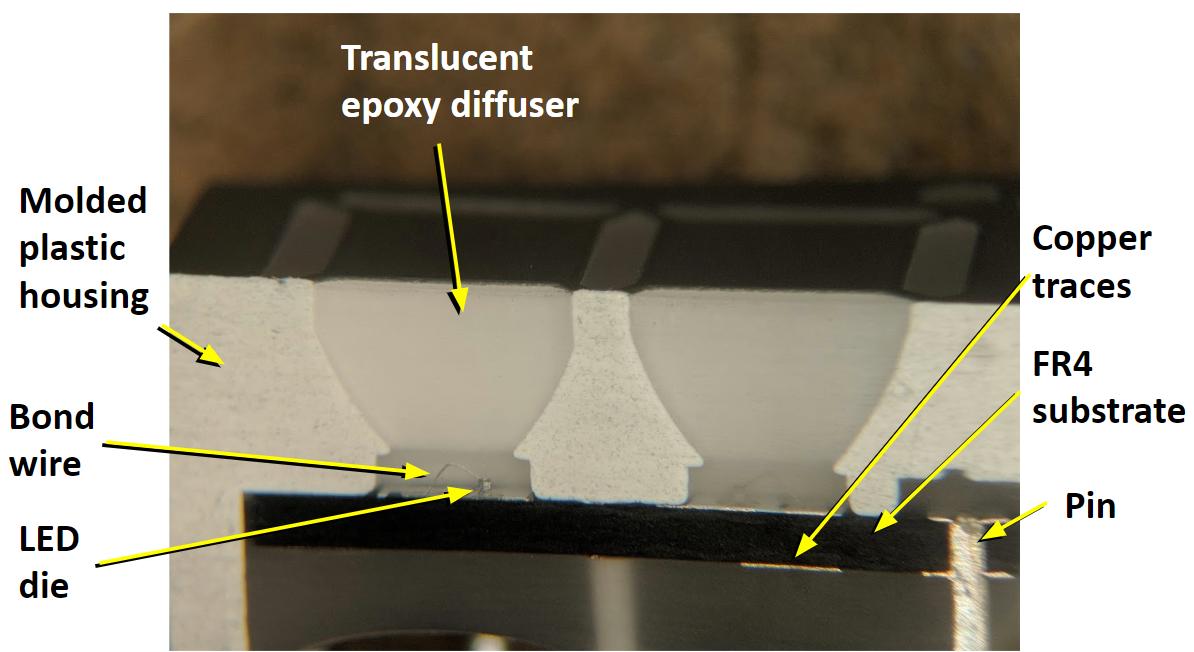
annotations calling out the various parts of this cross sectioned 7-segment LED display.pic.twitter.com/jTYgcXeTgD
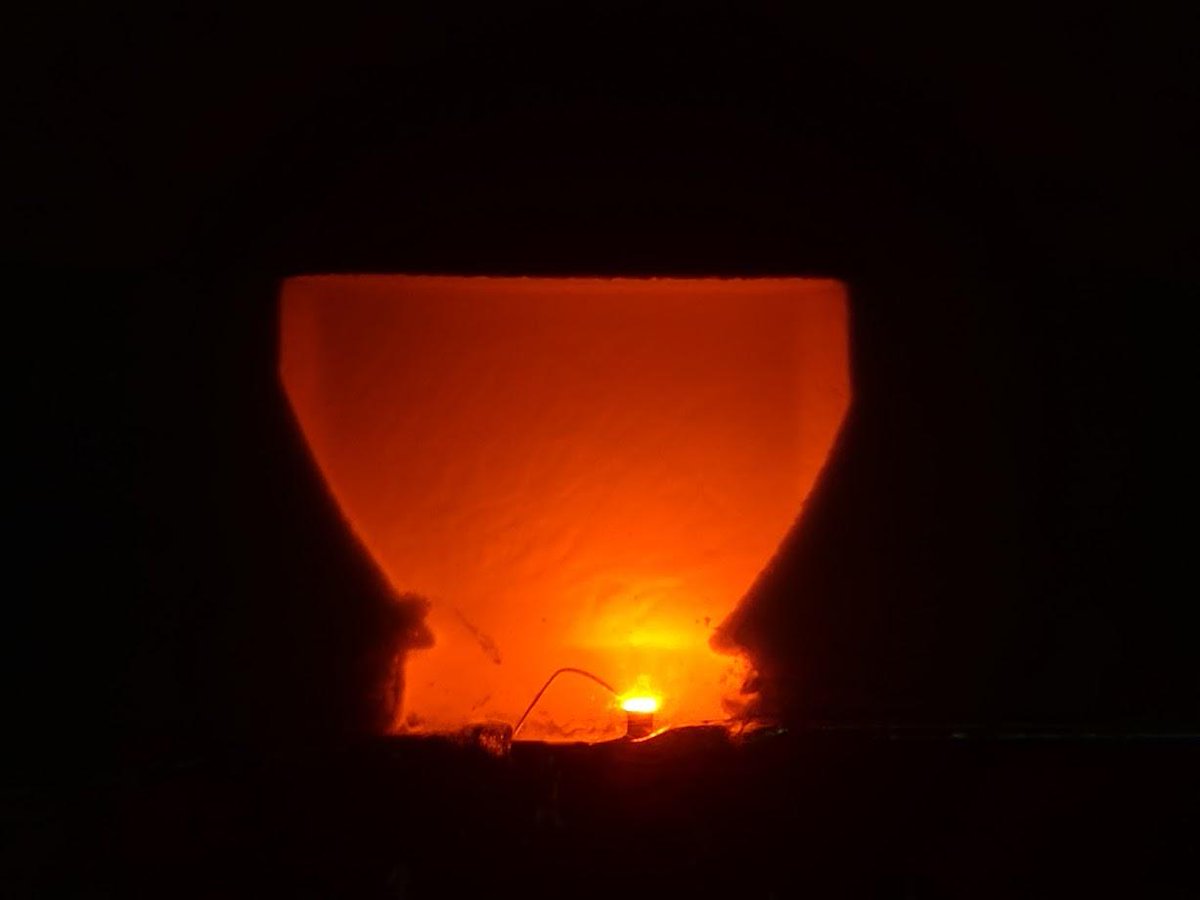
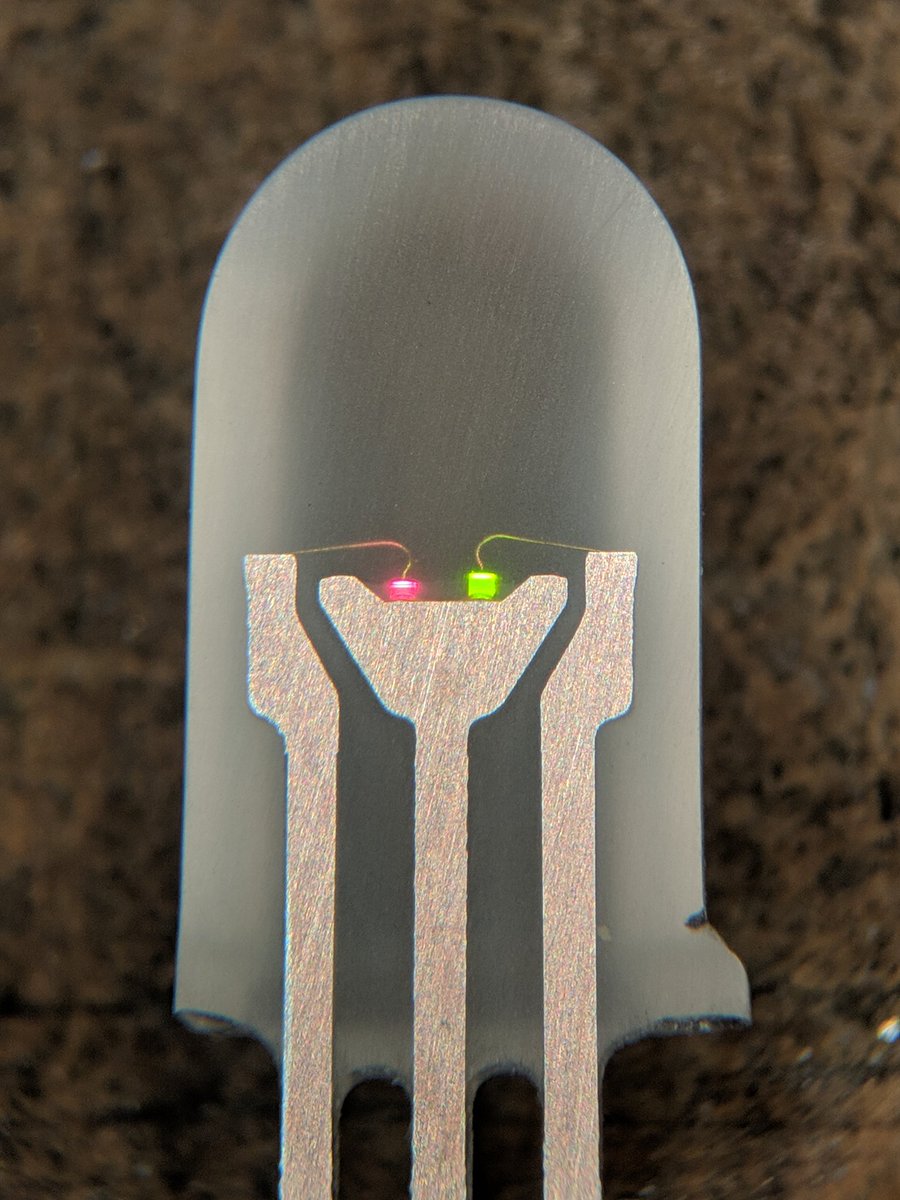
this is a 3-pin bi-color LED that's been sanded down so you can clearly see the lead frame and LED chips.pic.twitter.com/p2Y15iph5m
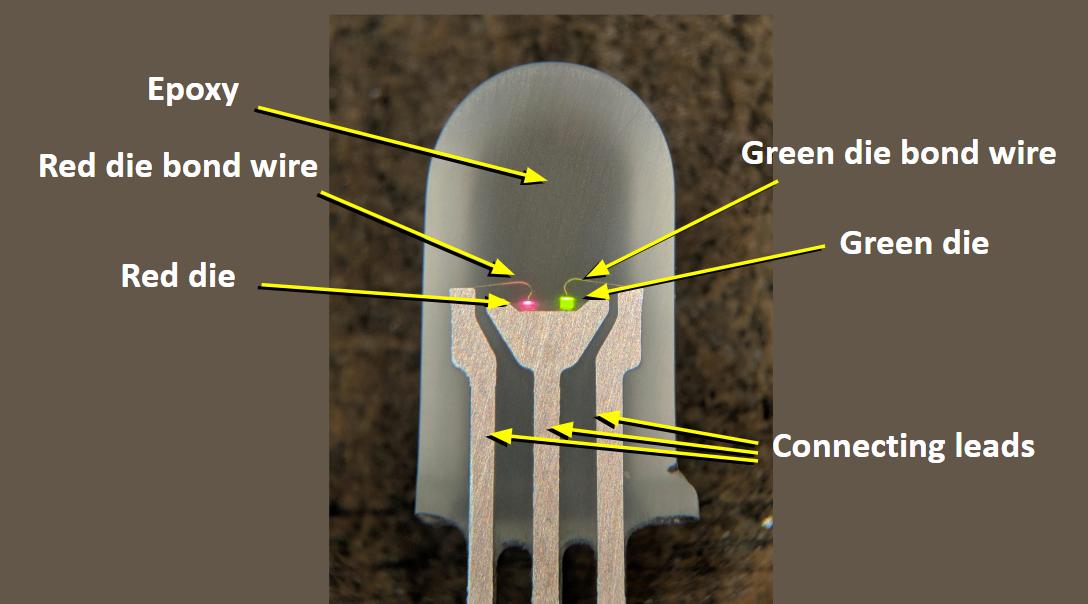
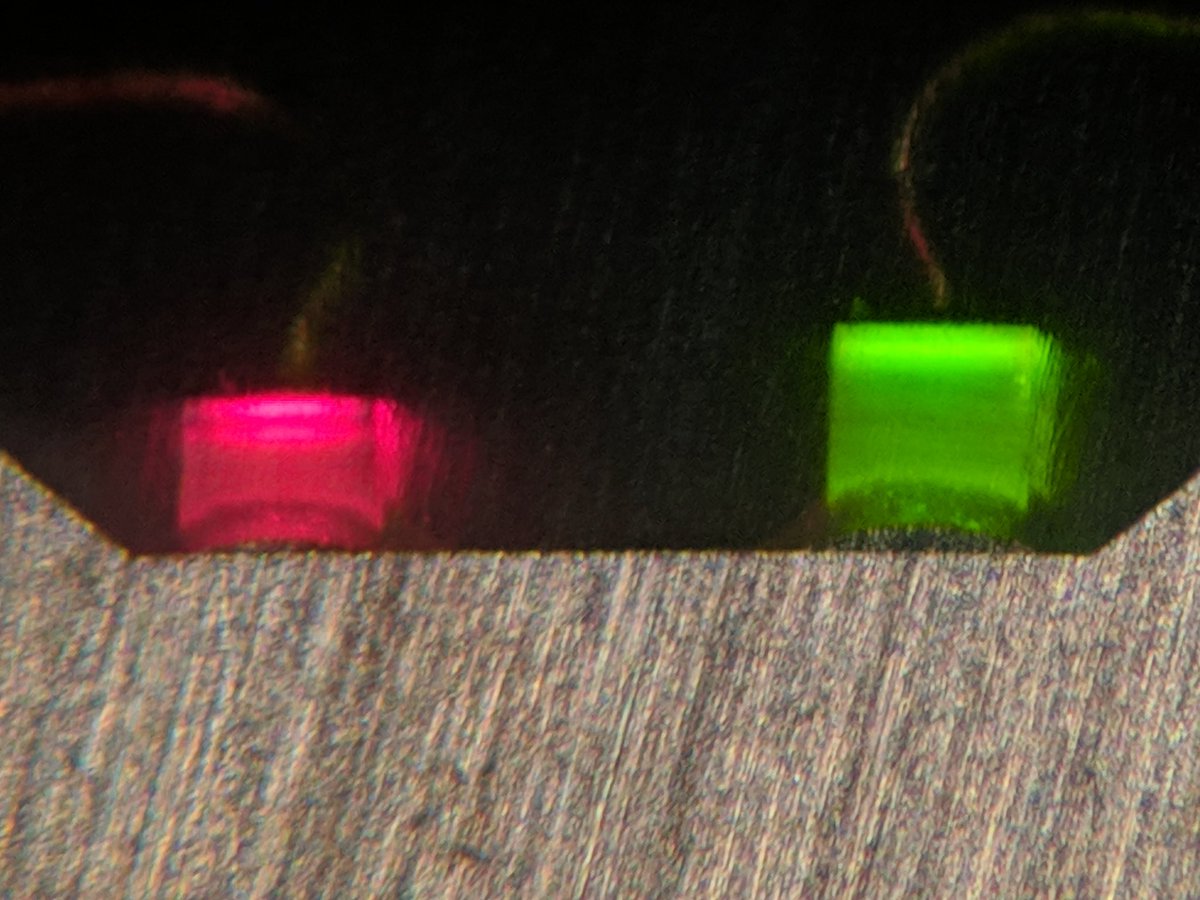
close-up of the two LED chips. one is shorter than the other.pic.twitter.com/9mnZXPEhol
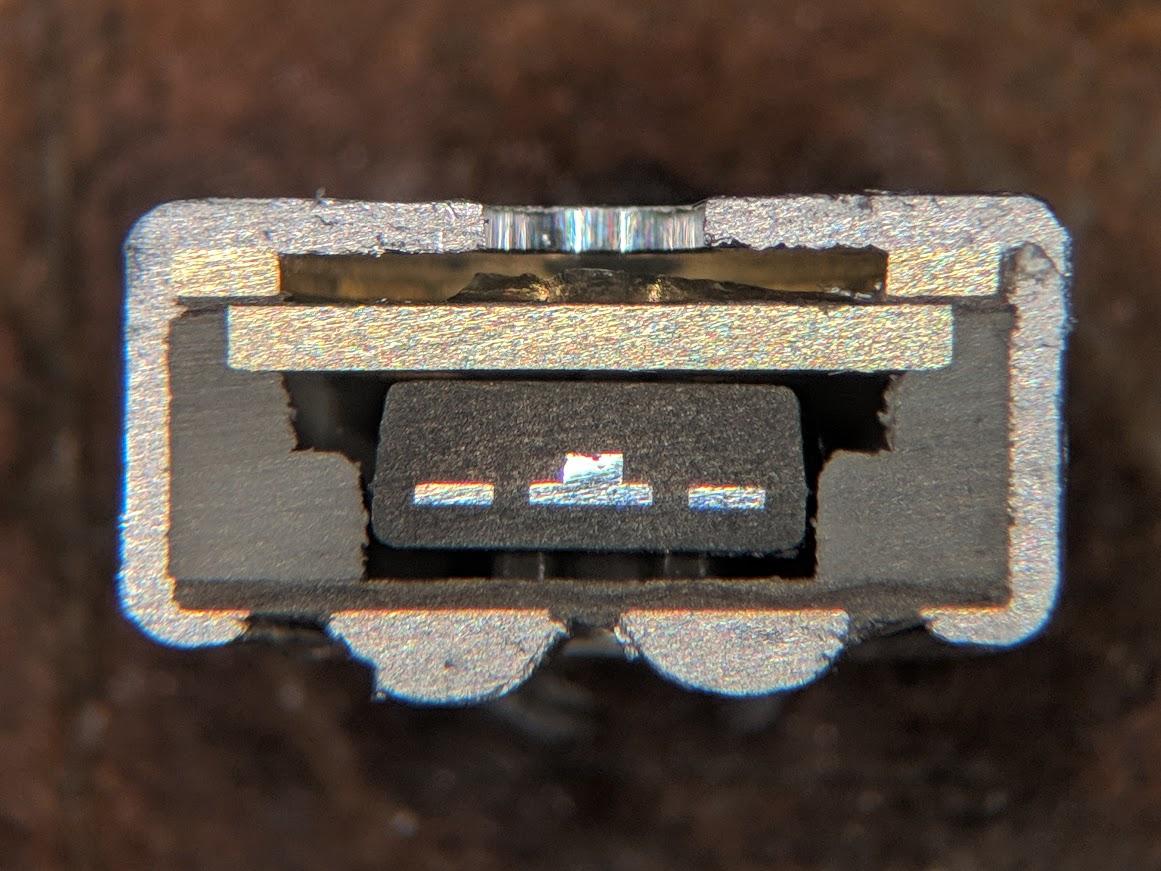
cross section of an electret microphone element.  pic.twitter.com/BoLbNqZlbr
pic.twitter.com/BoLbNqZlbr
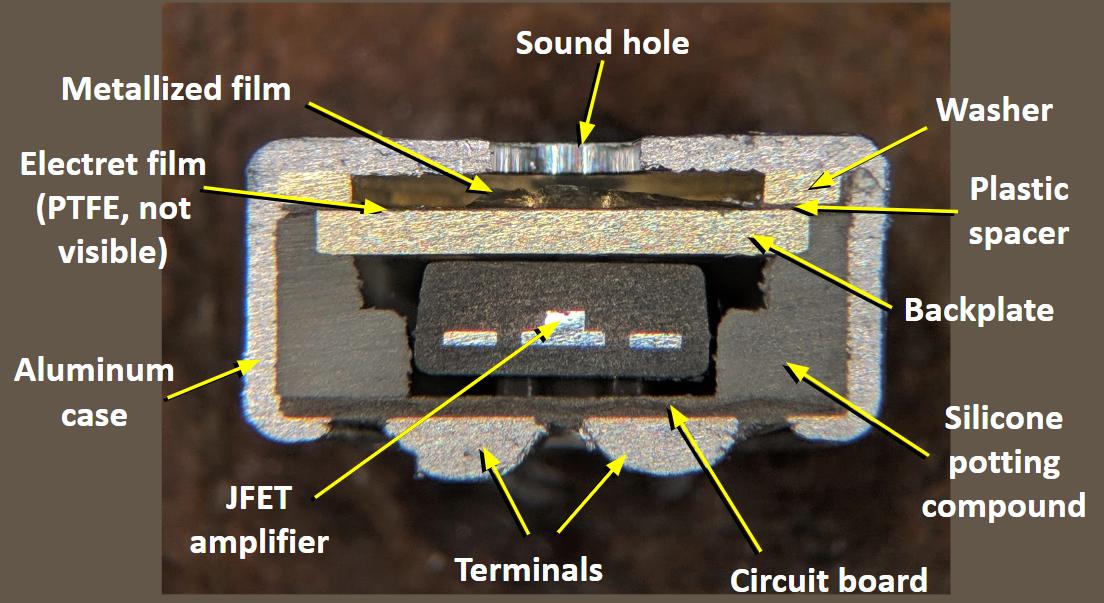
annotated cross section of an electret microphone element.  pic.twitter.com/CcwdINpJLe
pic.twitter.com/CcwdINpJLe
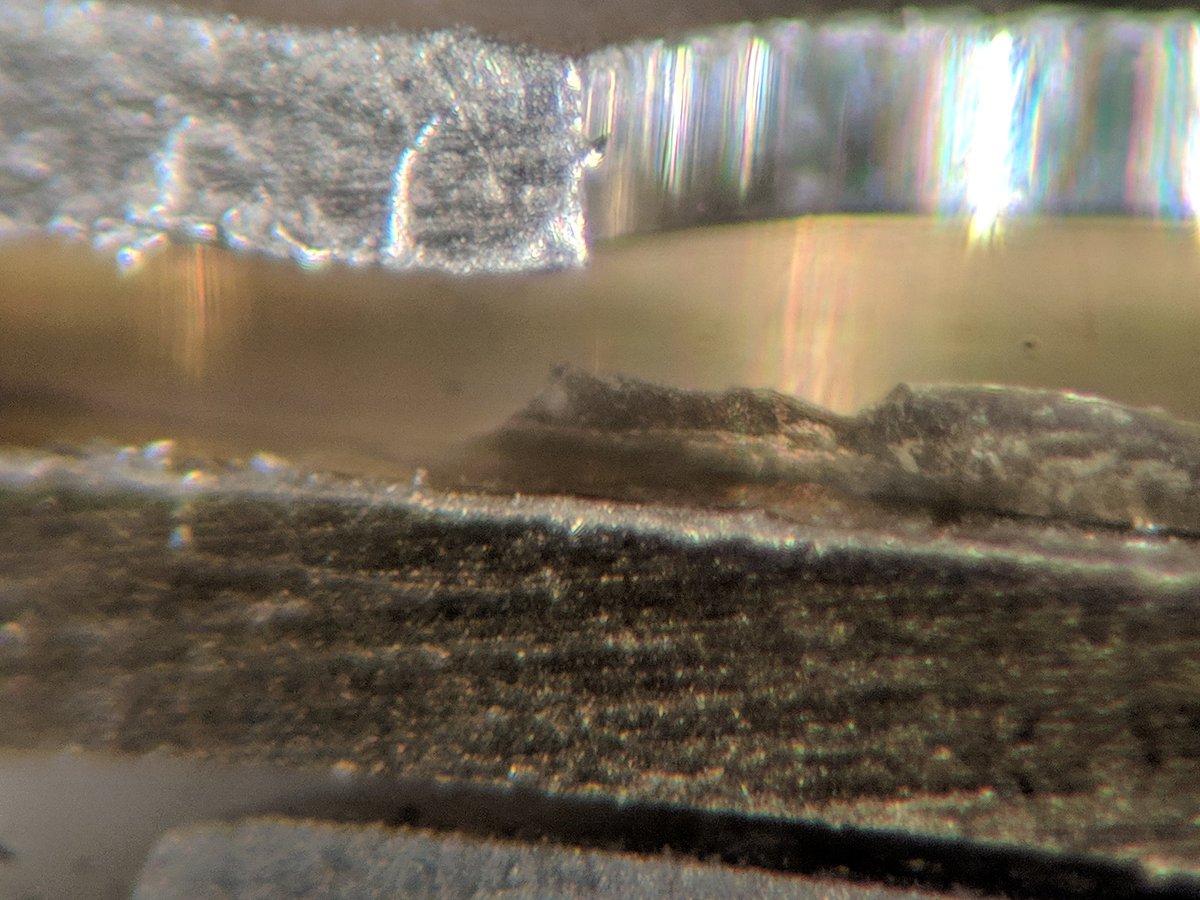
you can see the electret film coating on the backplate here. the metallized diaphragm is torn and distorted from the sectioning processpic.twitter.com/KCoxvnzW8C
how it works: the metallized diaphragm and backplate act as the two plates of a parallel plate capacitor. the electret material sits in between, along with a small air gap. the electret gives this capacitor a constant charge, Q...
...and since the capacitance changes when the diaphragm deflects due to sound coming in because C = e0*A/d, and because Q = CV, the voltage V = (Q/Ae0) * d. in other words, the voltage is directly proportional to the change in distance between the two plates.
the most fascinating part is the magical electret material. the name is a portmanteau of "electrostatic magnet." it's a material made of polar molecules (positive charge at one end, negative charge at the other) which are all aligned.
basically you melt the material while it's in a high voltage electric field, causing all the polar molecules to line up, then you let it cool and solidify. now one side is positively charged while the other side is negatively charged. 


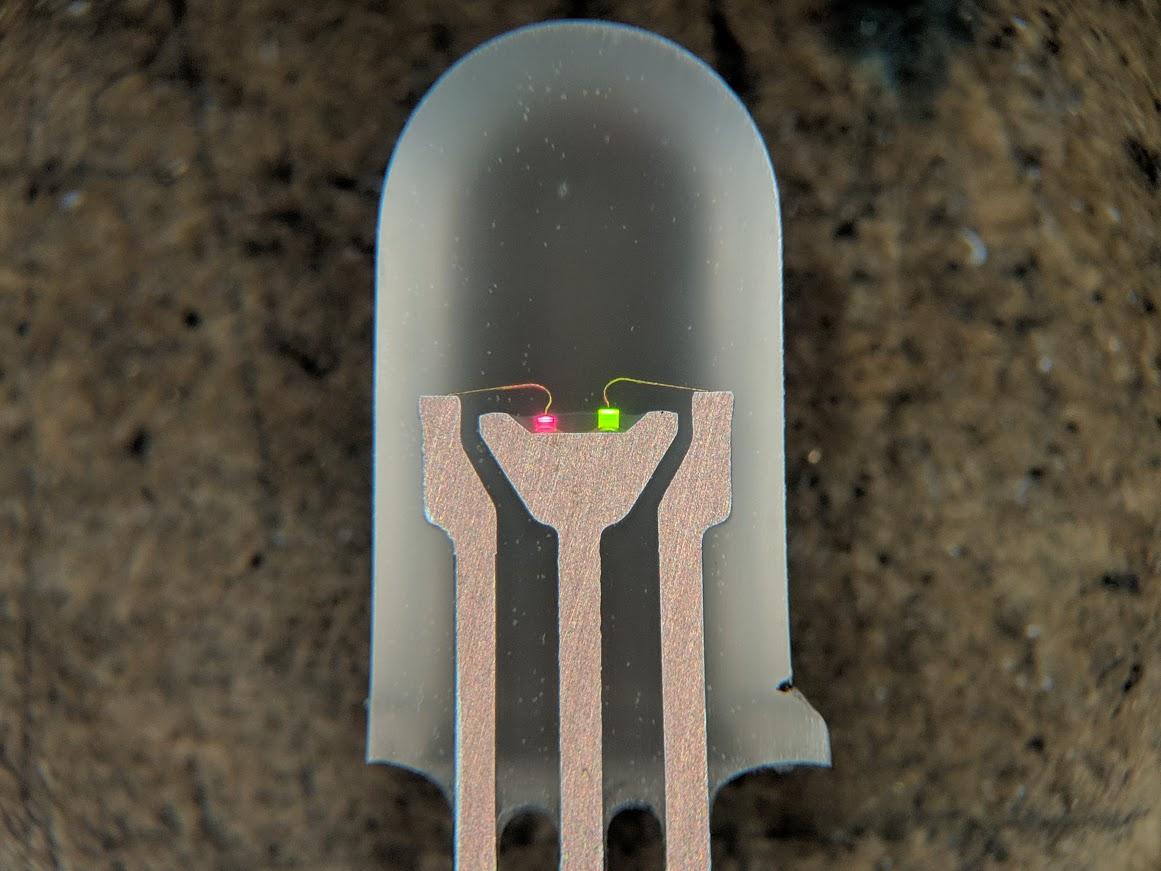
tried a suggestion from @tradica and put a little oil on it to clear up the surface a bit. it helped a bit, but now there are tiny bubbles.  pic.twitter.com/zEhPr6OSer
pic.twitter.com/zEhPr6OSer
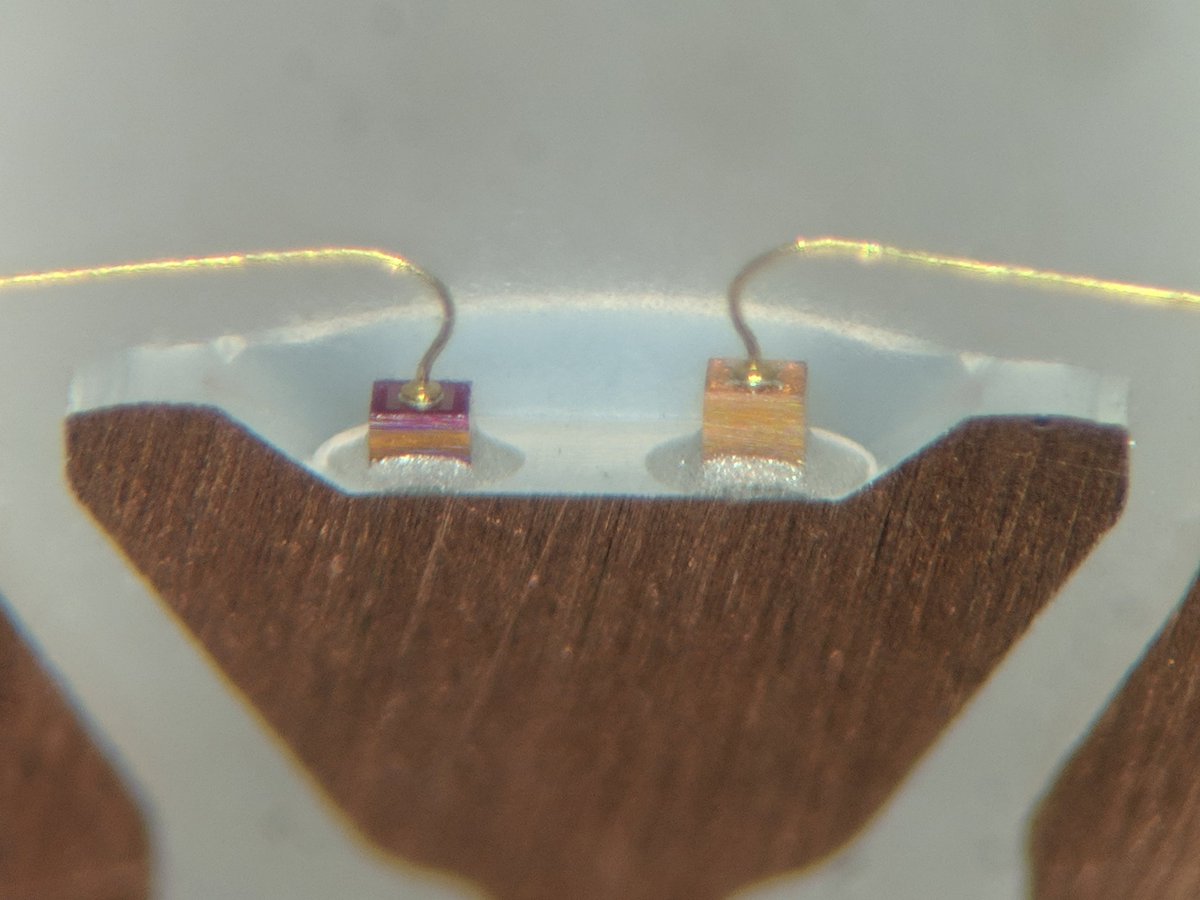
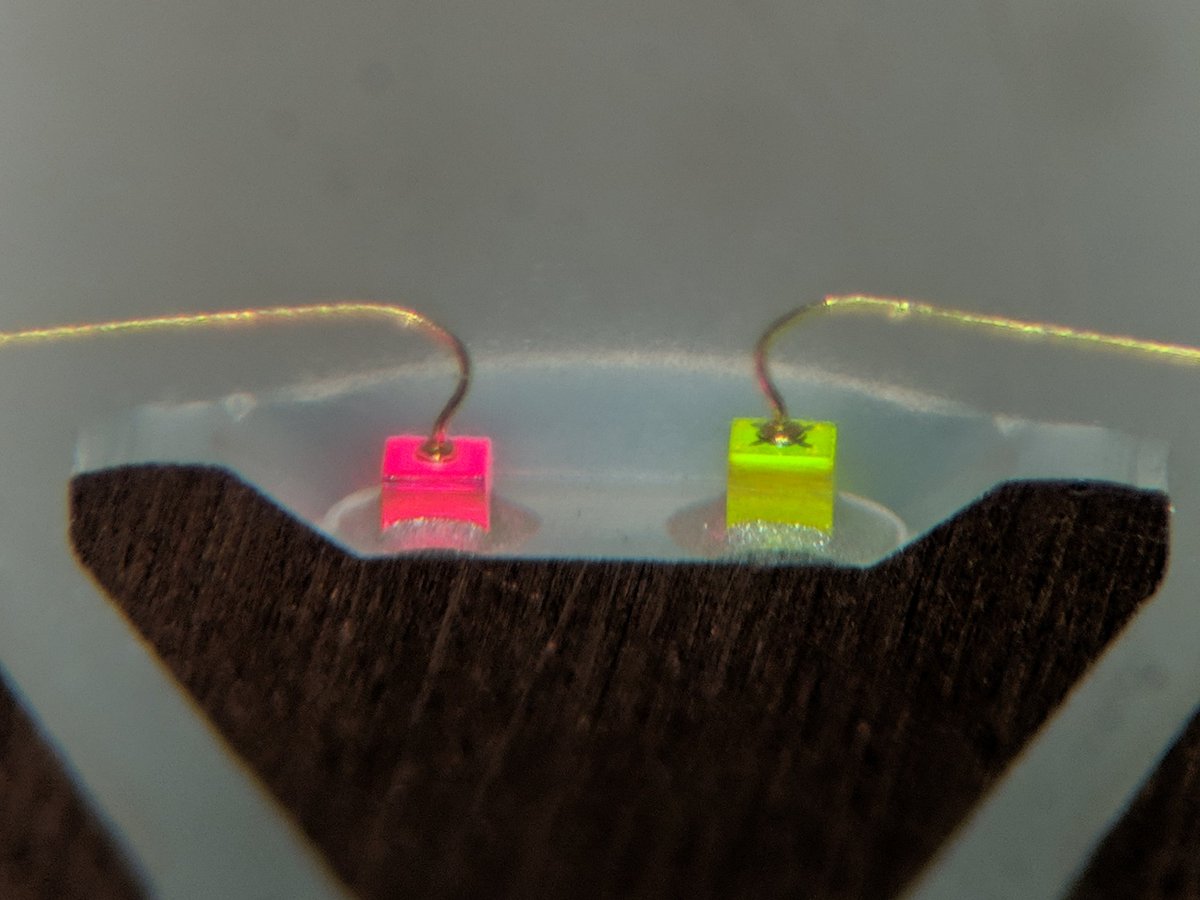
wow, this bi-color LED is even more beautiful from a slightly different angle!pic.twitter.com/pY0NRJ4Qih
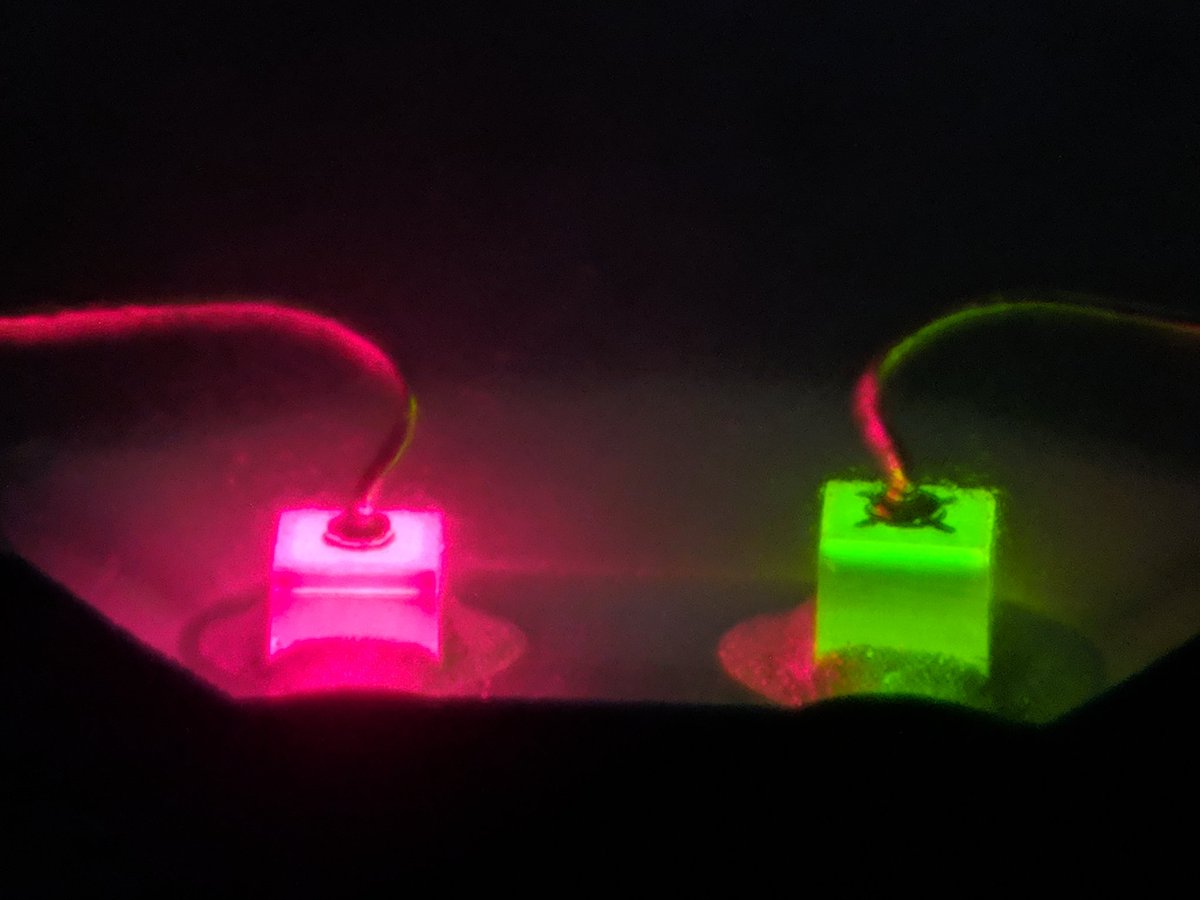

ever wonder what a 0.1" header and socket look like inside when they're plugged together? wonder no more, rest your eyes on this cross section!pic.twitter.com/BNOPAiQGxq
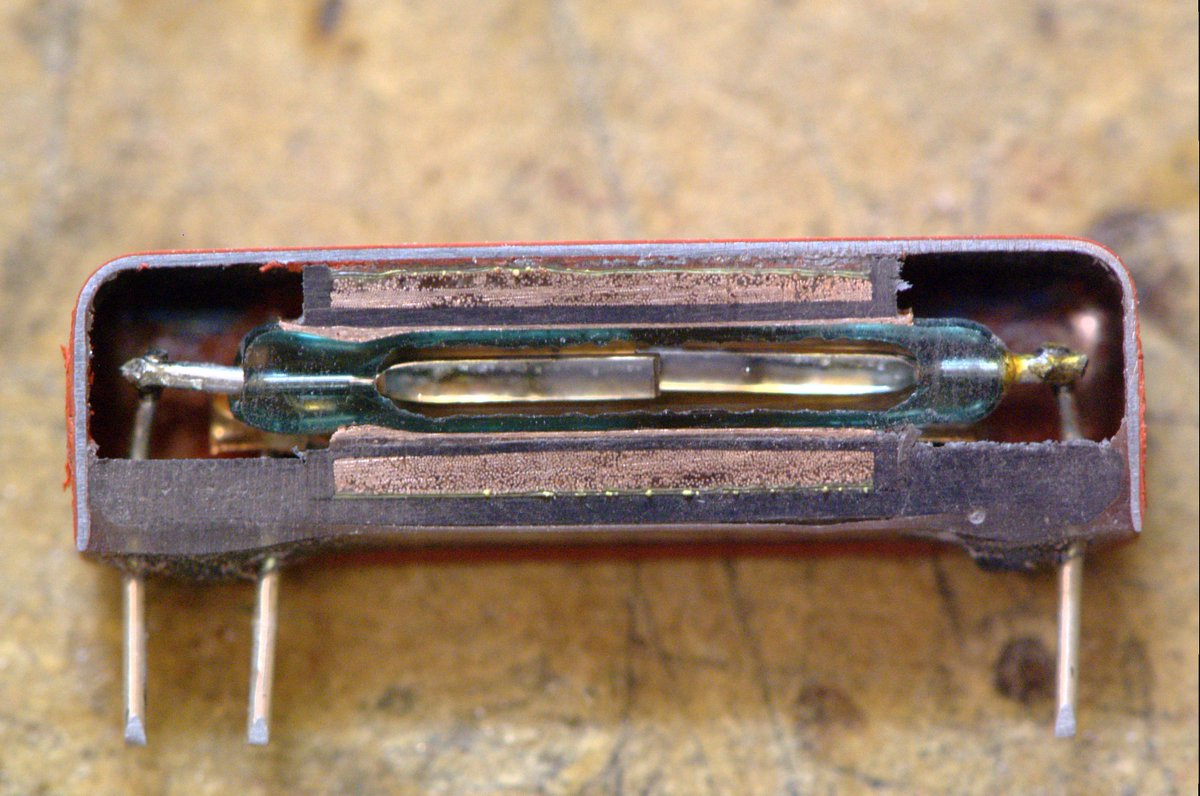
this is a cross section of a miniature reed relay. they're used by the millions in semiconductor test equipment, then discarded after a million cycles, which happens sooner than you might think!pic.twitter.com/KbSV74pw7A

this is the annotated cross section of the miniature reed relay. there's a digital cycle counter in the test equipment these are used in, and when that counter passes 1,000,000, the relays are unplugged and thrown out!pic.twitter.com/2qTDulgexJ
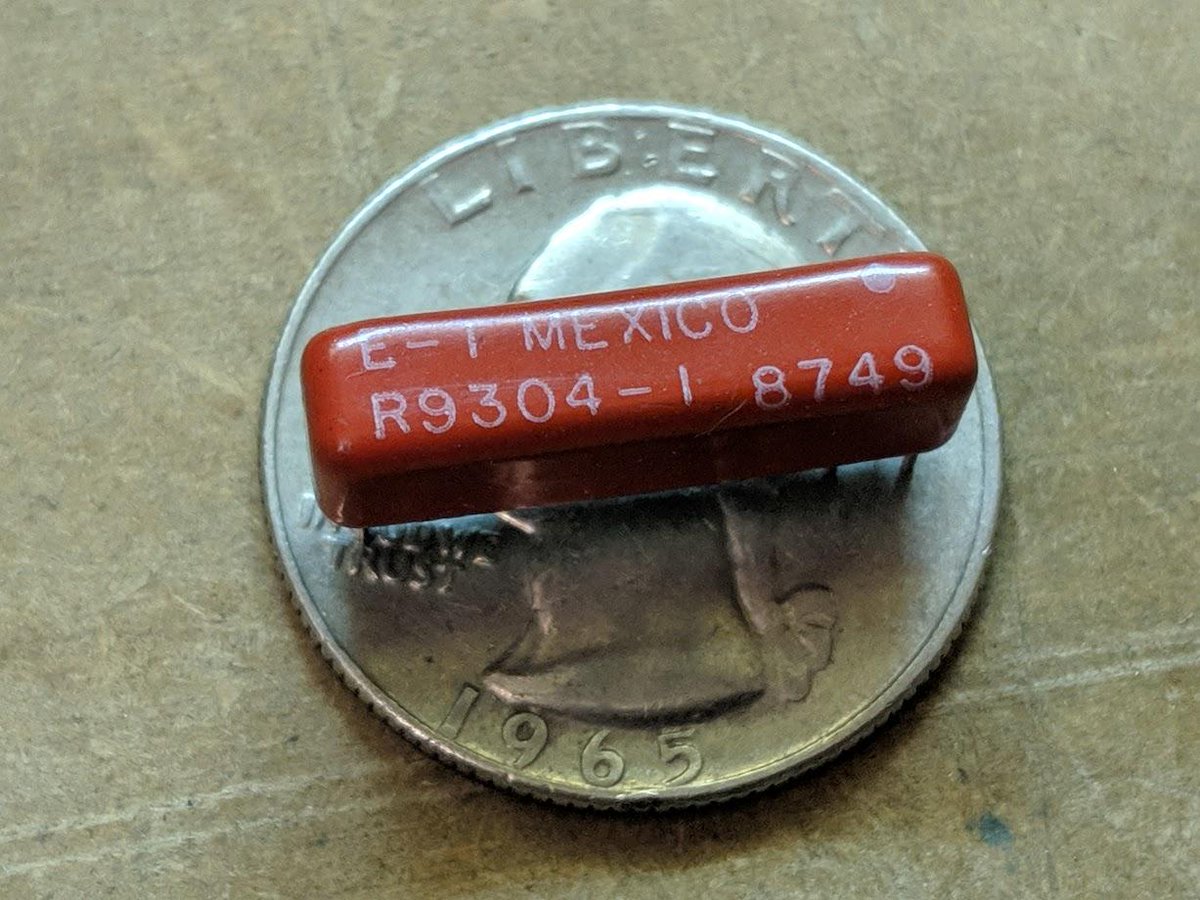
here's what the relay looks like, intact, resting comfortably on George. often a semiconductor test board will have one of these relays per pin, and sometimes more.pic.twitter.com/8rcqj6ZuY4
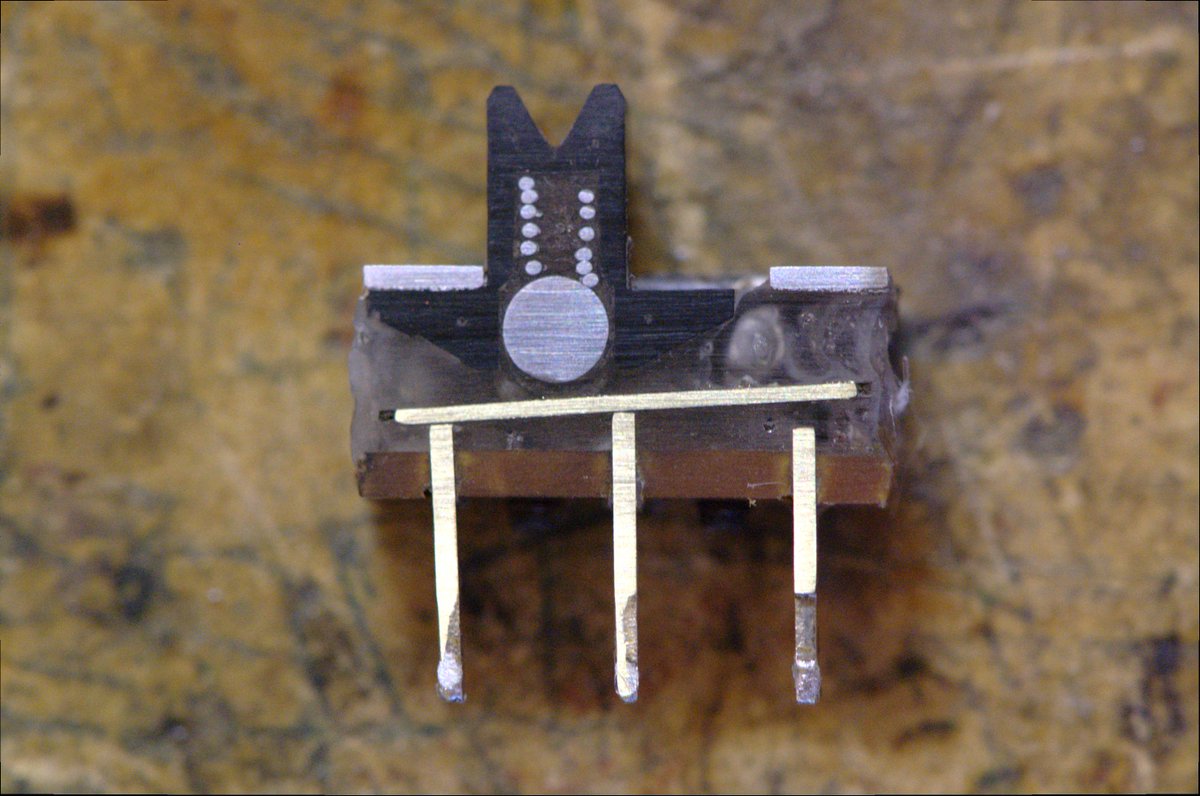
cross section of a PCB-mount slide switch. this one is SPDT. these are quite inexpensive switches!pic.twitter.com/Gvm0OANBBK
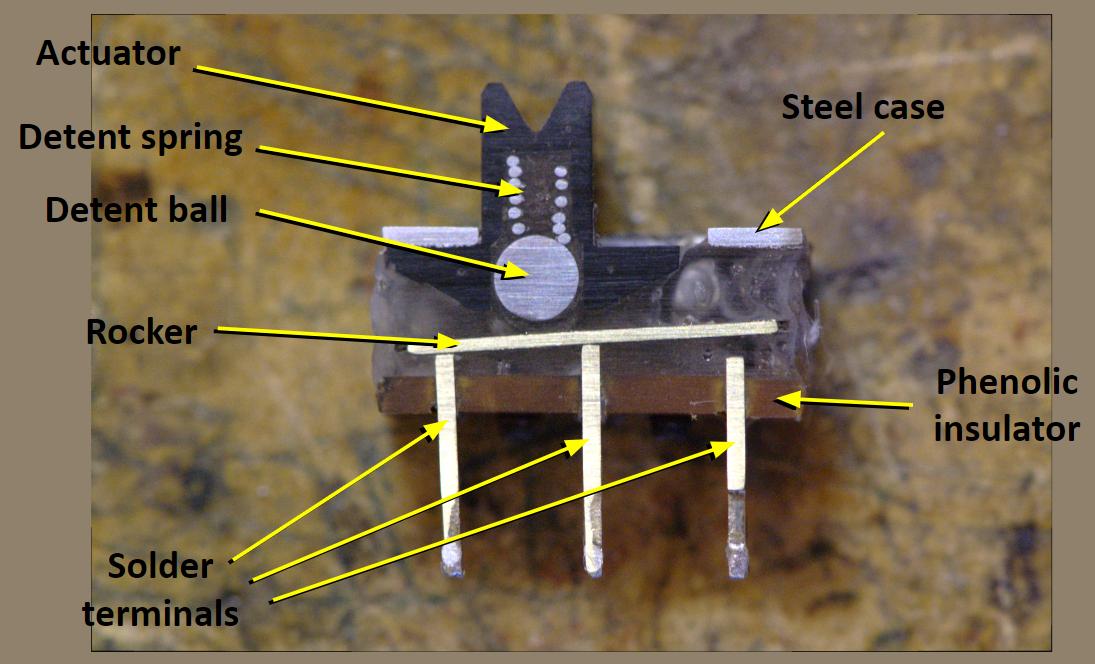
here's the annotated cross section of a PCB-mount slide switch. when you push on the actuator, the rocker forces the ball against the spring. the ball rolls over the rocker, applying force to the opposite side, moving the rocker so that it presses up against the opposite contact.pic.twitter.com/yhwvYT9Af9
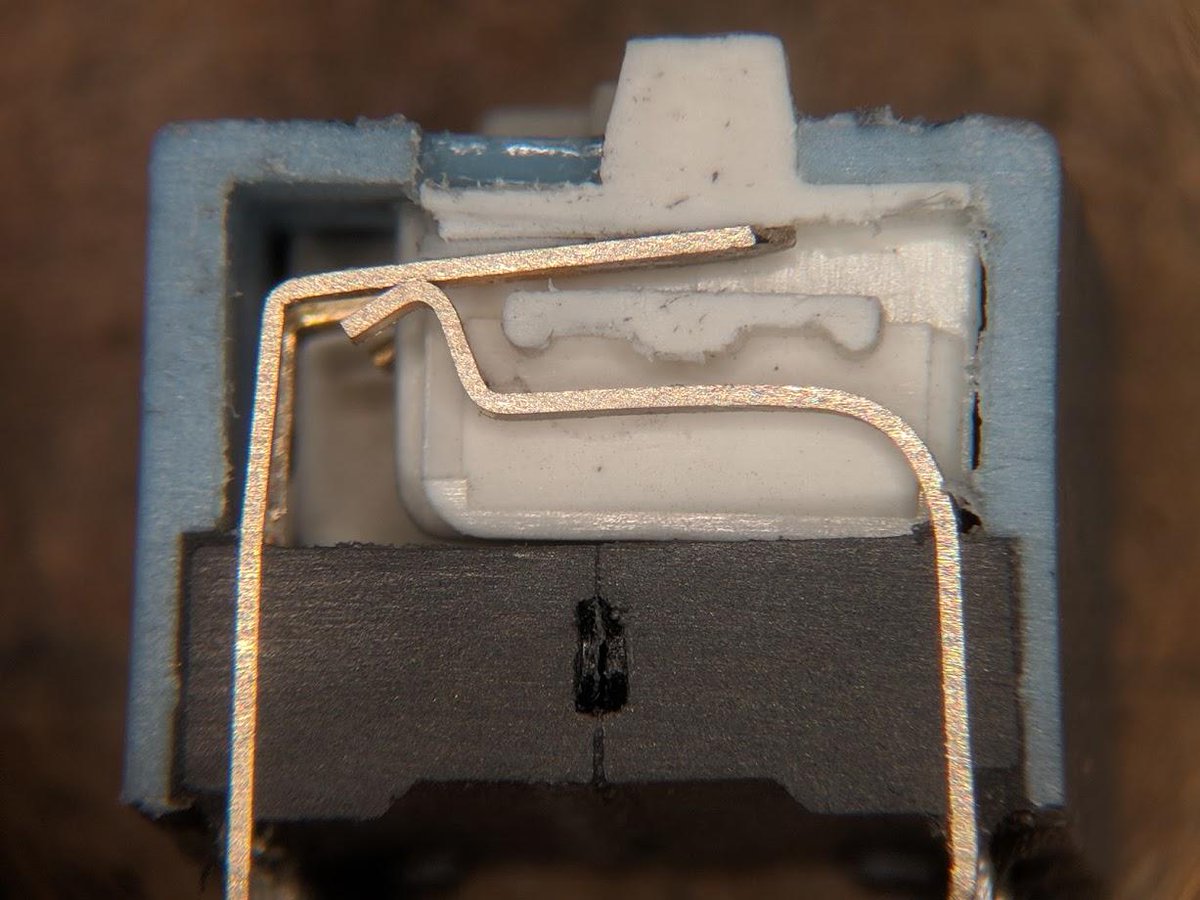
check out this cross section of a plain old DIP switch. there are 4 switches in this one, and this is one of the switches.pic.twitter.com/Pl5iVlWQyx
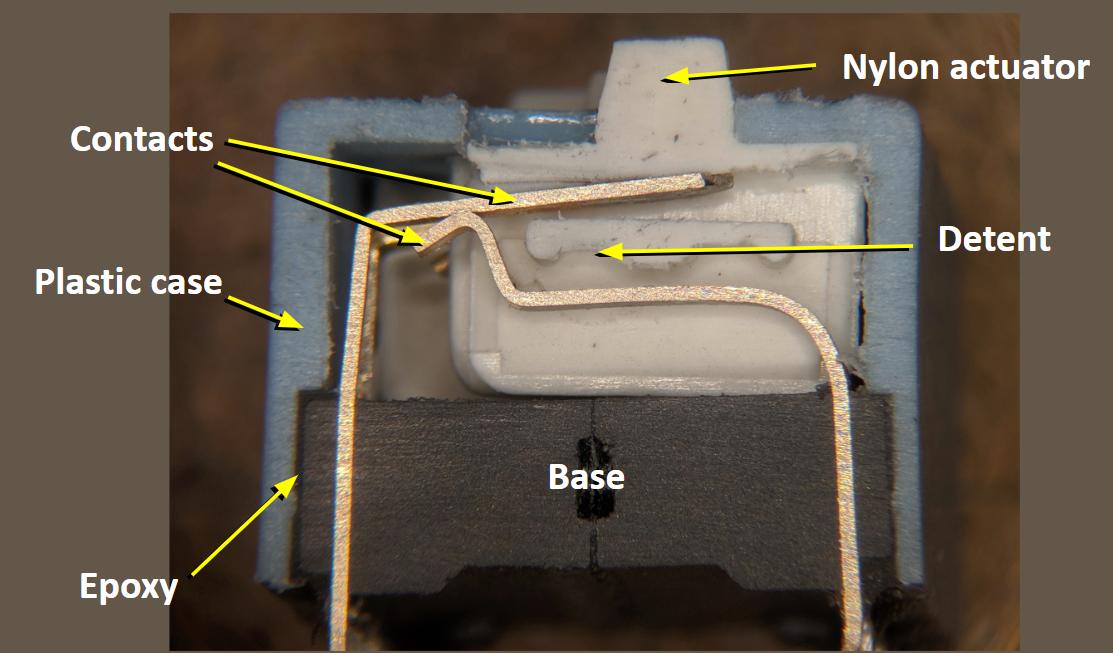
here's the annotated version of the DIP switch cross section. it's pretty simple! note that the actuator has two detents simply because it's a symmetrical plastic piece that can be installed in either orientation. only one detent is used.pic.twitter.com/Yhf1qA6eWR
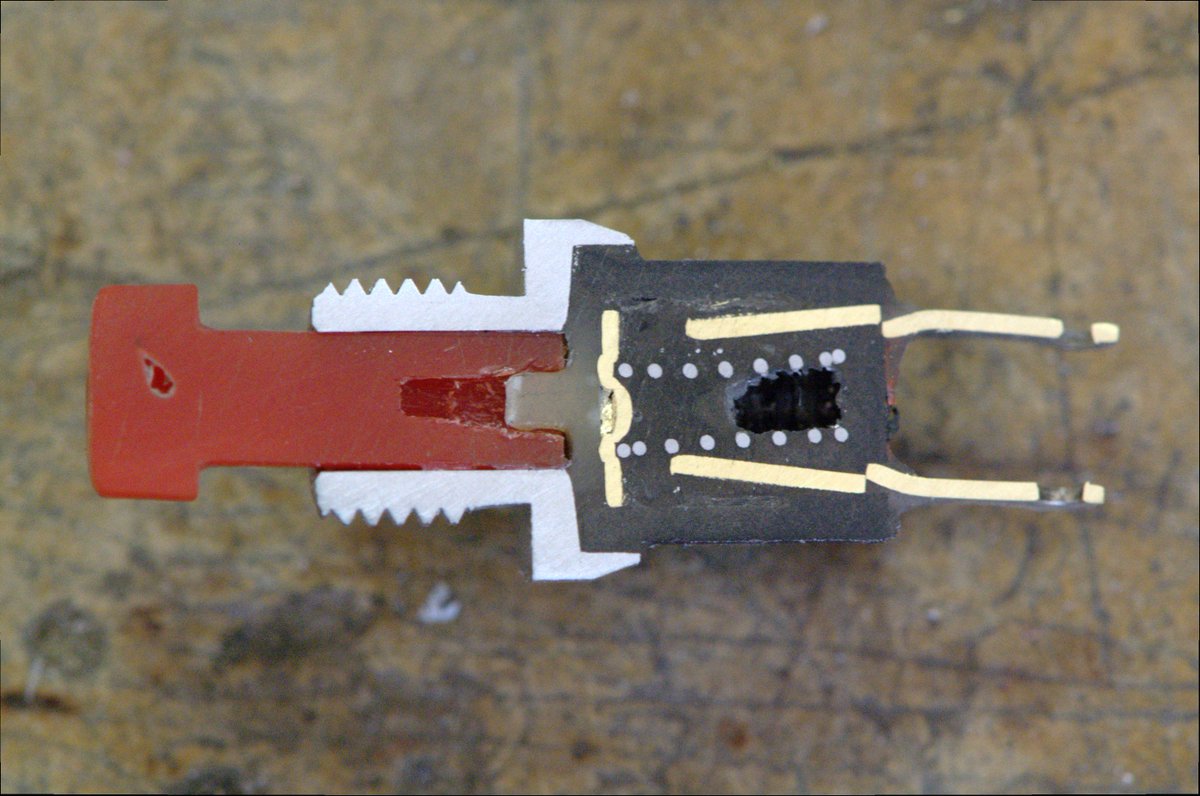
this is a very cheap pushbutton that i've cut in half so you can see how simple it is inside. please ignore the void in the middle of the spring; i use glue to hold the internal parts in place during sectioning.pic.twitter.com/rvrEcOjg8Z
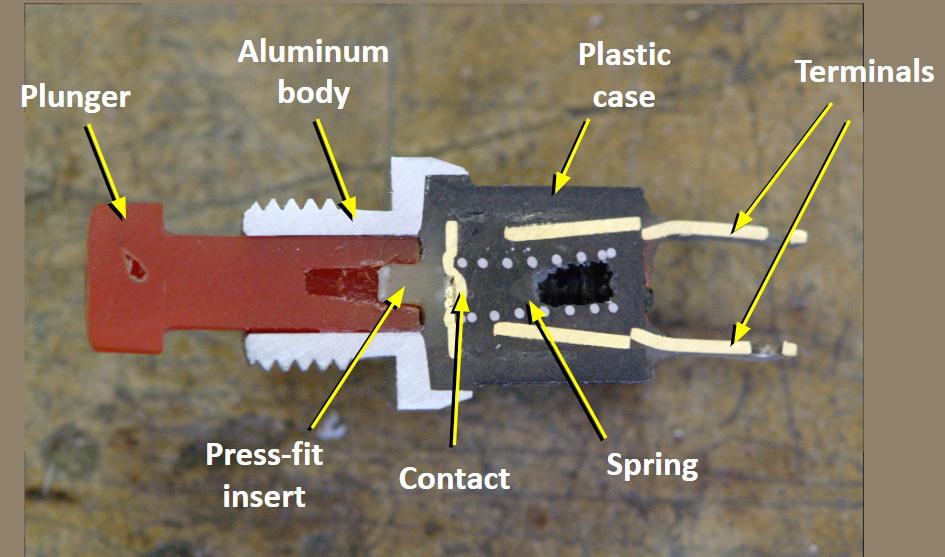
here's the cheap pushbutton switch cross section with annotations.pic.twitter.com/2kjS7qAY3w
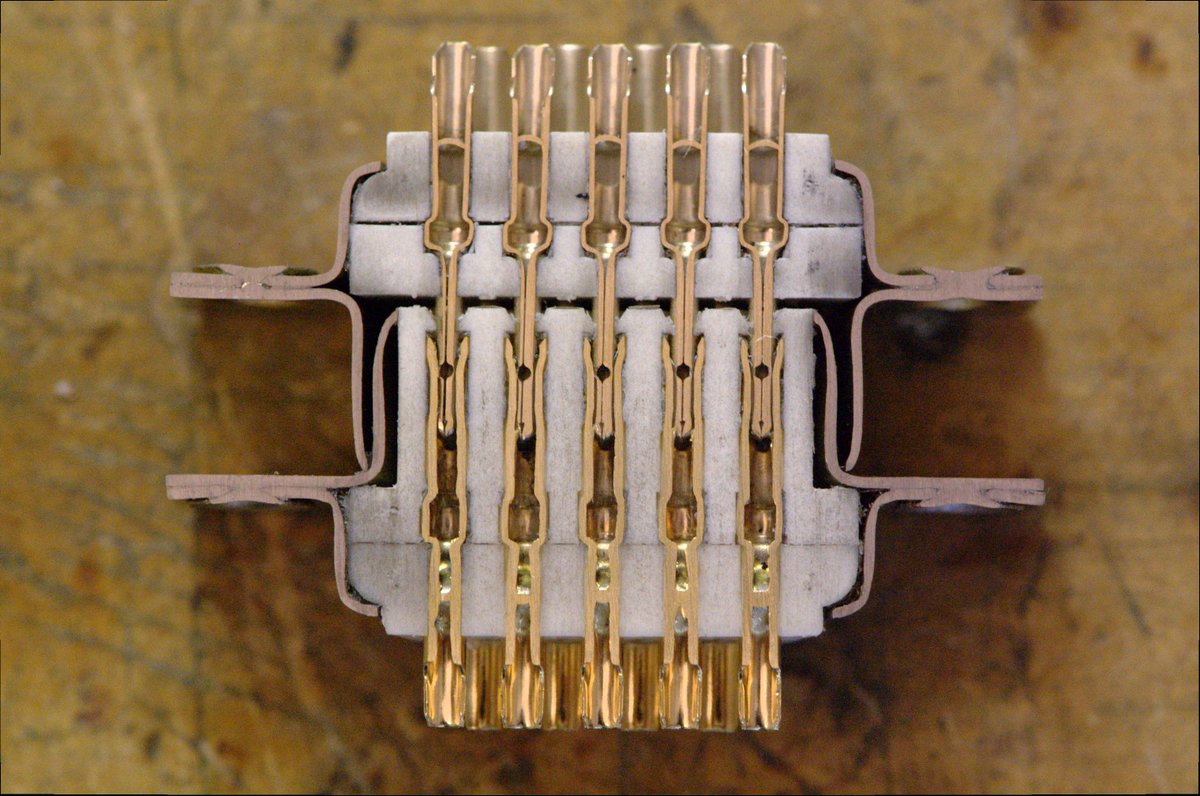
ever wonder what a D-sub connector looks like inside? here's a cross section of a DE-9 plug and receptacle.pic.twitter.com/DrySMVNSRz
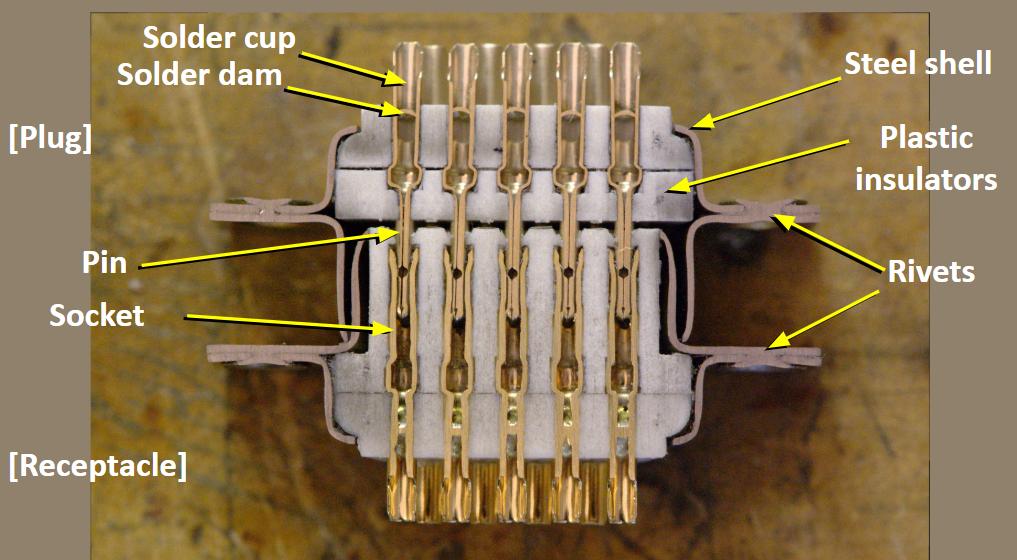
naturally i also made an annotated version of this picture so you can tell what's going on. there are a few subtle features of the design, like the tiny little solder dams that prevent solder from wicking up inside the pins and sockets.pic.twitter.com/GHFXKIVAms
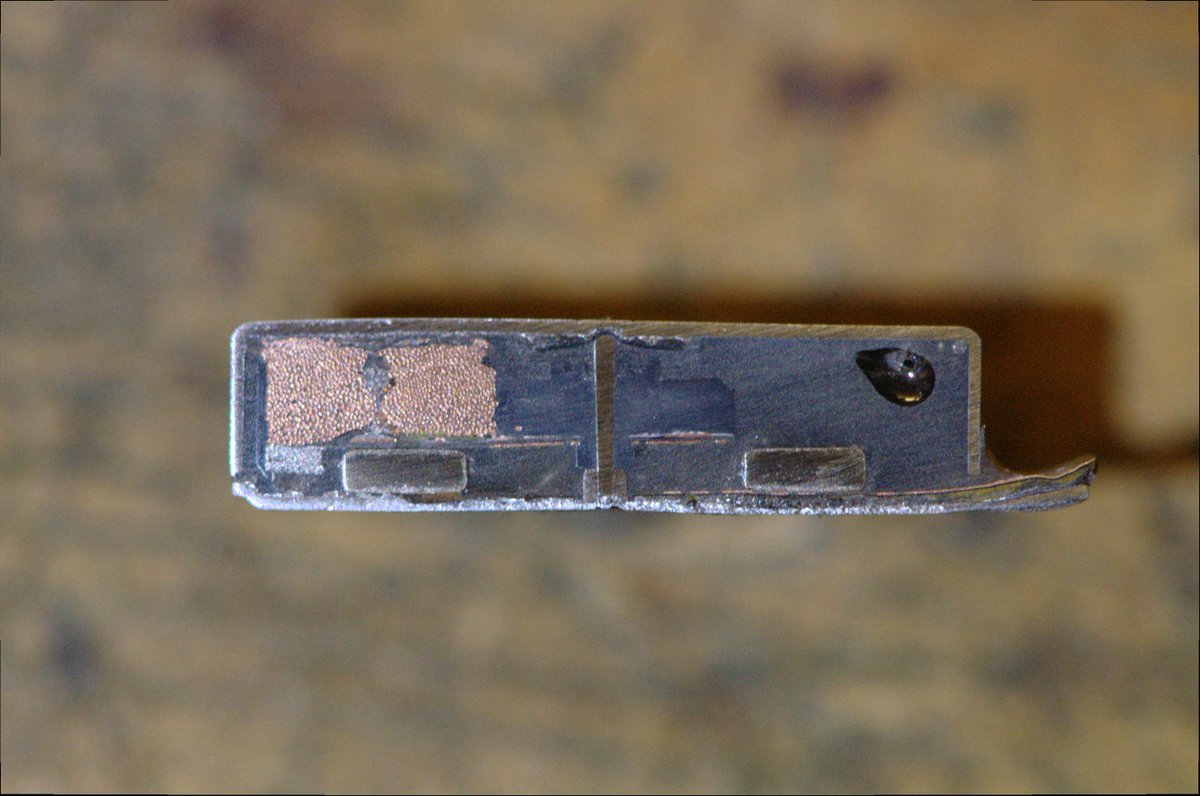
this is a cross section of an electrical component that interacts with you every day! in fact, there's a good chance you've got one very close to you even as you read this. what is it?pic.twitter.com/aOrGv1B5UT
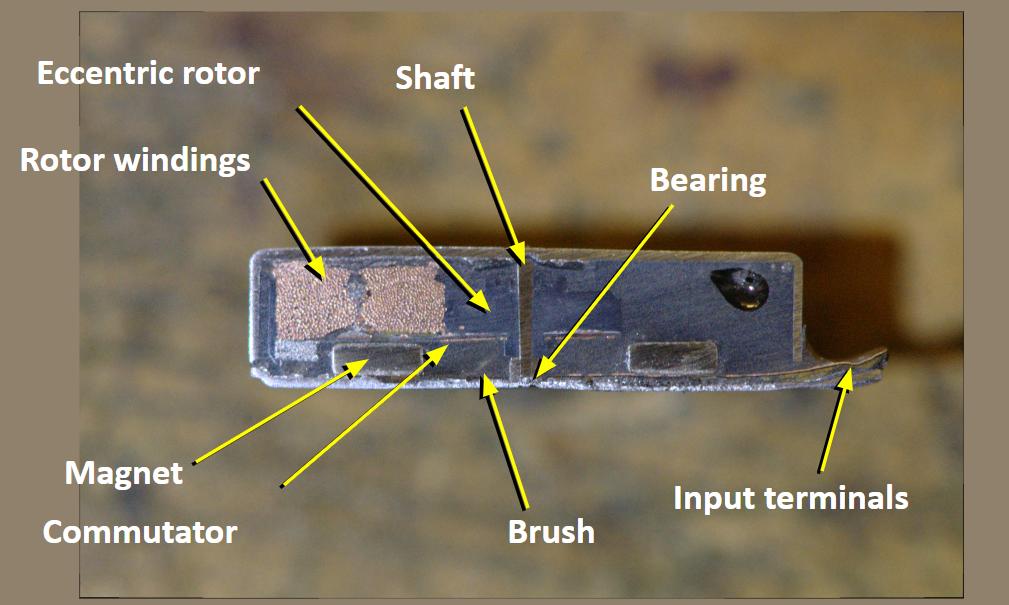
it's a vibration motor! this is the annotated cross section. (there's a little air bubble in the upper right that formed in the glue i used to hold it together for the sectioning process.)pic.twitter.com/BIJWYW0M5f
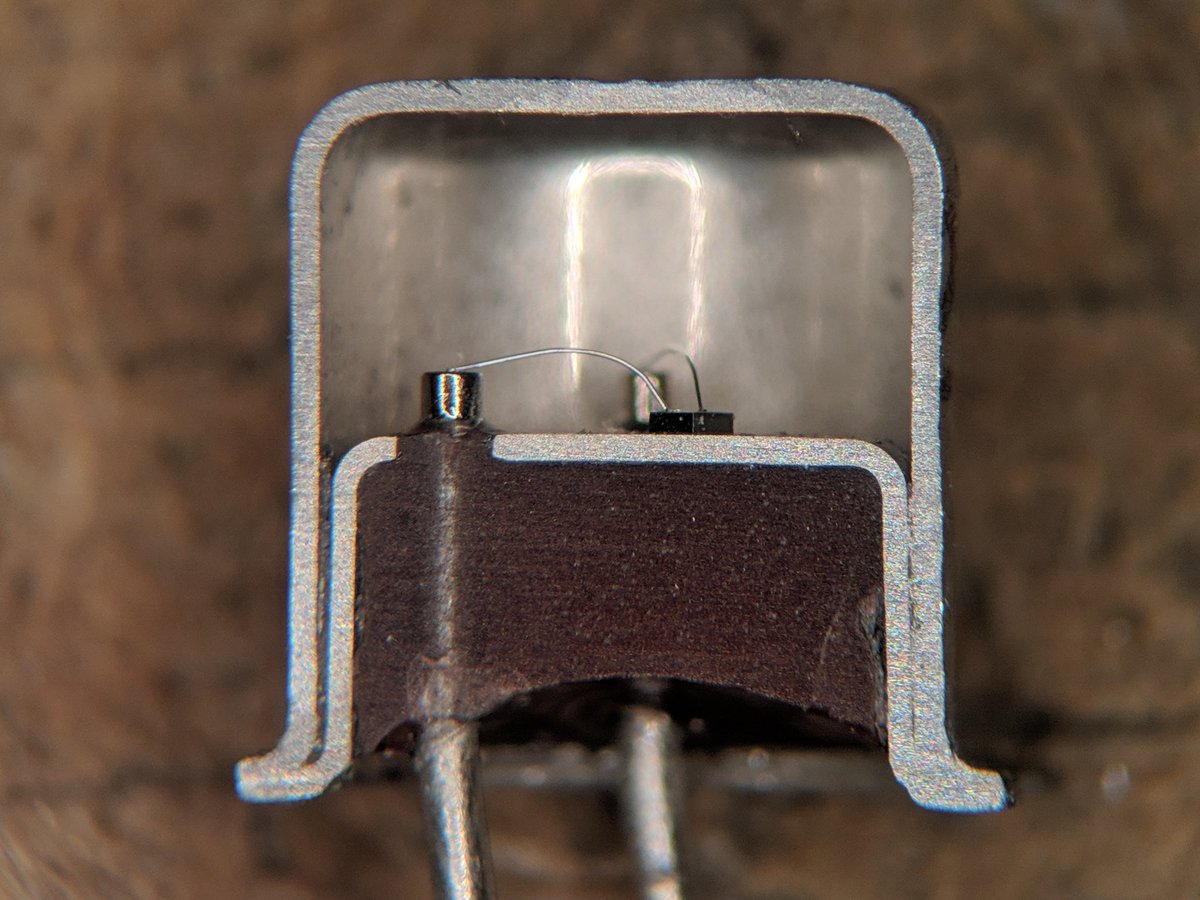
cross section of a 2N2222 in a TO-18 metal canpic.twitter.com/G3fkNLKivj
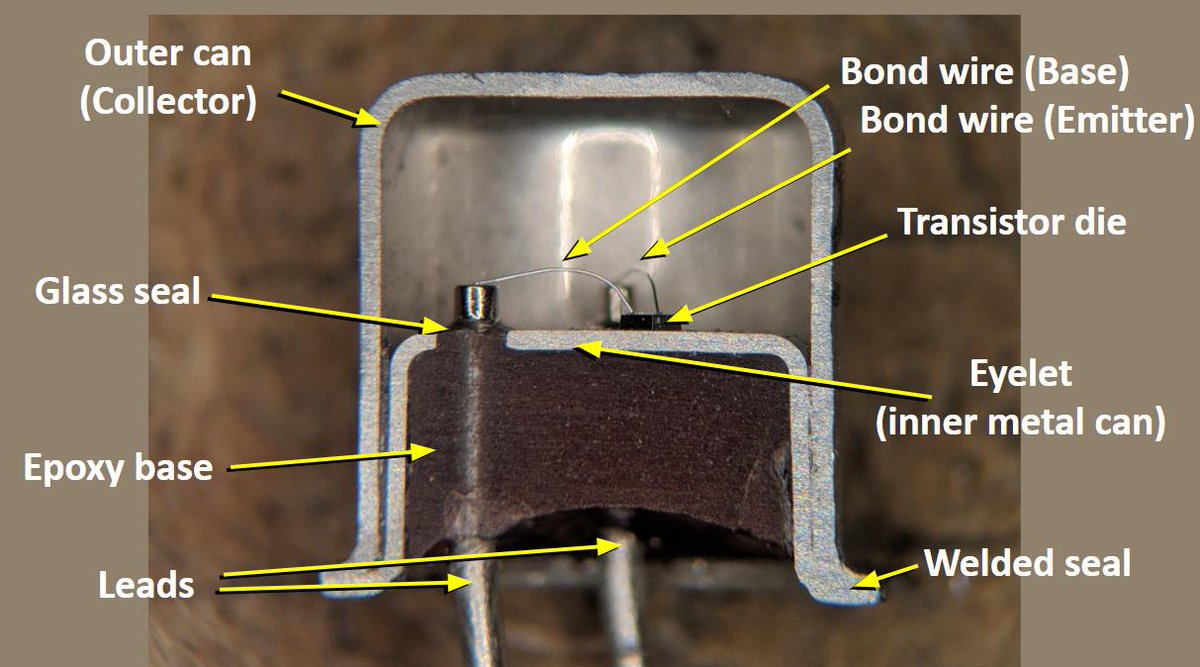
here's the annotated version of the 2N2222 in the TO-18 package. the package is actually pretty complicated! lots of materials science here.pic.twitter.com/bipfyTJwGr
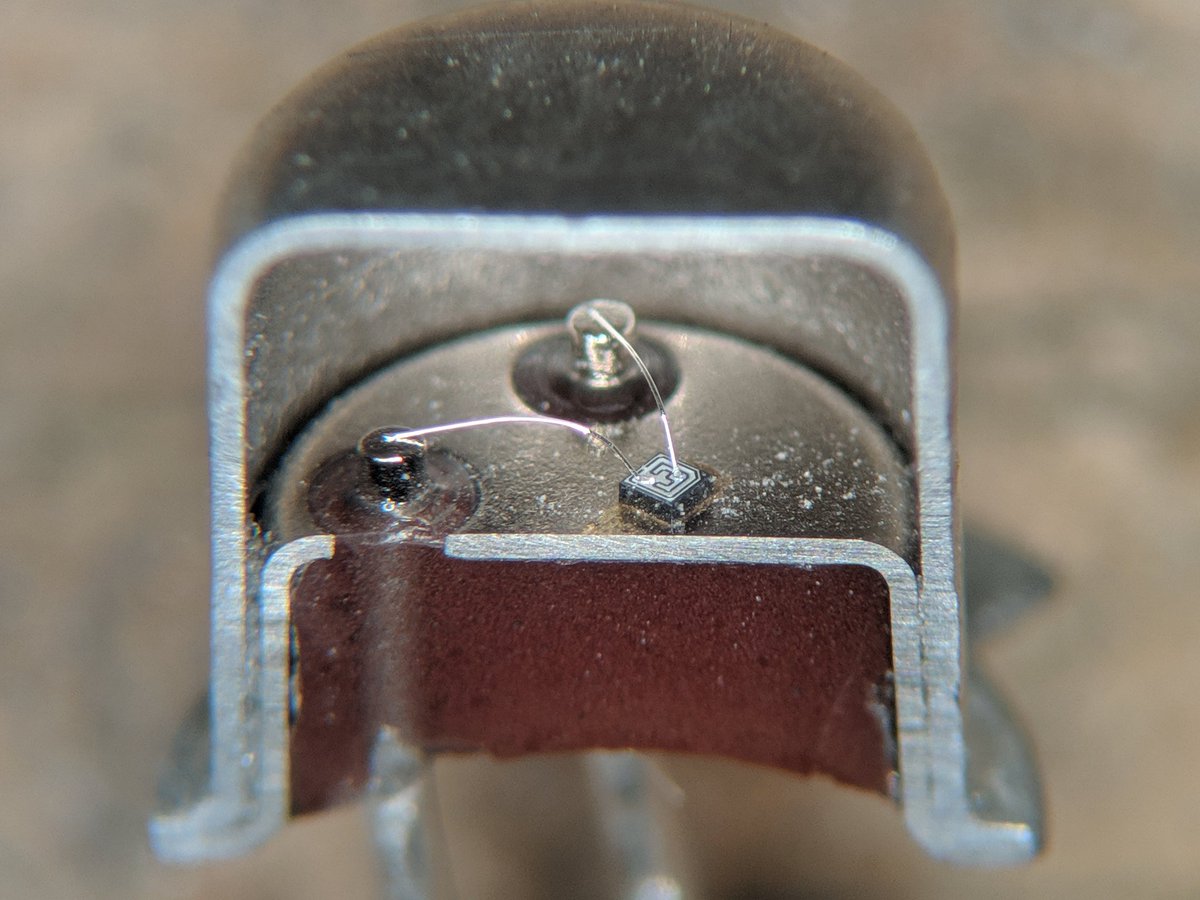
from this angle you can see the 2N2222 transistor die.  pic.twitter.com/lk9FyJrOL7
pic.twitter.com/lk9FyJrOL7
the transistor lights up like an LED! it happens if you reverse bias the base-emitter junction and trigger an avalanche breakdown (about 10V). h/t @whitequark for the technique.pic.twitter.com/3QfvHVzHSv
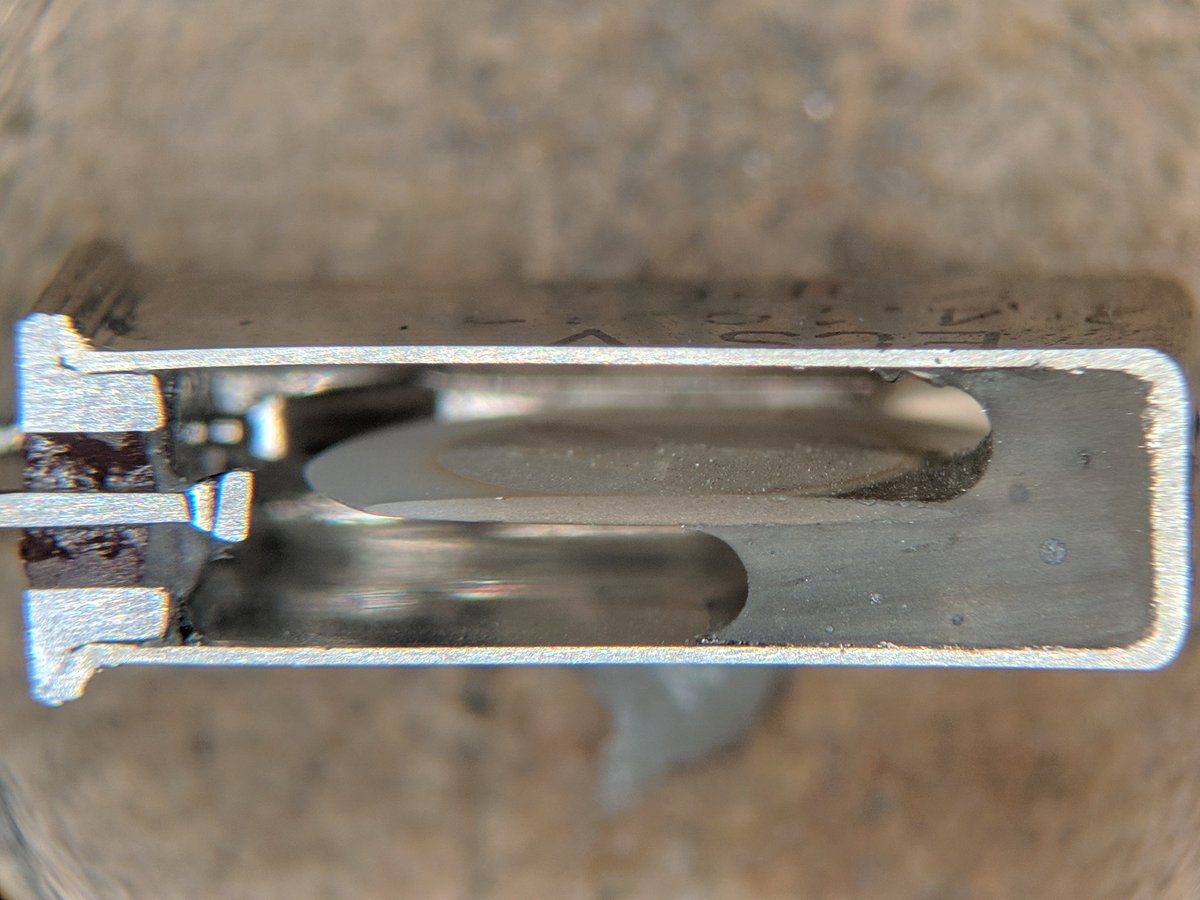
this is a cross section of a quartz crystal in an HC-49 package. ignore the blob of glue on the right, it was to hold the quartz in place during sectioning.pic.twitter.com/pX08VUmRI1
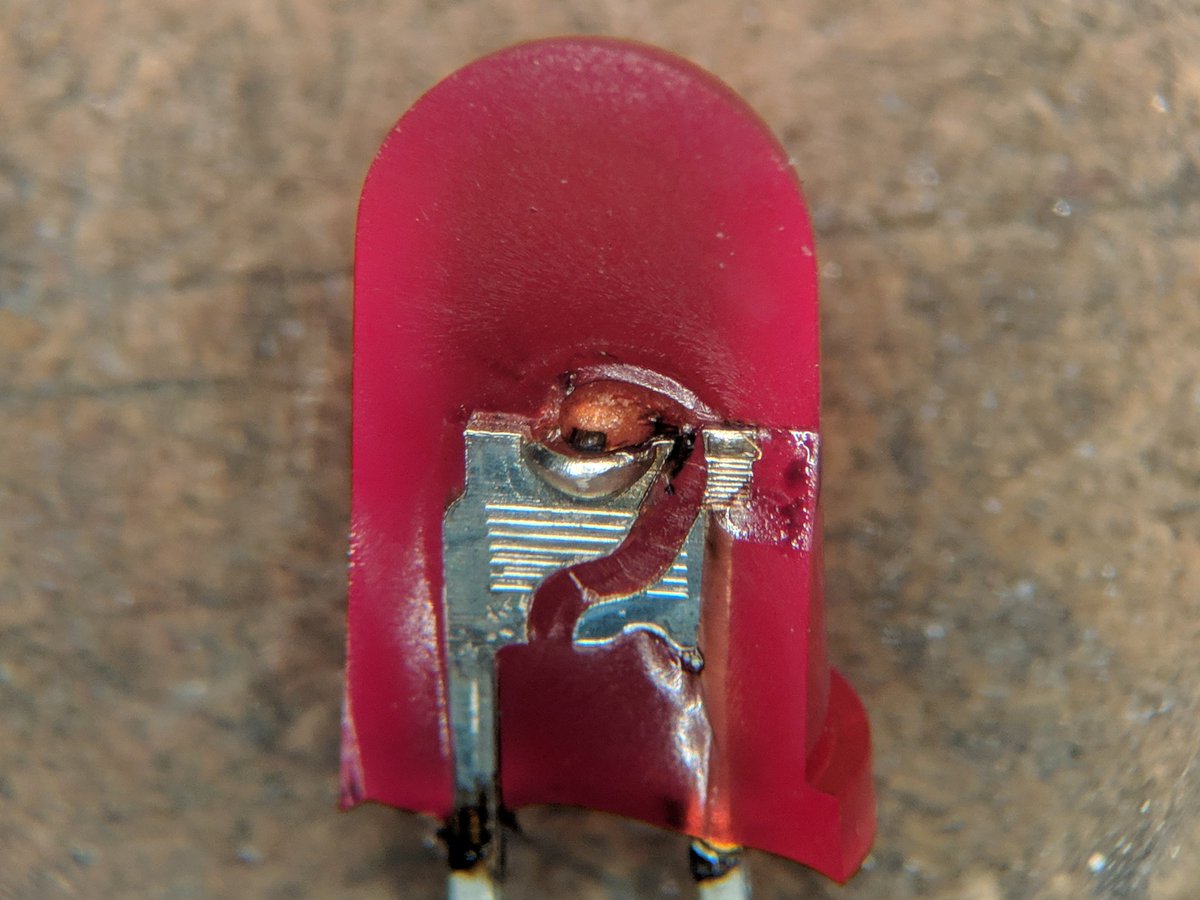
here's a cross section of a BLOWN LED. why is it so clean? IT CROSS-SECTIONED ITSELF. i have video proof to follow!pic.twitter.com/ijsz6bMQfa
video of an LED failing and cross-sectioning itself right down the middle!  pic.twitter.com/HE7o74Nygd
pic.twitter.com/HE7o74Nygd
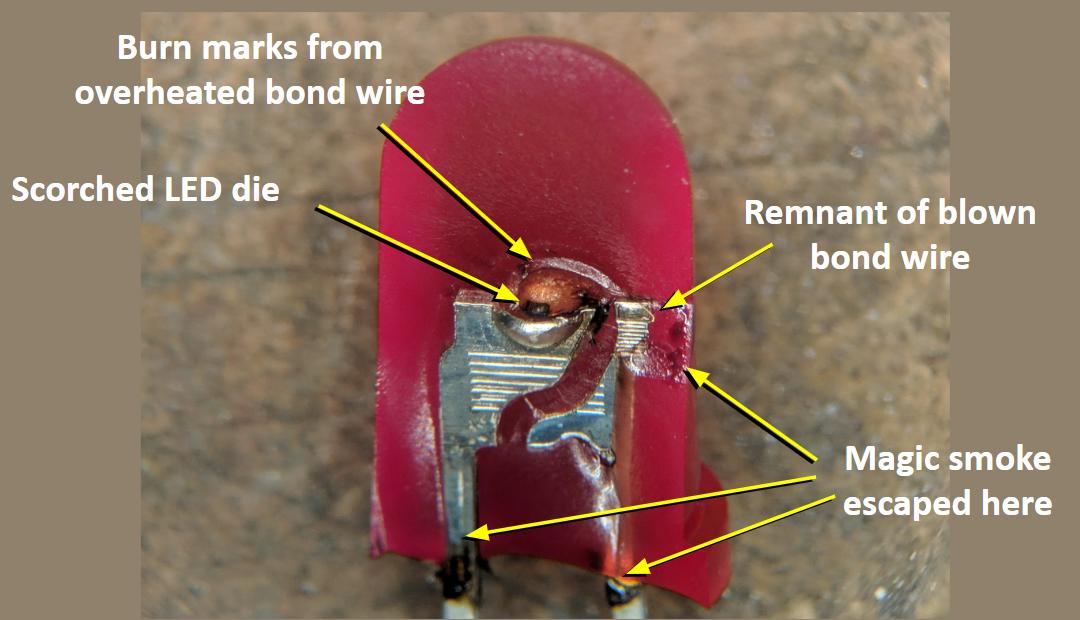
annotated version of the LED that failed and cross sectioned itself.pic.twitter.com/b9Sk7HuZED
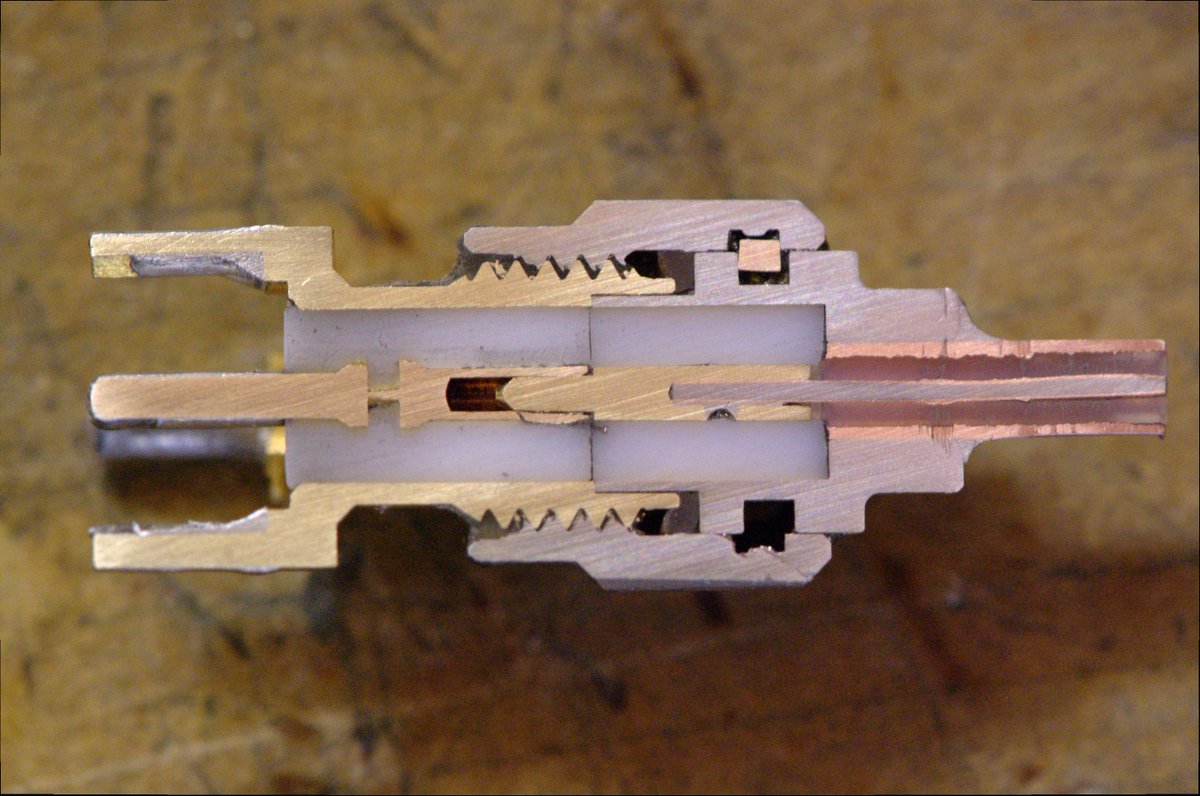
SMA connectors help move RF signals from place to place. here's an SMA mated connector pair cut in half. they are from two different manufacturers, but fit together perfectly -- tight tolerances are critical for good RF performance!pic.twitter.com/LGUo41Pyfh
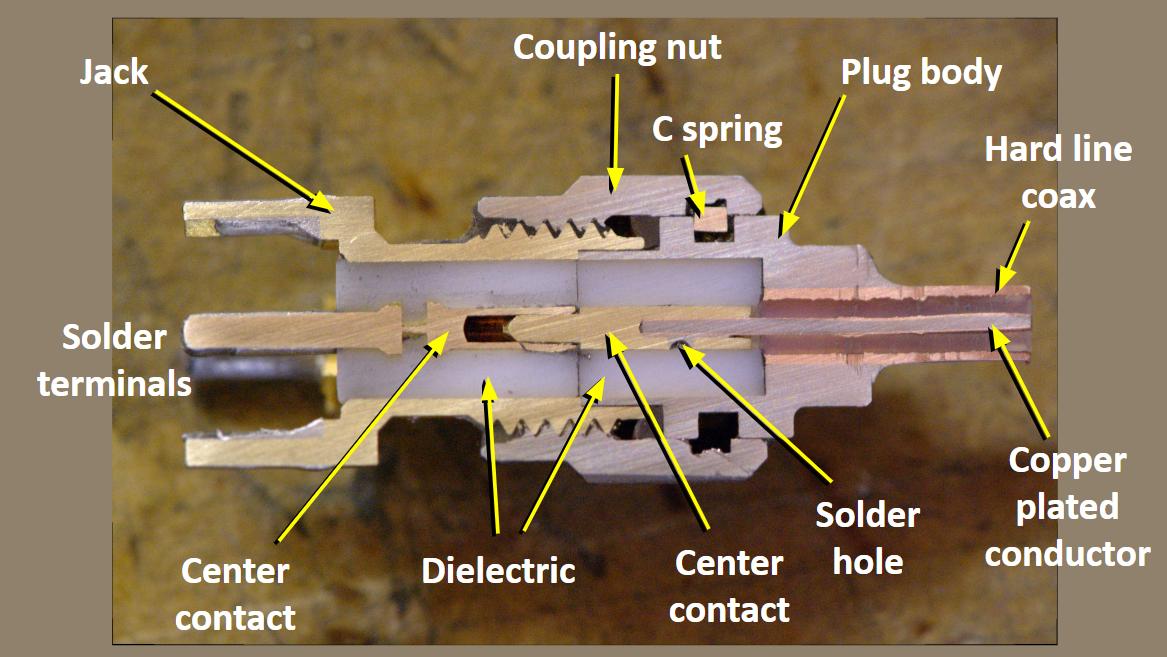
annotated cross section of a mated SMA connector pair. this annotation barely scratches the surface because there are a lot of very subtle design features that you'd need a whole class to cover.pic.twitter.com/2ejmd3fRdV
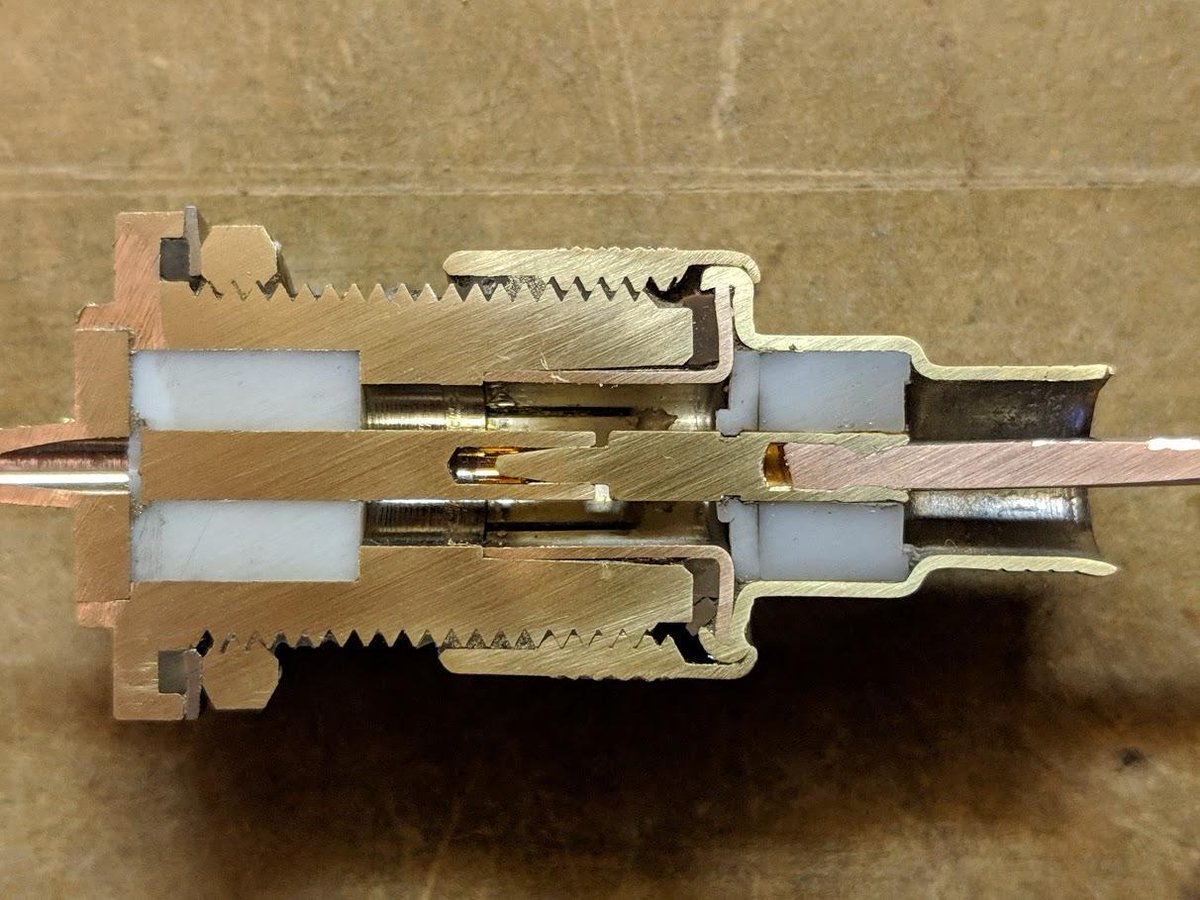
this is a type N connector cut in half. the 'N' stands for Neill, since Paul Neill worked on this connector while at Bell Labs. he also worked on the BNC connector (Bayonet Neill-Concelman).pic.twitter.com/4Yvnb5xCeK
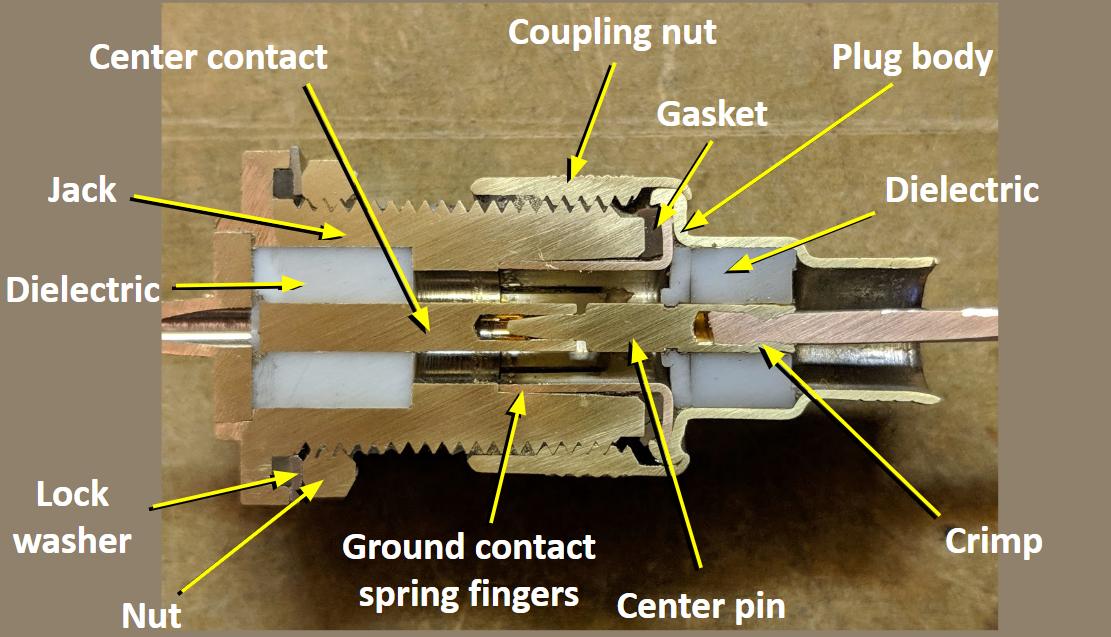
this is an annotated cross section of the type N connector. notice the distance between the center conductor and the ground shield changes depending on the dielectric material (air or plastic).pic.twitter.com/5qJErT5Vys
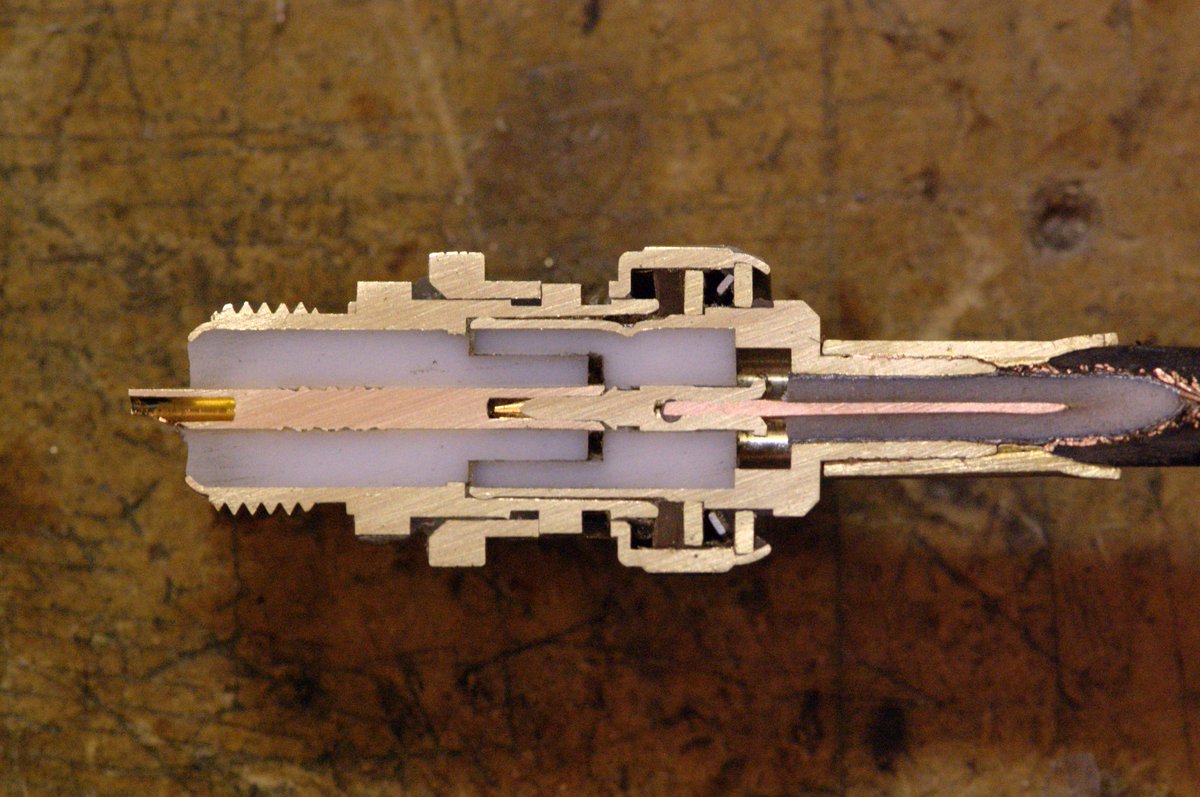
this is a common BNC plug and jack that have been cut in half. it is quite a complicated and subtle assembly!pic.twitter.com/IwfQQjDiuy
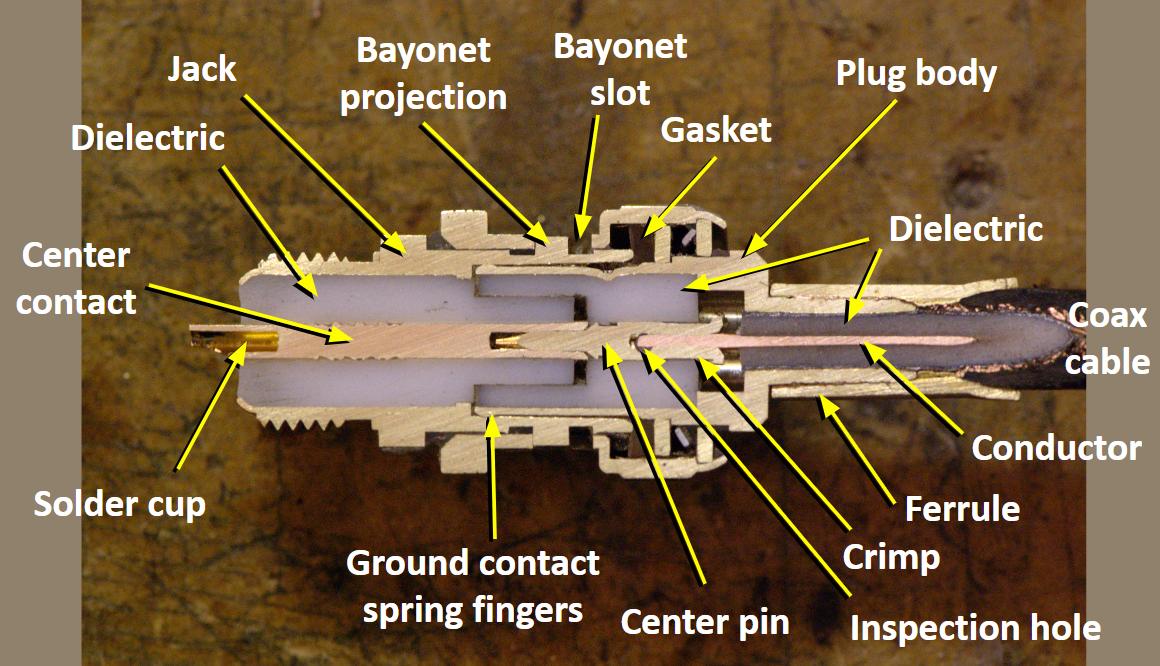
here is the annotated BNC plug and jack cross section. notice that the diameter of the center contact is consistent and only changes when it enters the cable, which is when the dielectric diameter changes as well? this is to maintain a constant 50 ohm impedance.pic.twitter.com/EuSC6XDSkA

it's fascinating to compare the 75 ohm and 50 ohm BNC connectors! the contacts are the same size to prevent damage when accidentally mating 75 ohm to 50 ohm connectors. to keep the 75 ohm impedance, the connector uses an air gap around the wider contacts.pic.twitter.com/paHITLy6XR
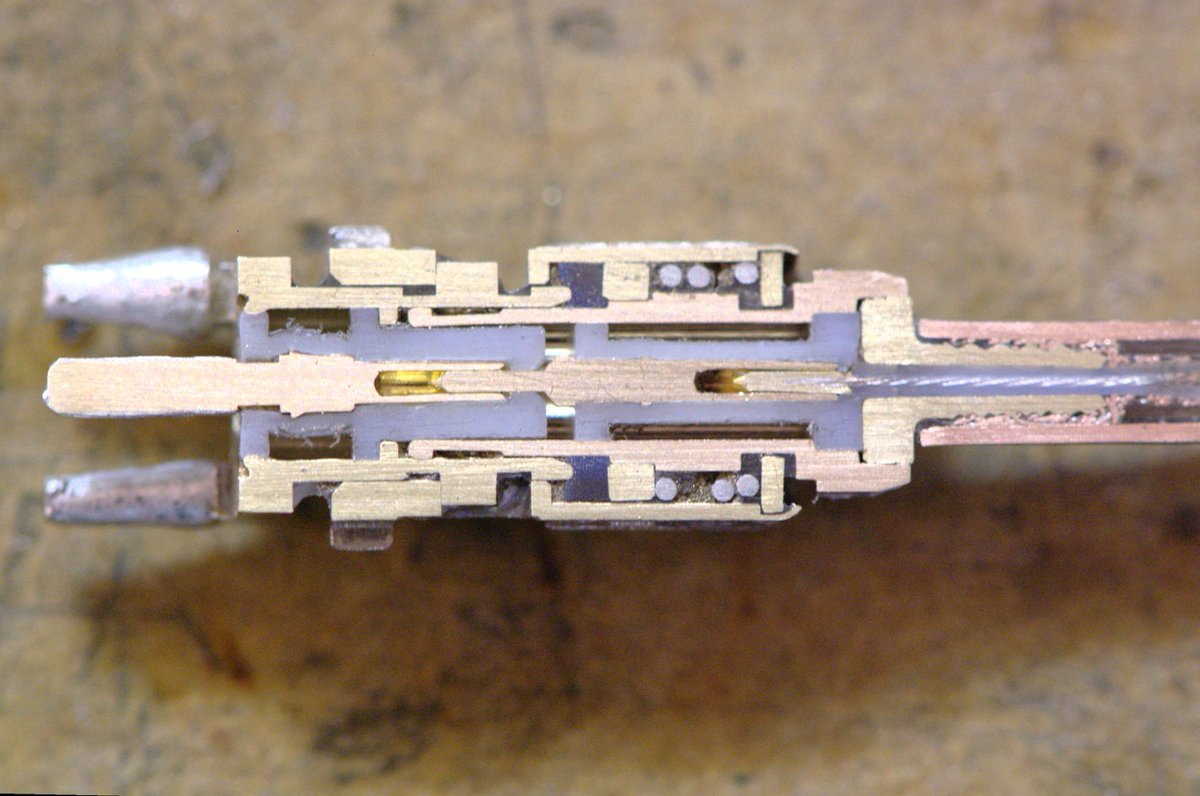
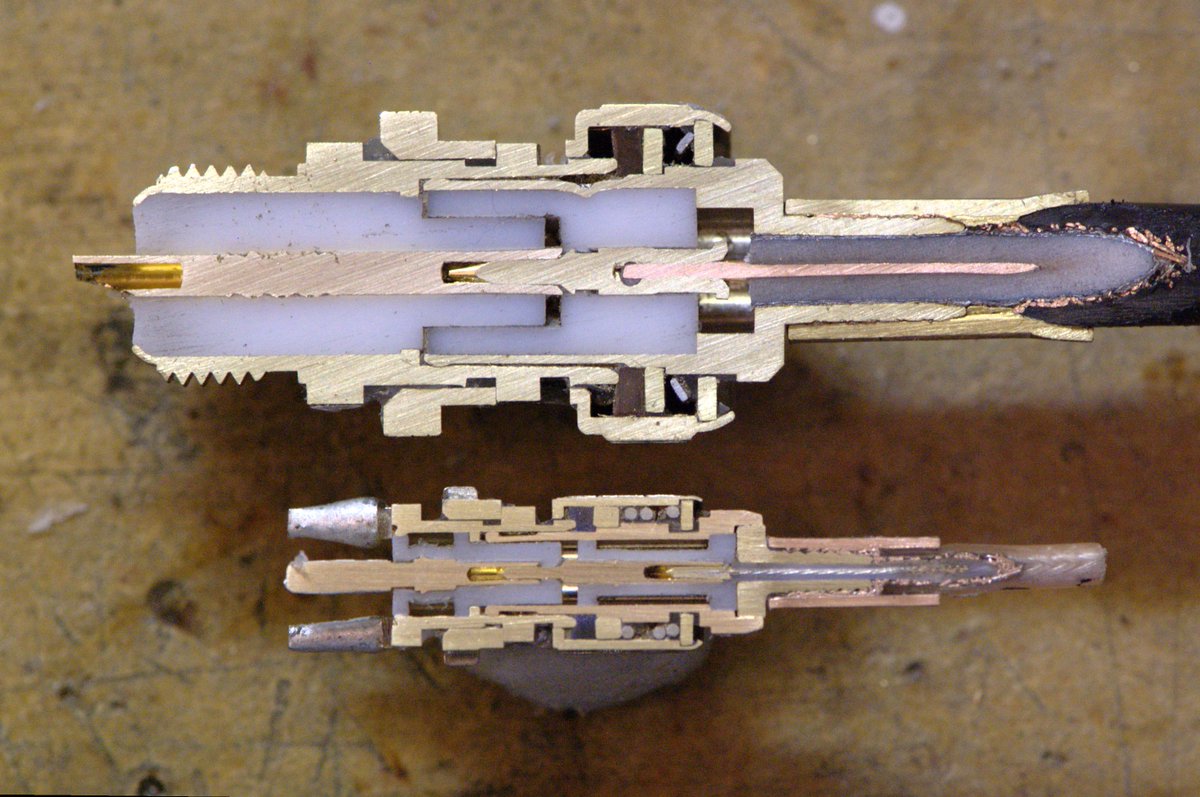
here's a slightly unusual connector. this is an HDBNC (High Density BNC) connector that's been cross sectioned. it's sometimes used for video broadcast equipment (75 ohms) but this example is 50 ohms. the second image compares it with standard BNC.pic.twitter.com/ywQVE9ZQdE
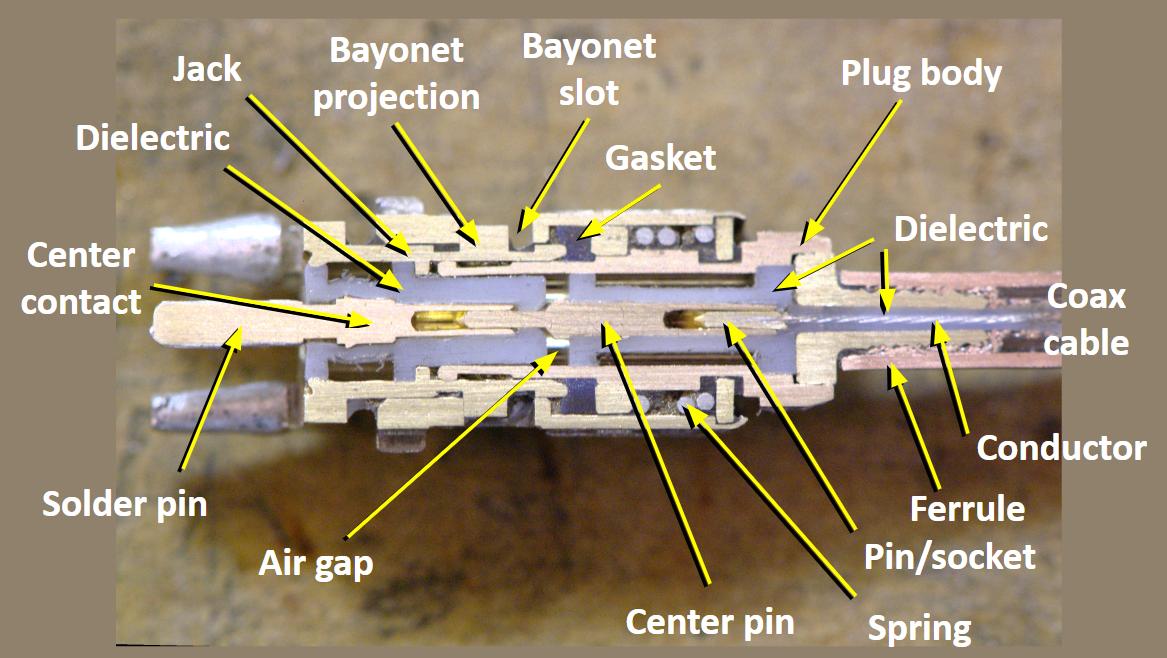
cross section of the HDBNC connector. there are a bunch of air gaps, dielectric thickness changes, and complex features that are telltale signs of computer modeling and simulation.pic.twitter.com/vD8HSiZSEa
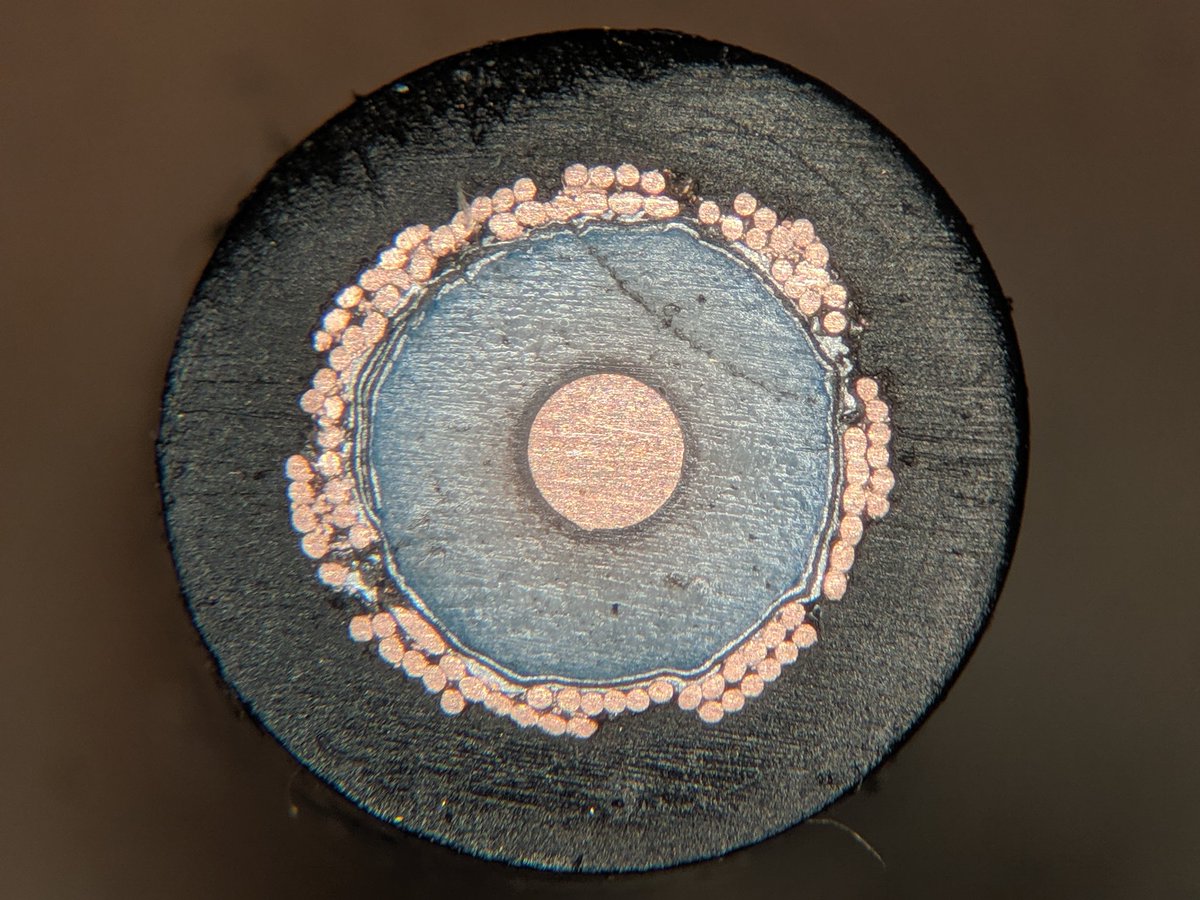
this is the cross section of a coaxial cable. it's a LMR-195 cable which is pretty similar to RG-58pic.twitter.com/tBDA5DmVmQ
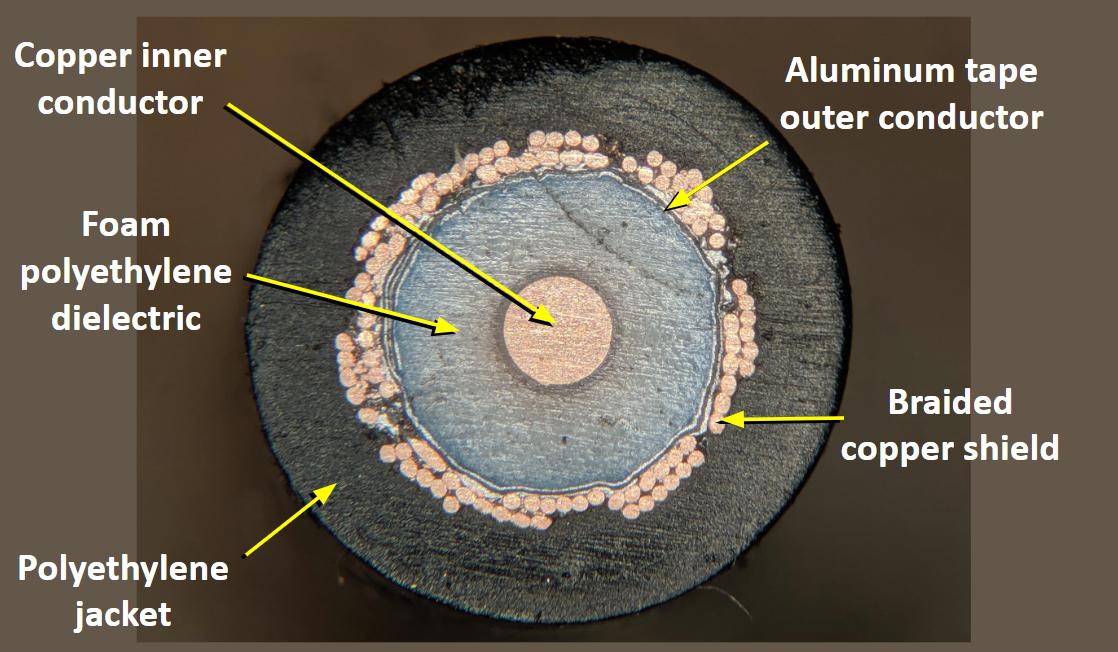
annotated cross section of the LMR-195 cable.pic.twitter.com/55aOYiOcl2
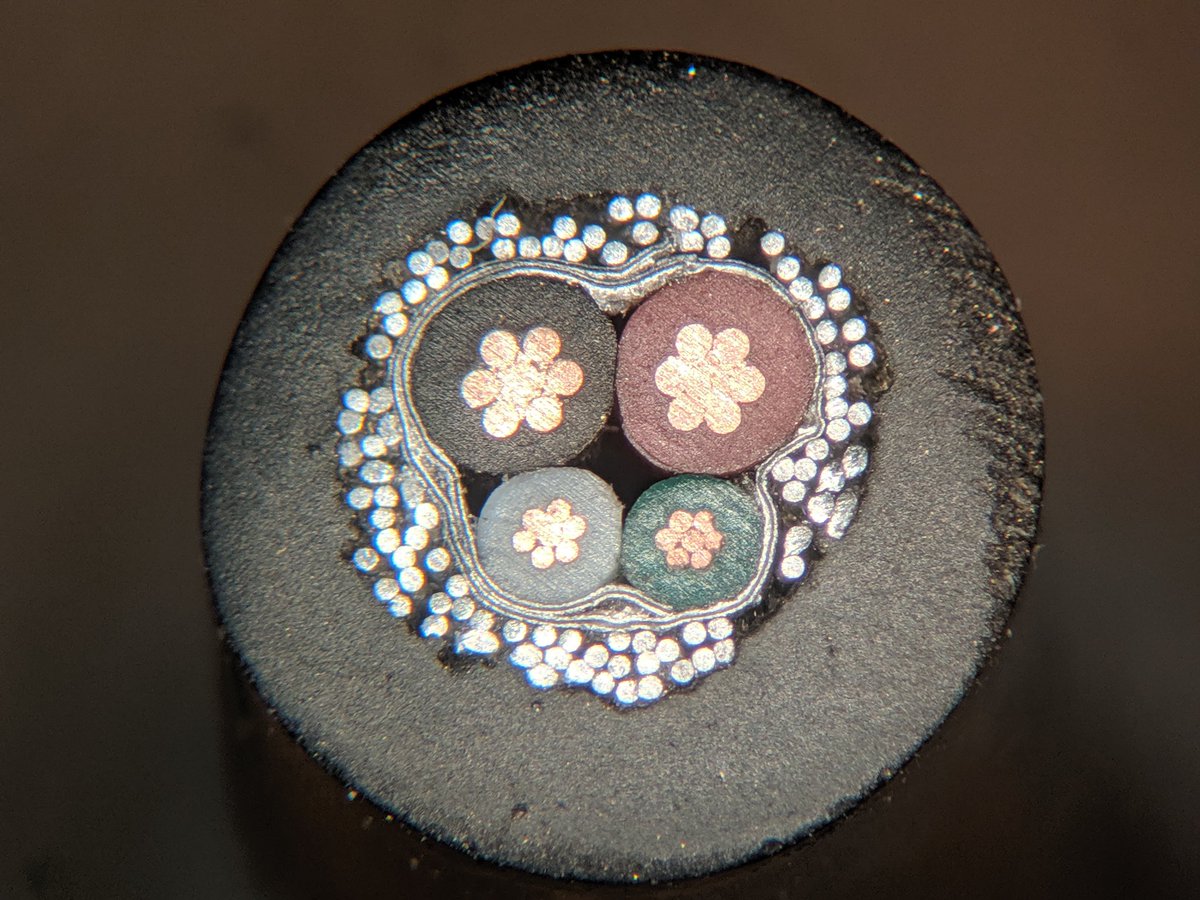

annotated cross section of a typical USB cable.pic.twitter.com/xHuLXFZ3c0
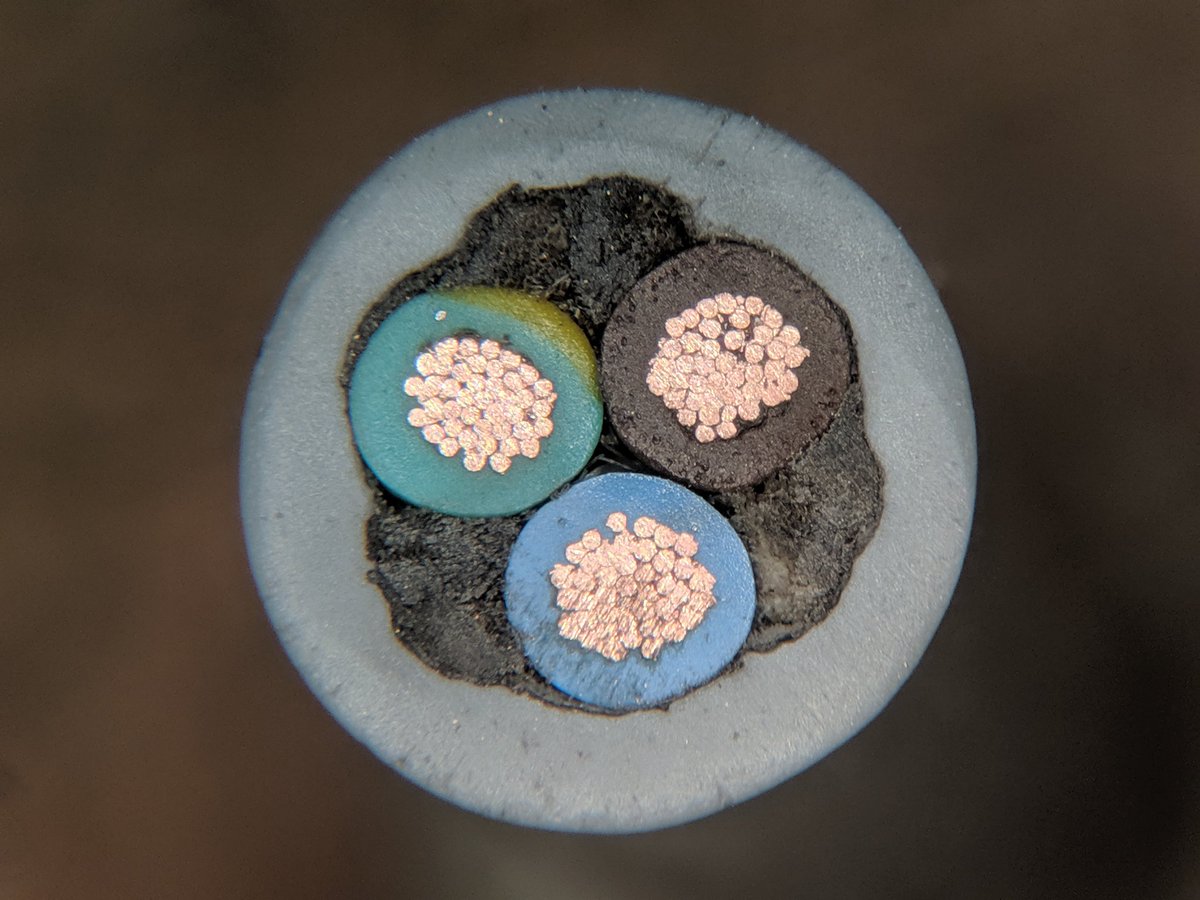
check out this cross section of an AC power cord. no, the other end is not plugged in.pic.twitter.com/yY6V6y2gZK
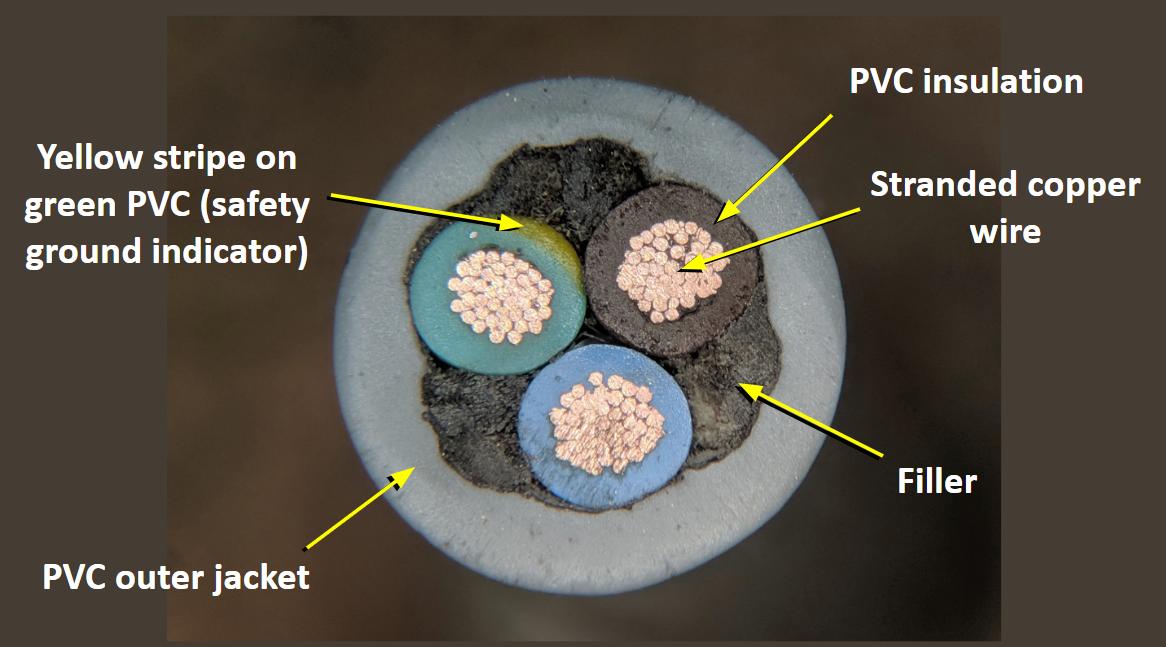
here's the cross section of the power cable. this is an older cord with outdated color codes. the filler also appears to be a natural material (possibly jute)pic.twitter.com/IfmH7QKk6Z
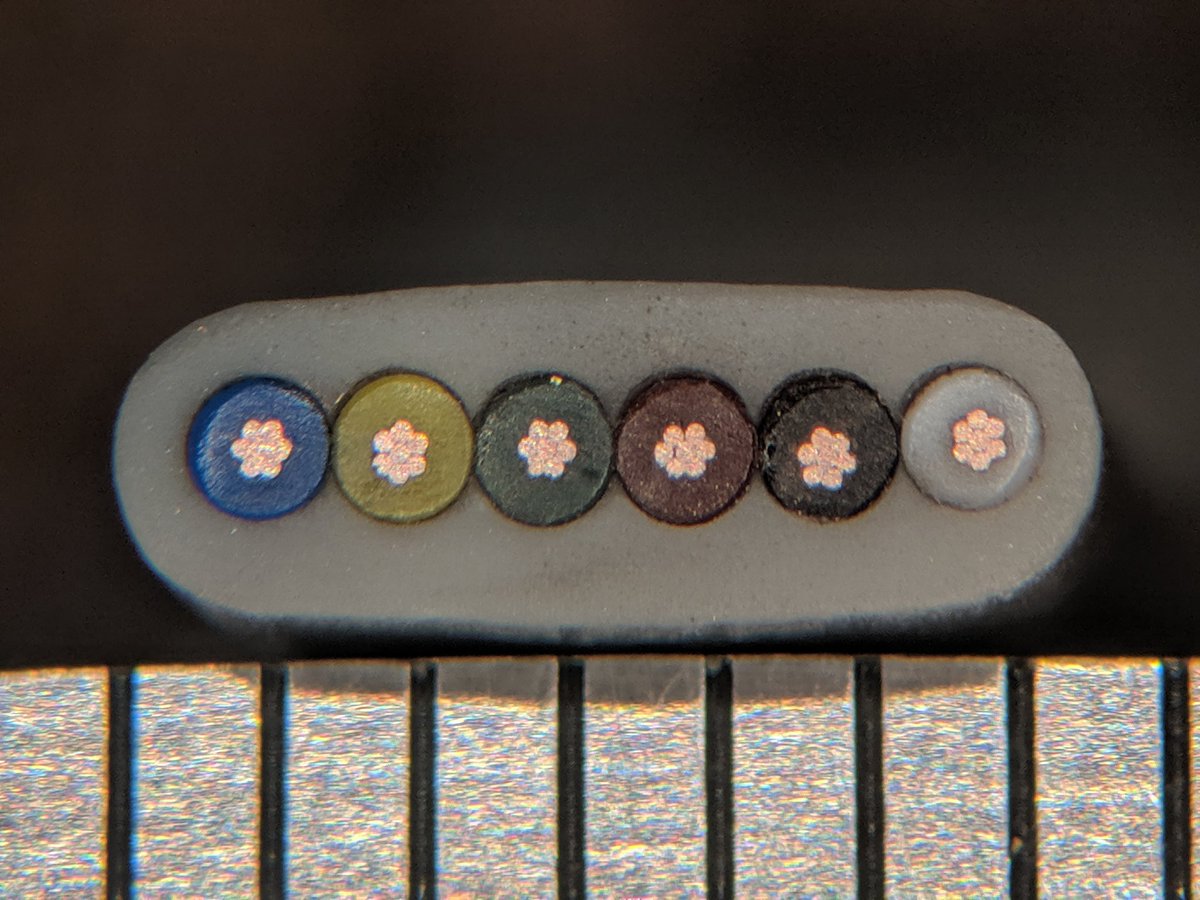
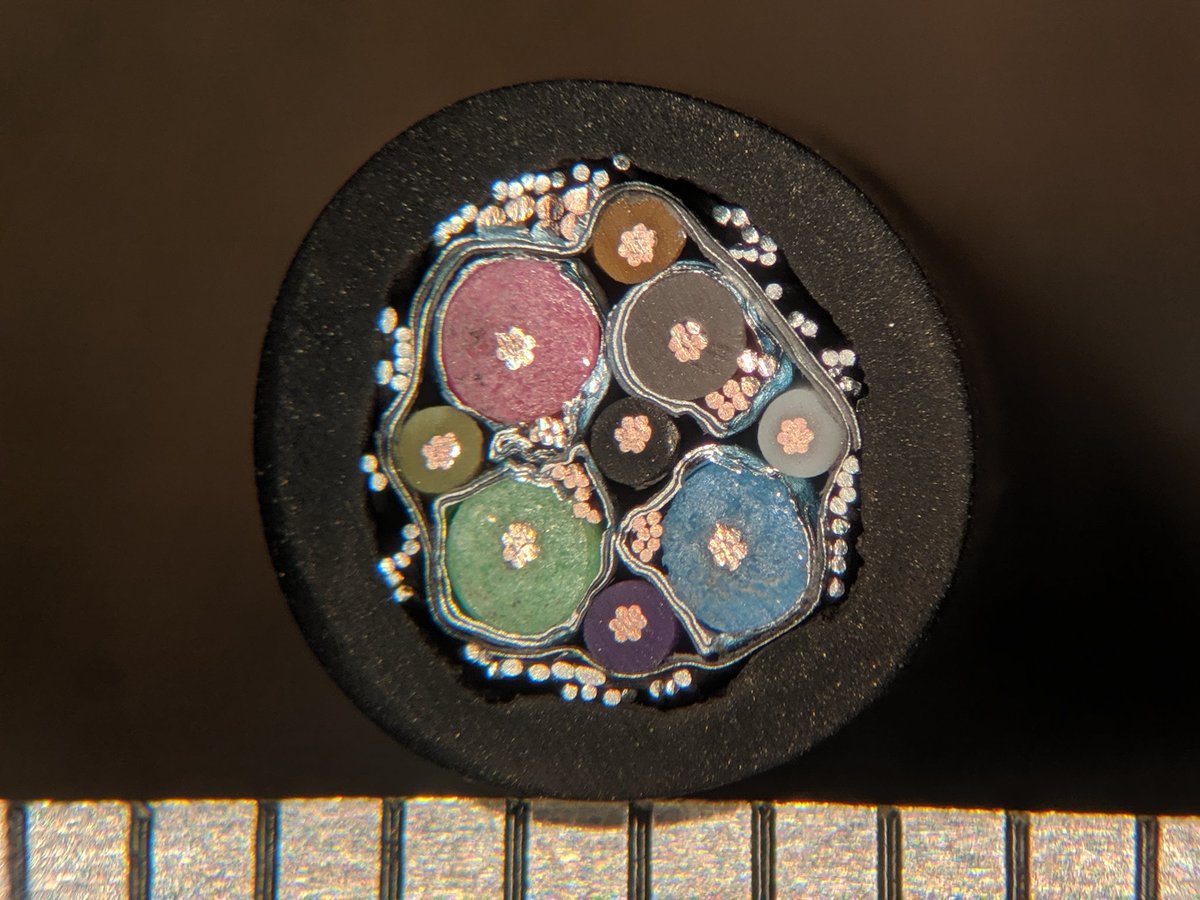
cross section of an old-school VGA cable. i like the color coding. scale is 1mm/div.pic.twitter.com/ROy92NDPHC
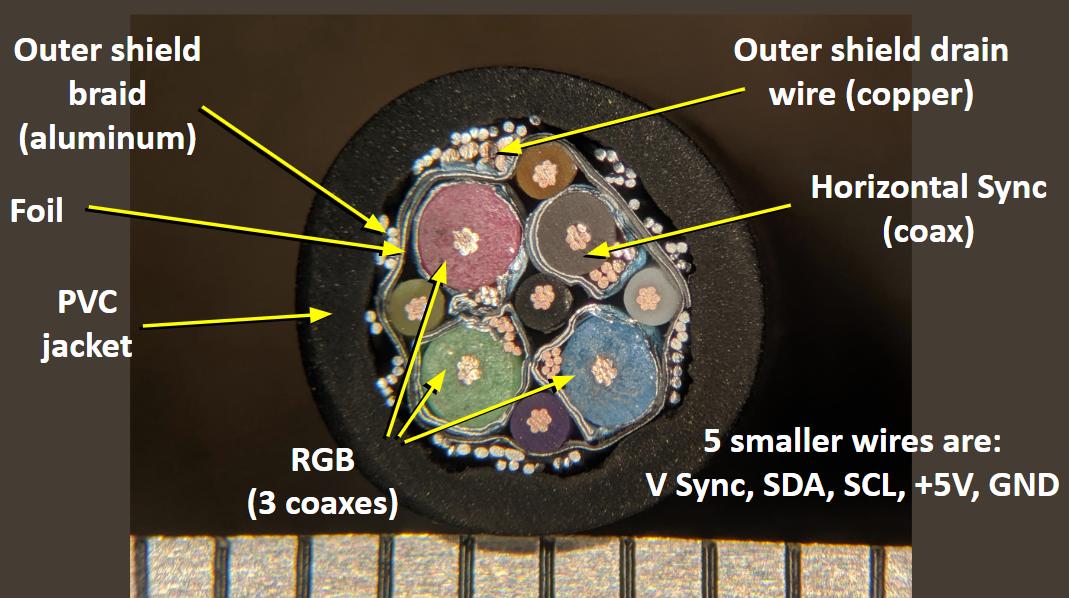
here's the annotated cross section of the VGA cable. each red, green, and blue signal gets its own little coaxial cable, as does the horizontal sync signal. vertical sync is low frequency and noise tolerant, so it's just a wire. same with the DDC signals (SDA, SCL, +5V, GND)pic.twitter.com/rsM2ncduvm
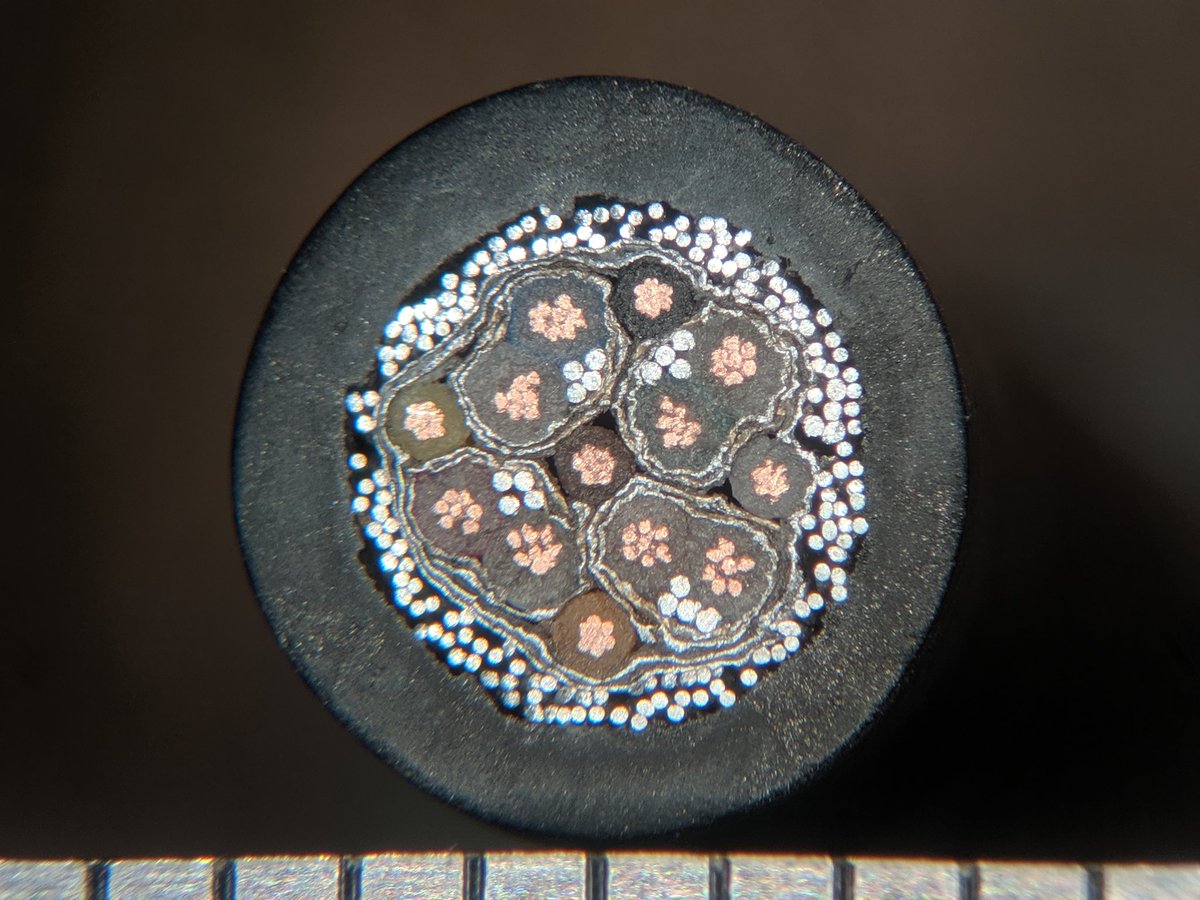
cross section of a DVI-D single link cable. all that aluminum makes me think it's a cheap cable.pic.twitter.com/tiYANOMPy9
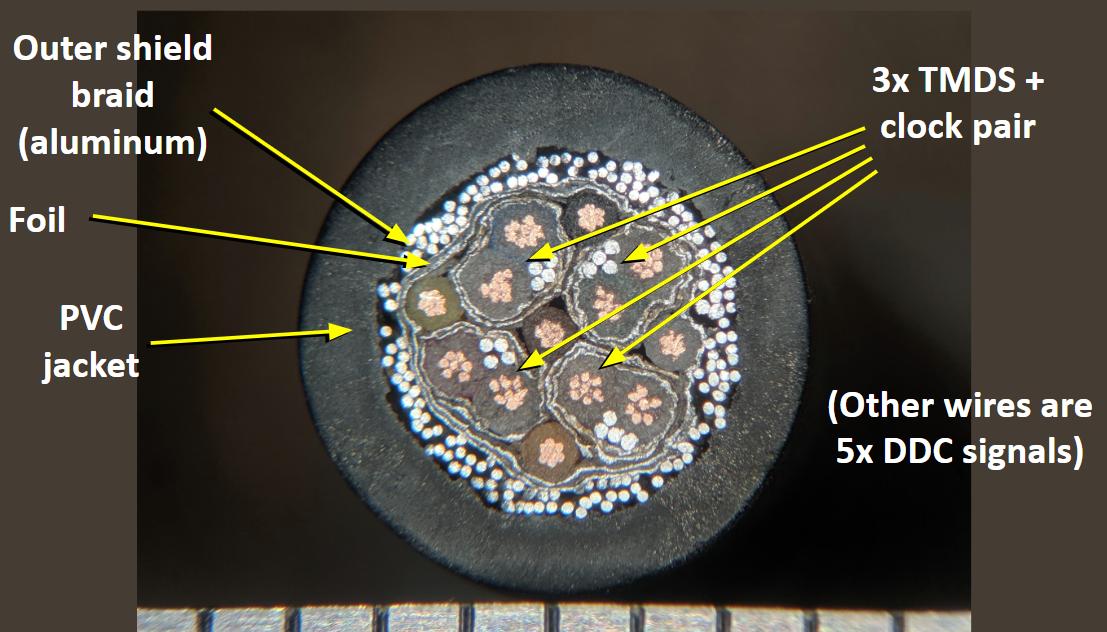
and the DVI-D single link cable but with annotations.pic.twitter.com/B9VpBCrqby
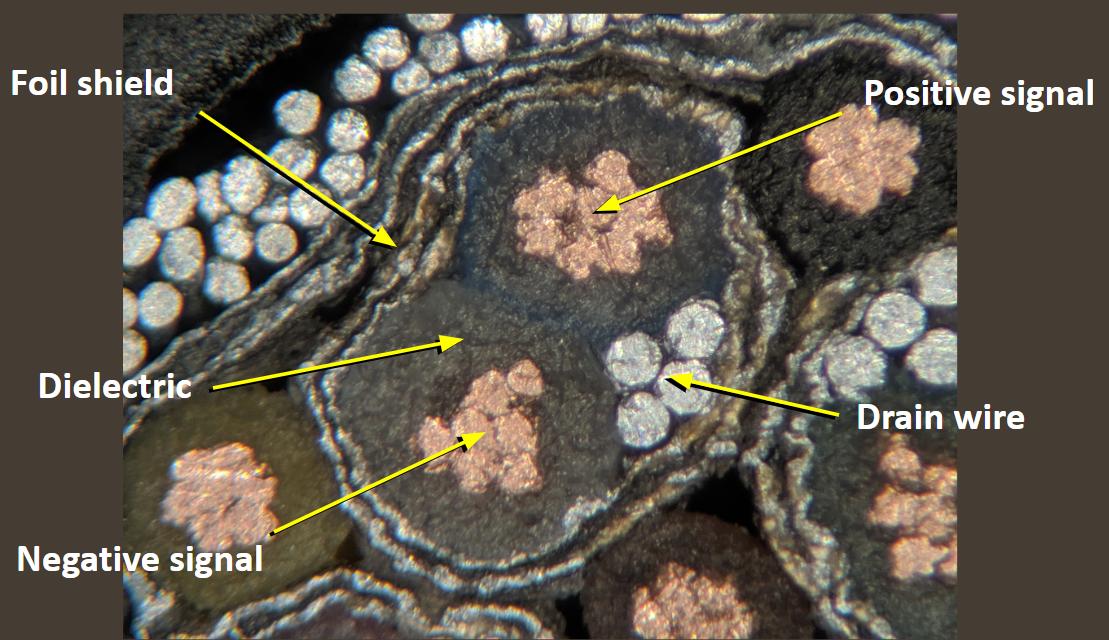
closeup of a single differential pair inside the DVI-D single link cable. the geometry has to be tightly controlled to maintain a constant impedance!pic.twitter.com/9DBPP8a388
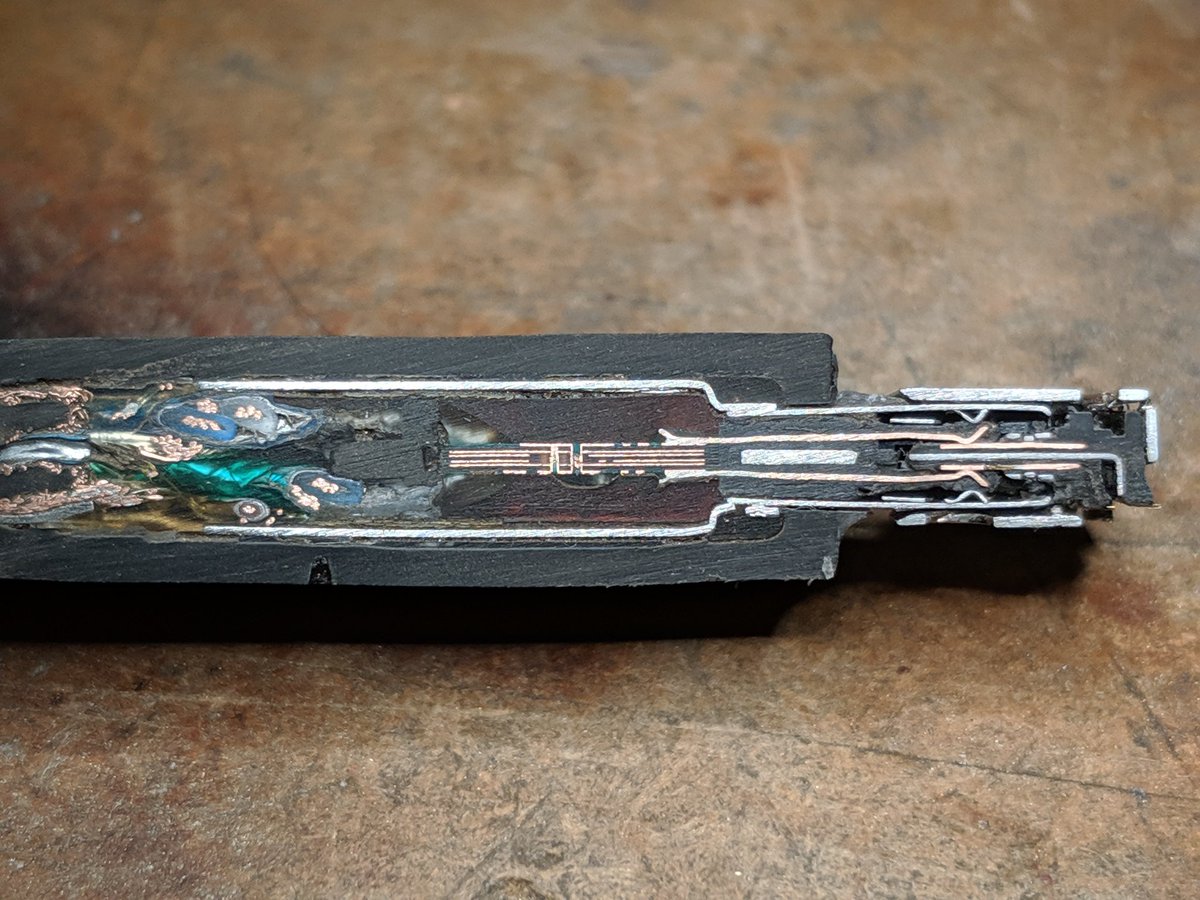
for your inspection: this cross section of a USB-C connector. it's very complex!pic.twitter.com/ARB7ChMHJN
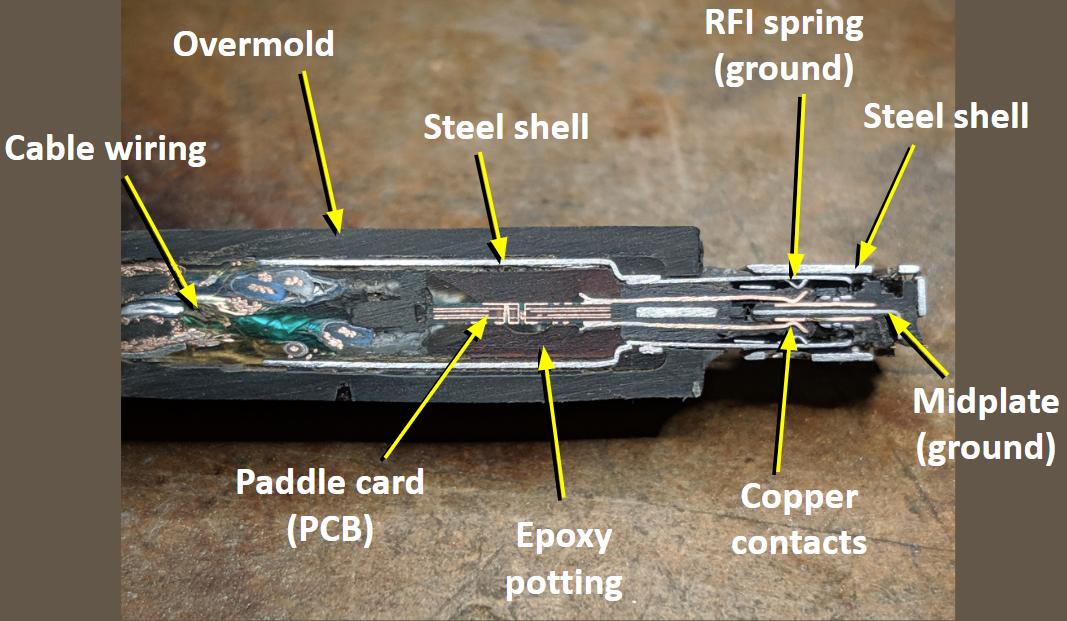
there really isn't enough room for all the annotations you'd need to fully describe this USB-C connector cross section. so here are the highlights.pic.twitter.com/mbCPJLQrNa
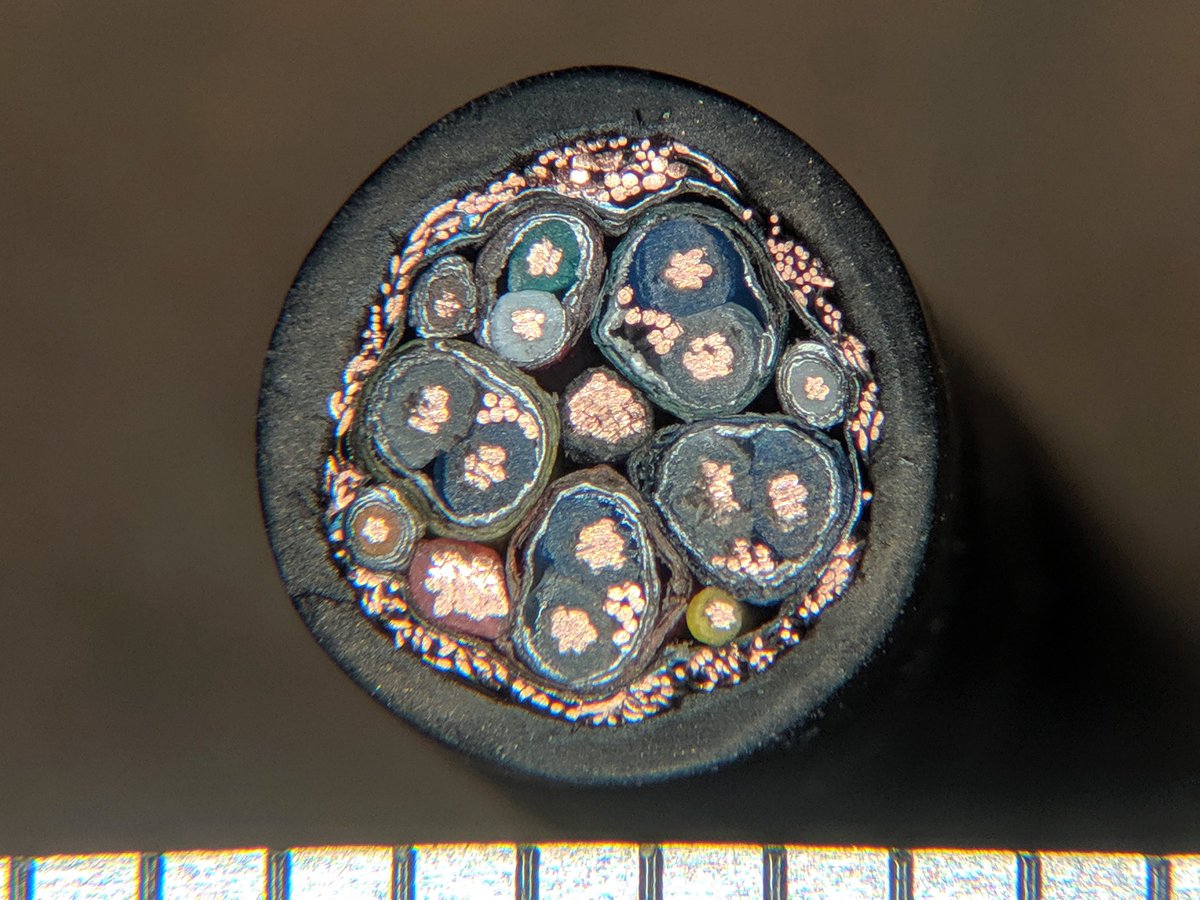
ever wonder what's inside your USB-C cable? here's a cross section of one! this one can handle 10Gbps.pic.twitter.com/diiOEmNN6s
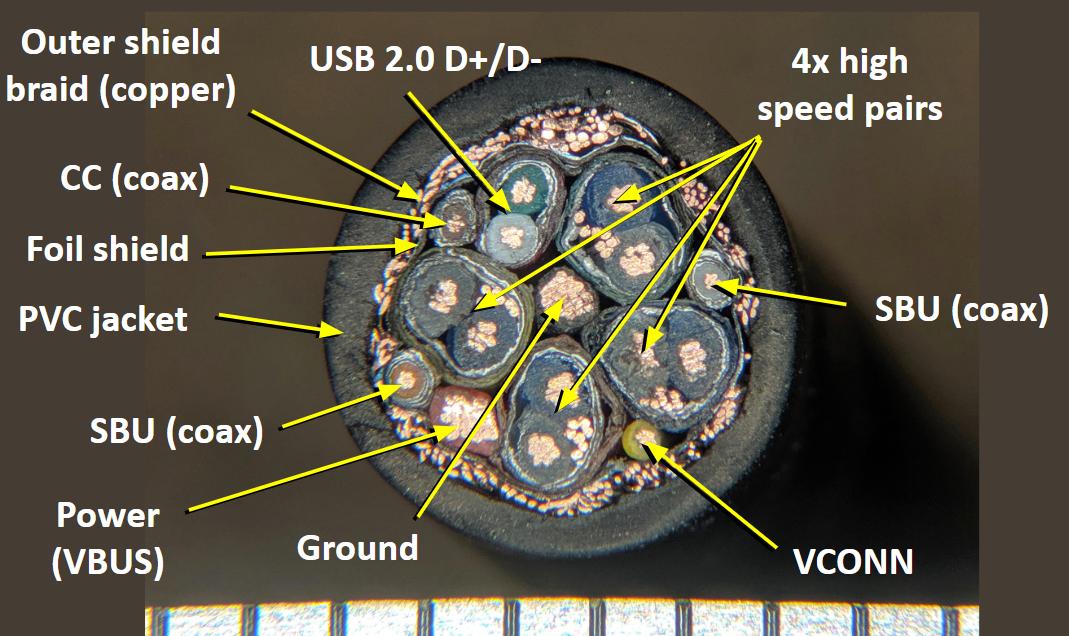
and this is what all the little wires and things are for. SBU stands for "SideBand Use"--DisplayPort alt mode uses them for I2C or CEC commands over a special encoded format. CC is the Configuration Channel and decides VBUS voltage and which end is source/sink.pic.twitter.com/R2iz0hKhAv
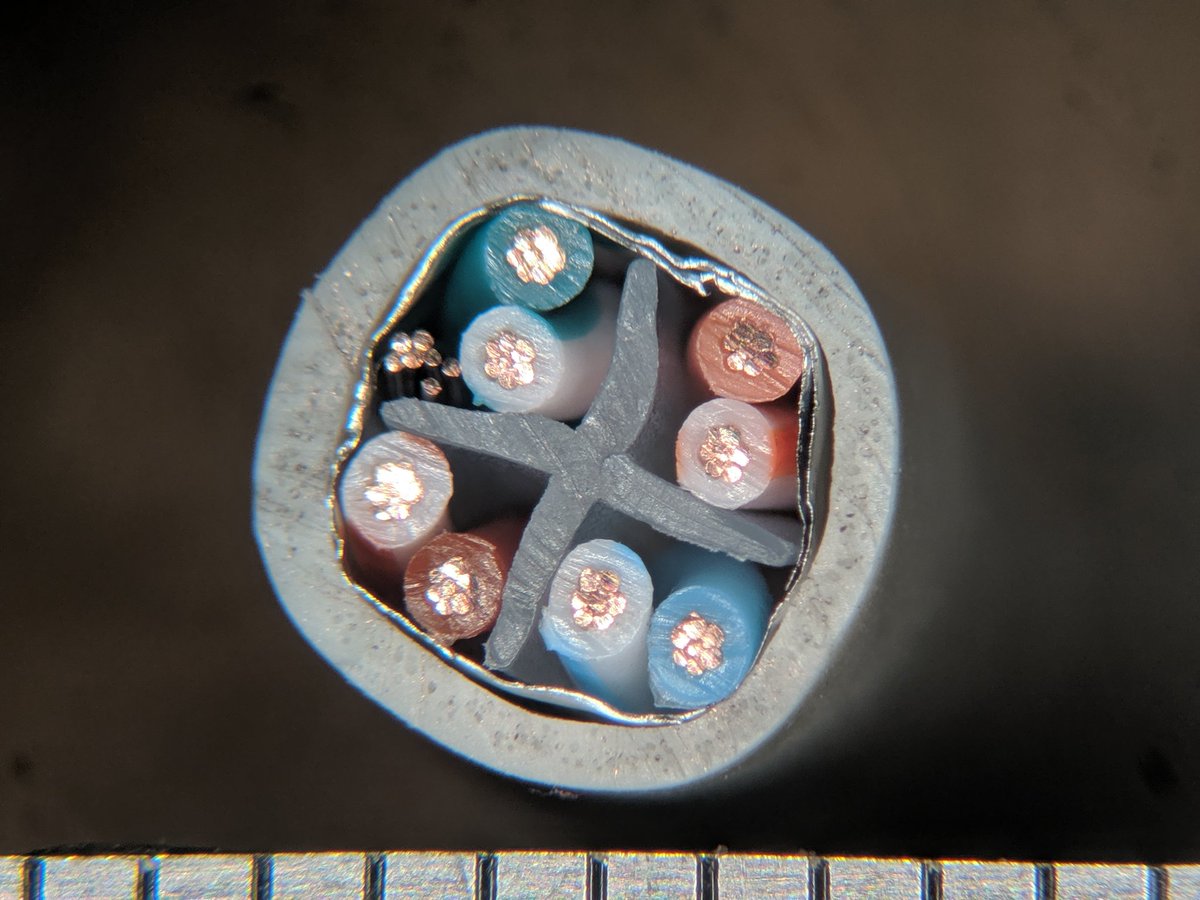
this cat6 cable is shielded and has a drain wire.pic.twitter.com/24ASVDtxCc
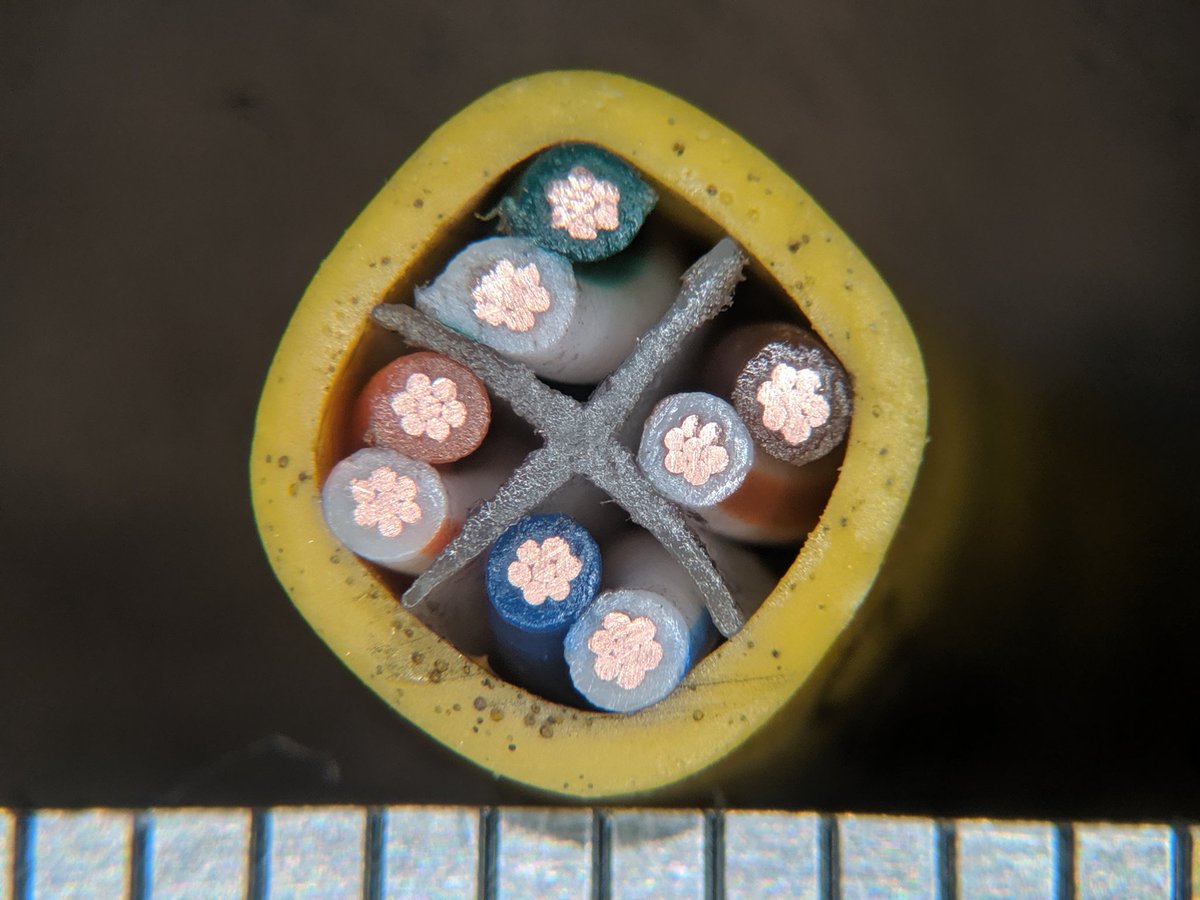
and here's a cat6 patch cable! notice the plastic  separator? it reduces crosstalk between pairs.pic.twitter.com/vcbTmE5k9N
separator? it reduces crosstalk between pairs.pic.twitter.com/vcbTmE5k9N
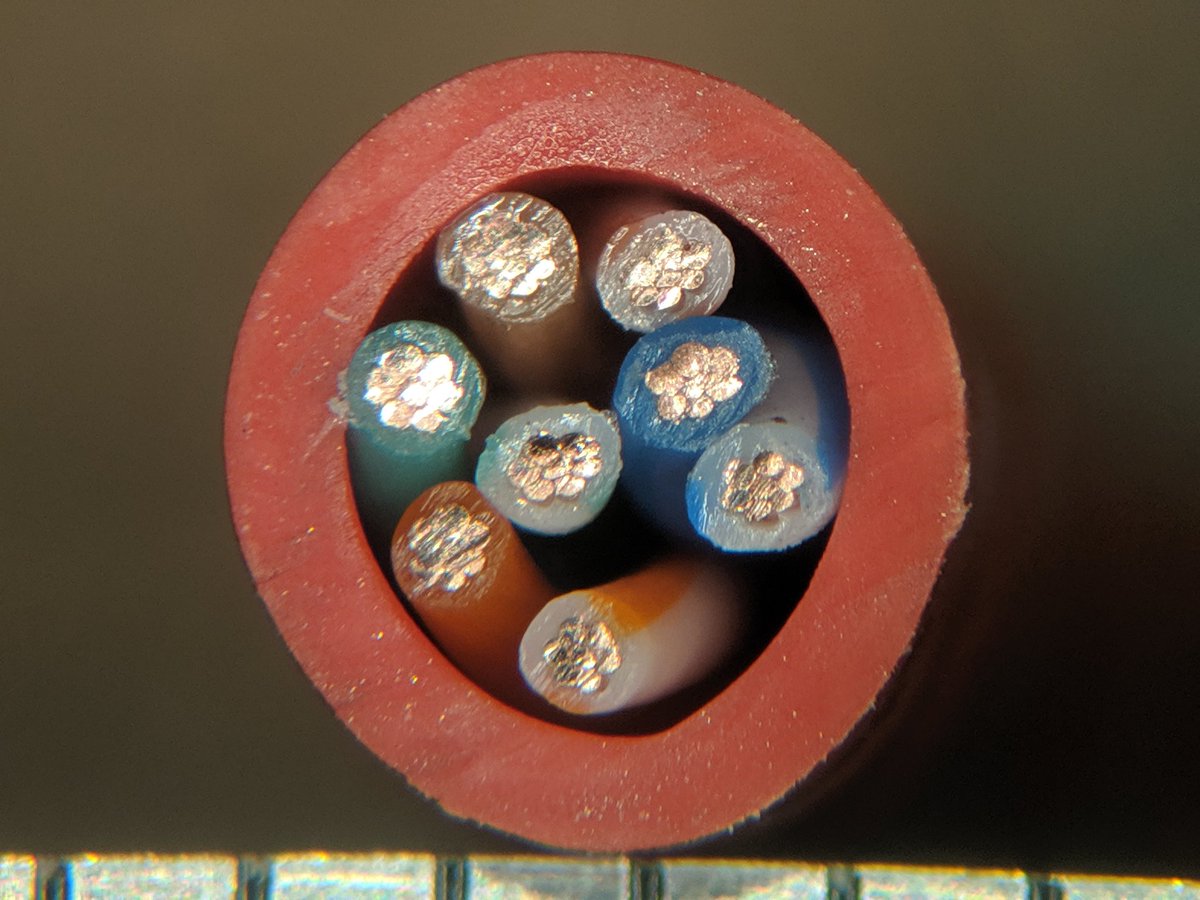
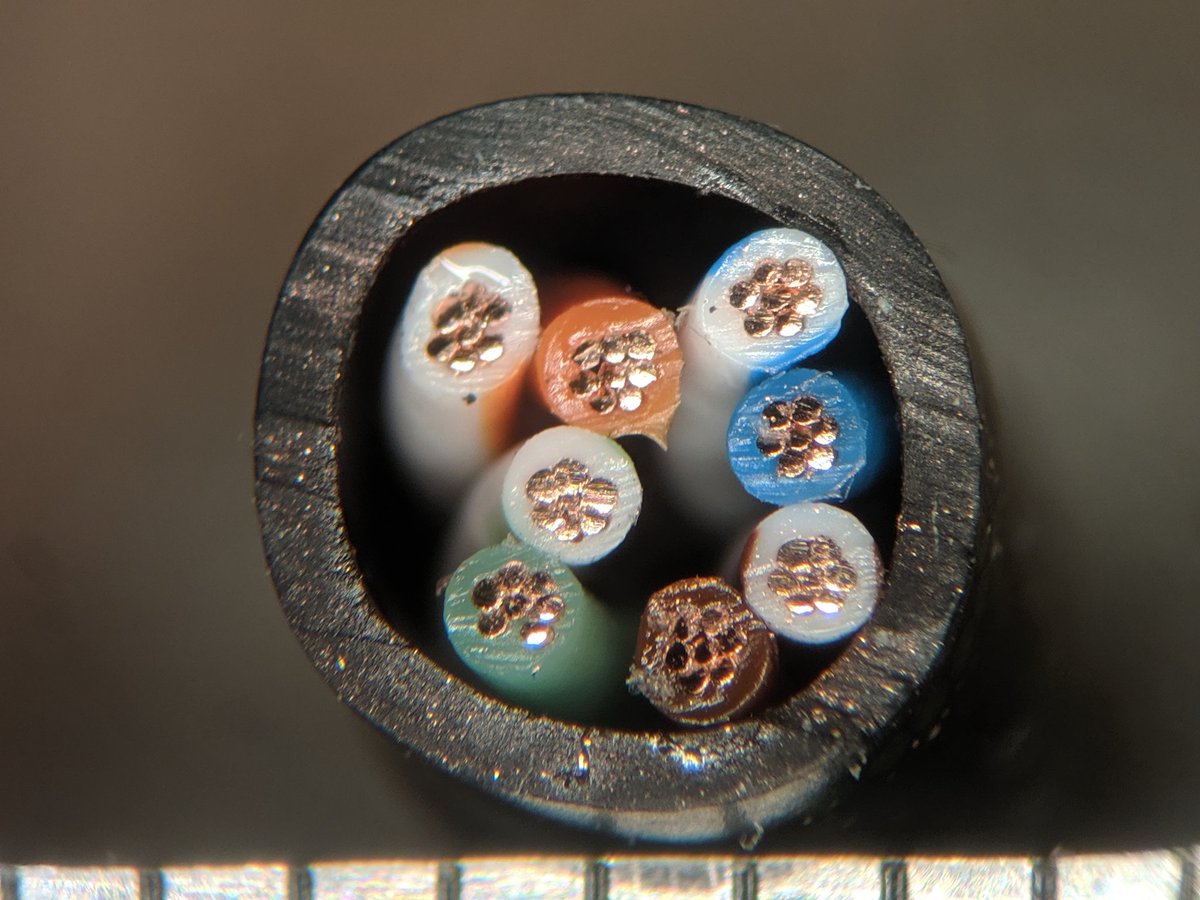
time to cut some network cables in half! here's a cat5e patch cable.  (thread)pic.twitter.com/FqFTFo42j2
(thread)pic.twitter.com/FqFTFo42j2
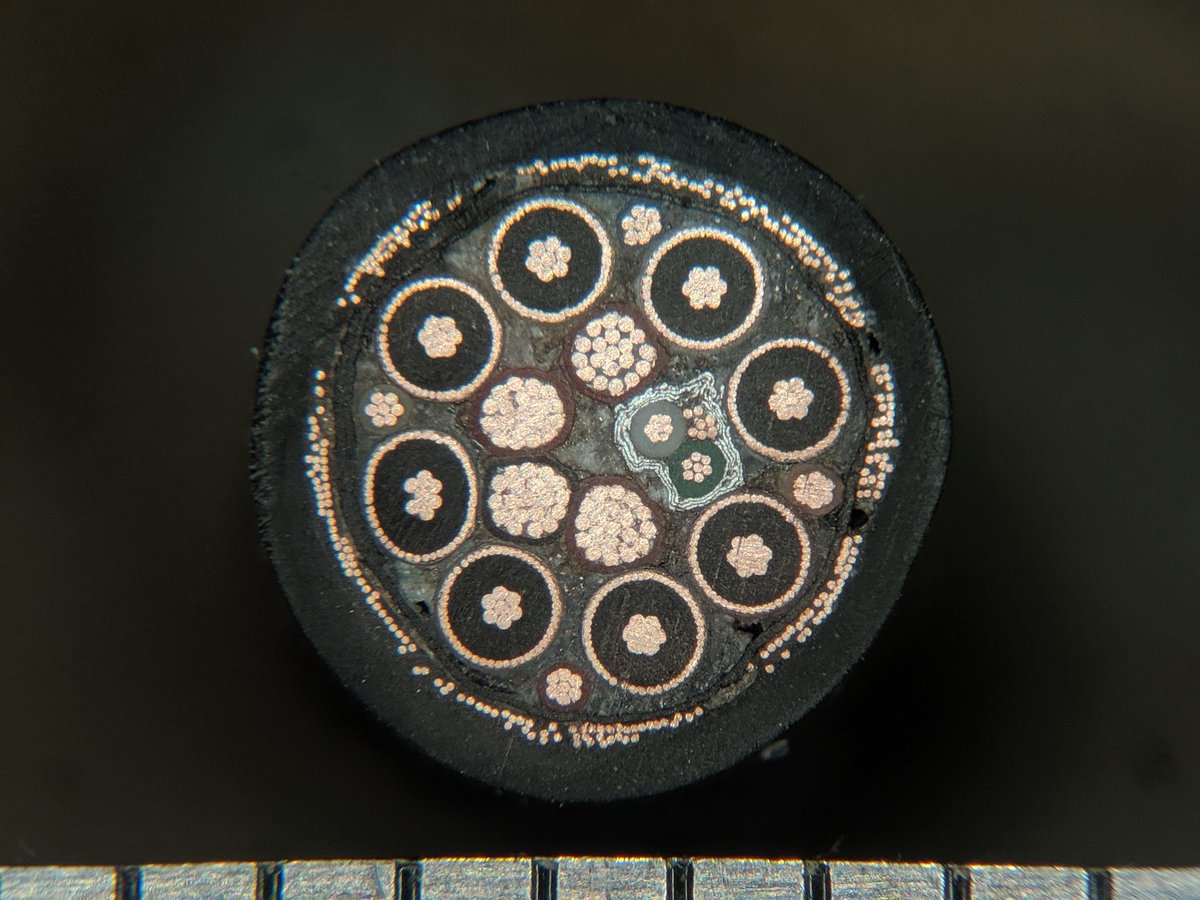
this is a cross section of a USB-C cable. it's different than the other USB-C cable that i sectioned earlier!pic.twitter.com/rhFsaHdpr1
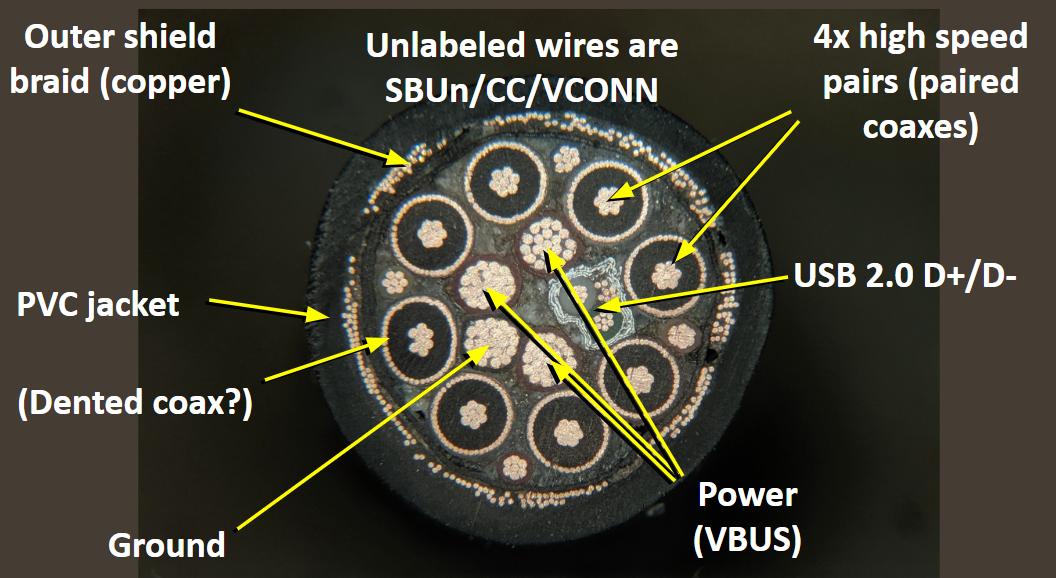
annotated USB-C cable cross section. this cable got beat up a bit; one of the micro coax cables has gotten dented or deformed. you can see it's messed with the stranding a bit.pic.twitter.com/9yfSucNxSJ
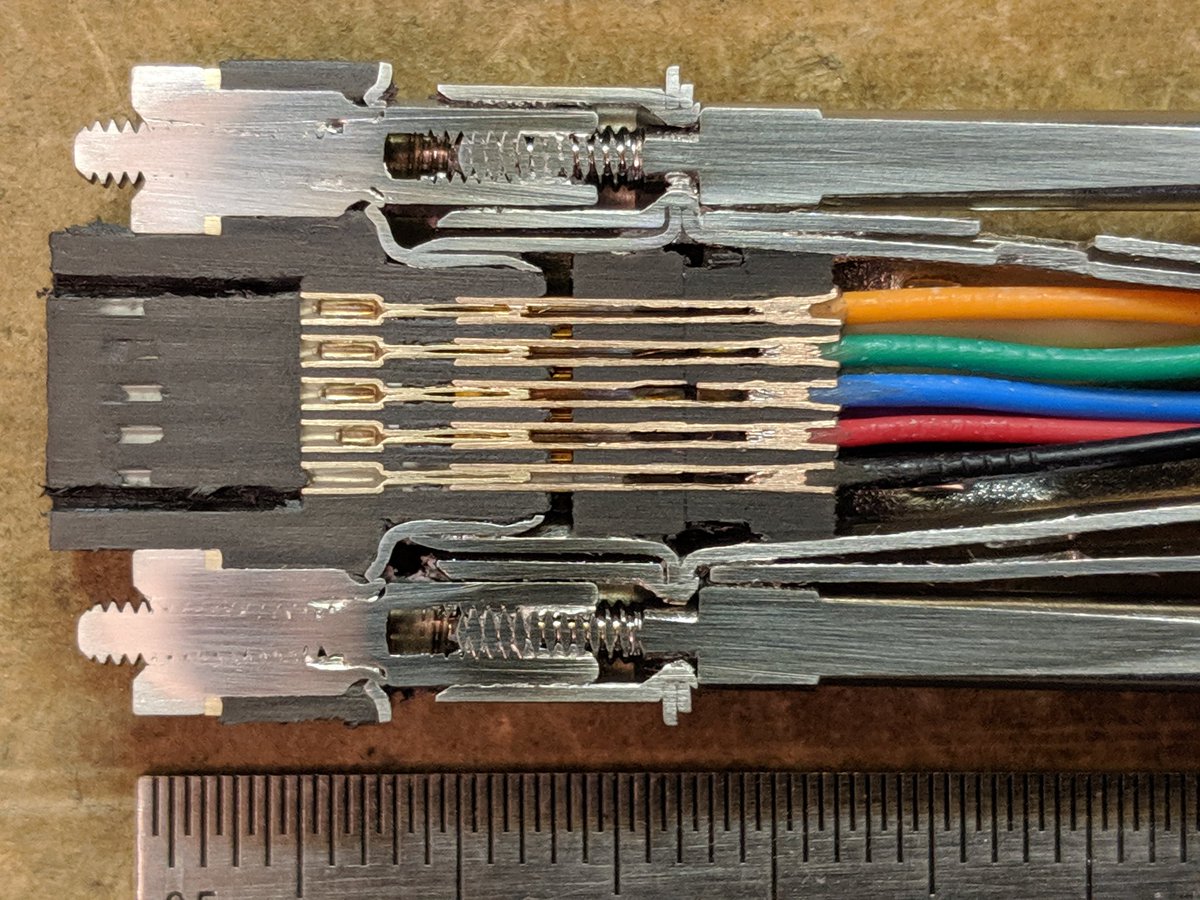
it's Friday, so take a break from work and look at this: a cross section of a Micro-D connector!pic.twitter.com/DQs3DmYnls
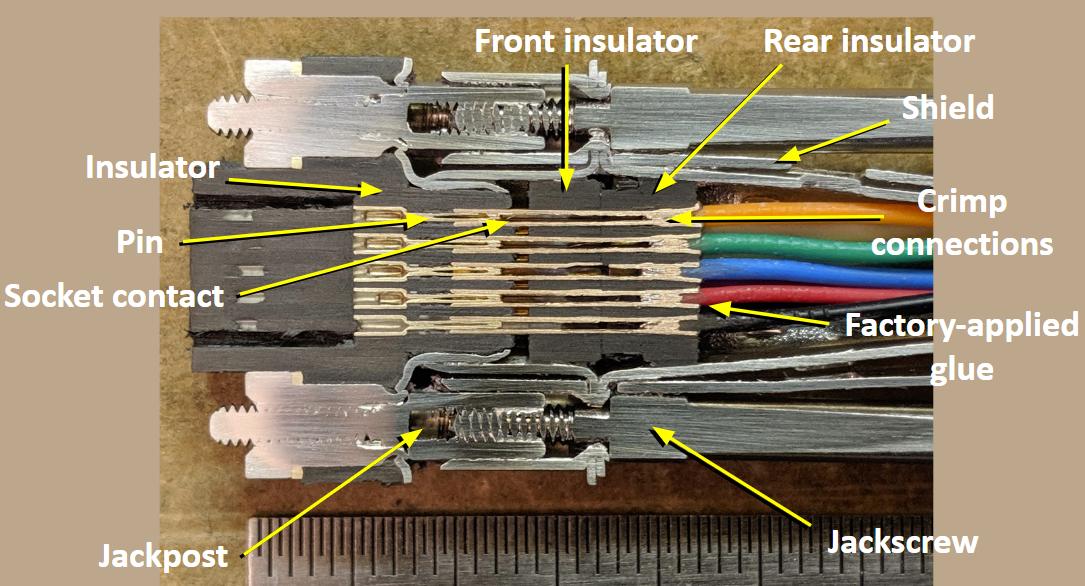
annotated version of the Micro-D connector cross section.pic.twitter.com/LHGH2kvFcO






